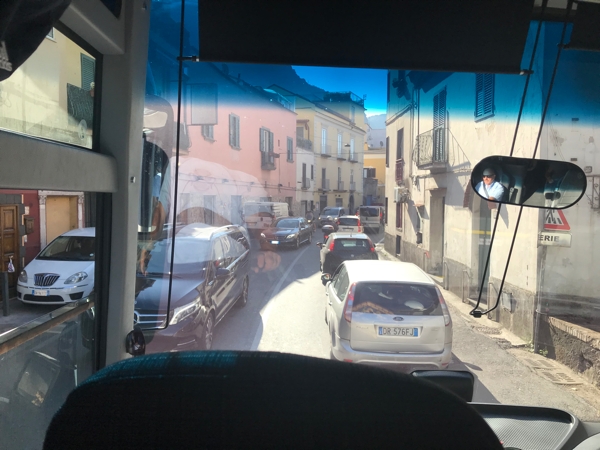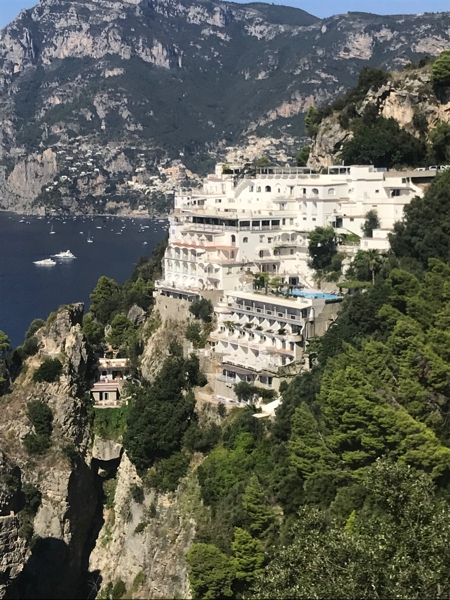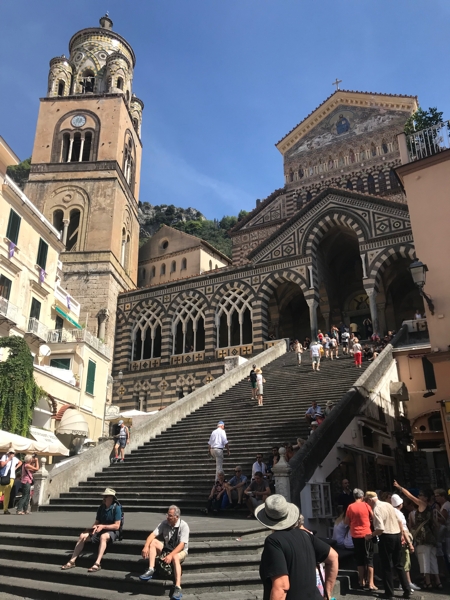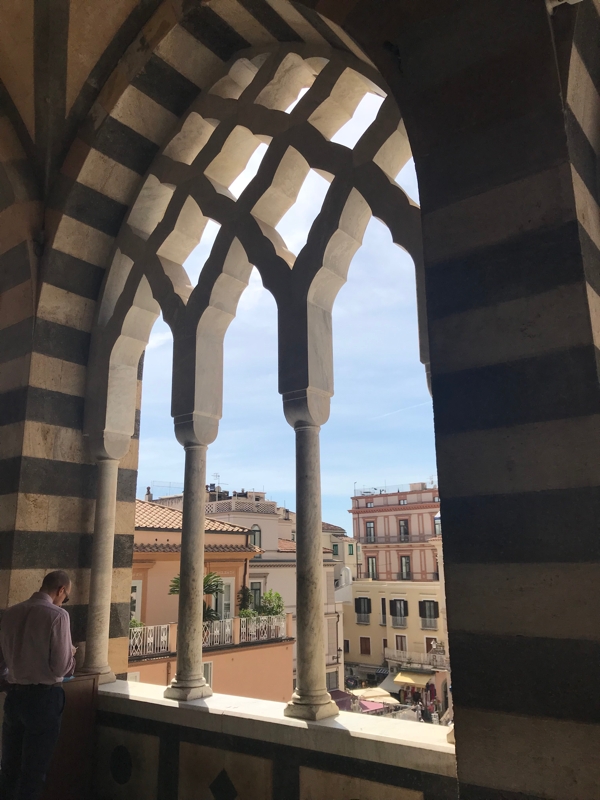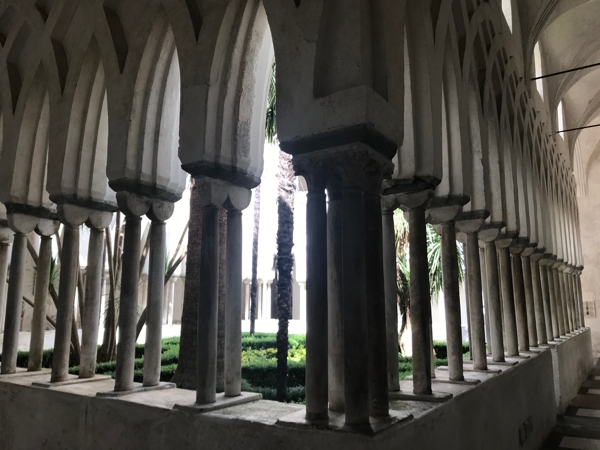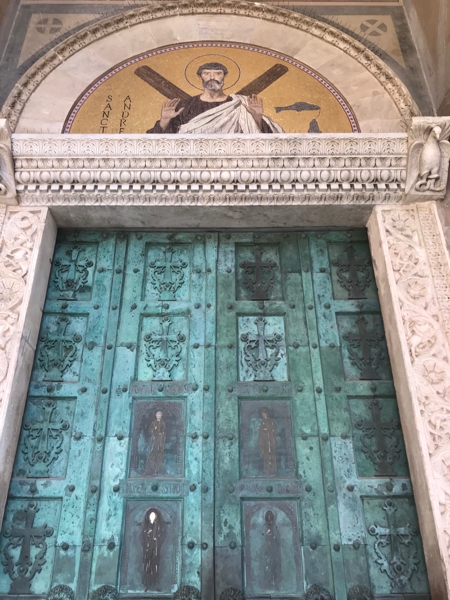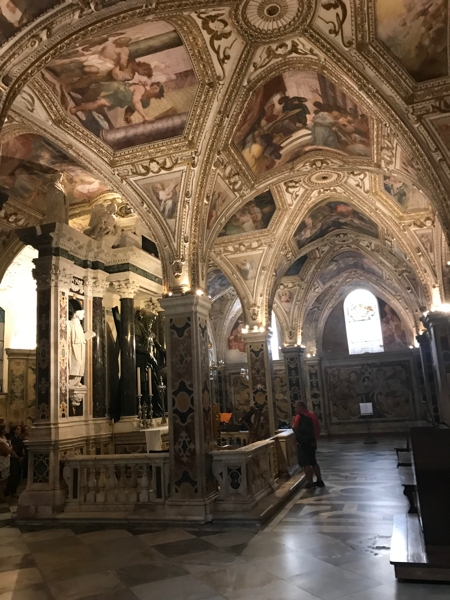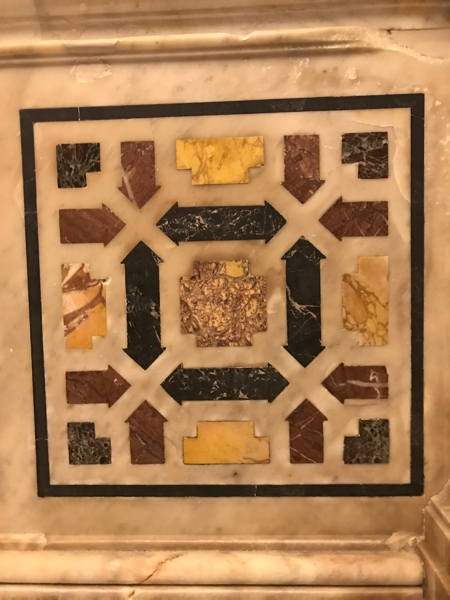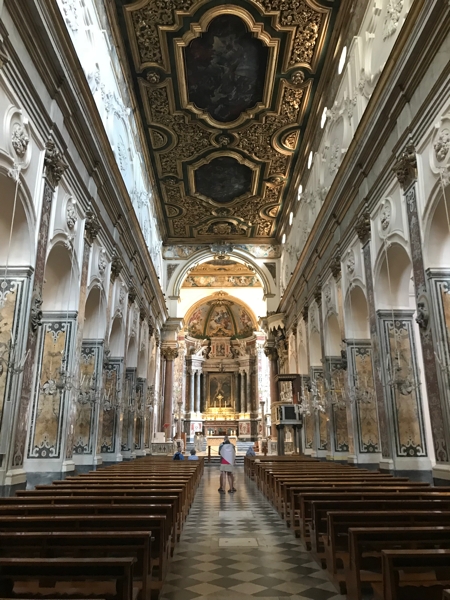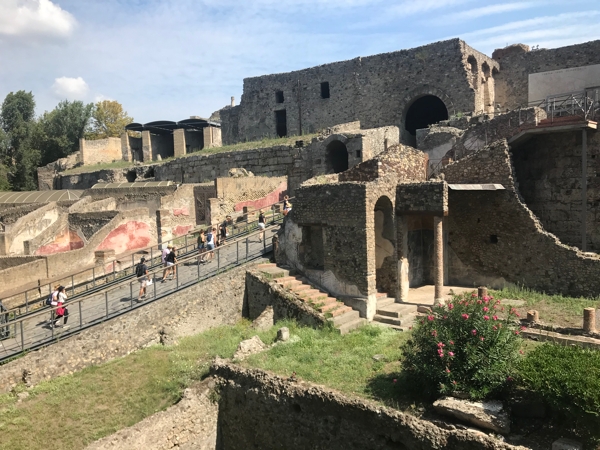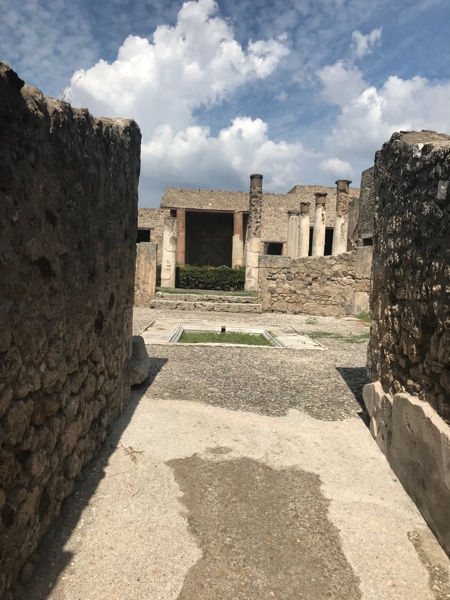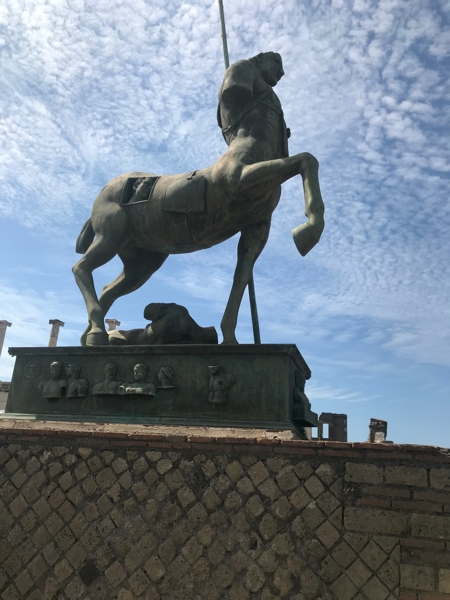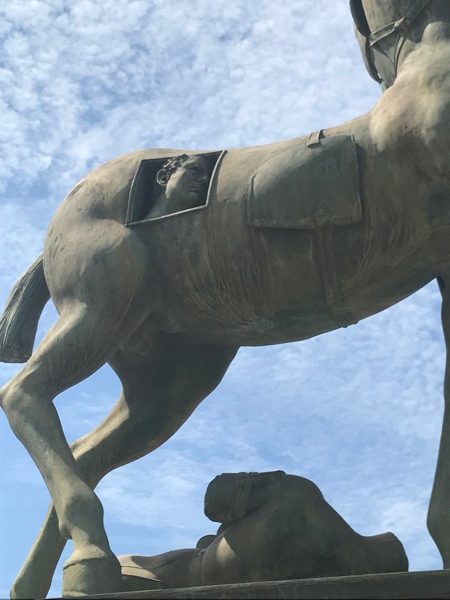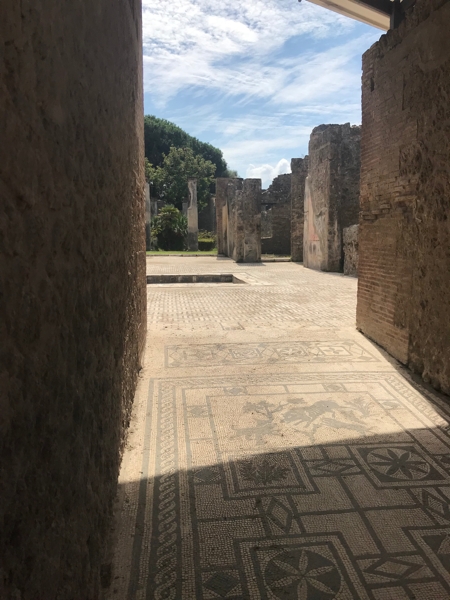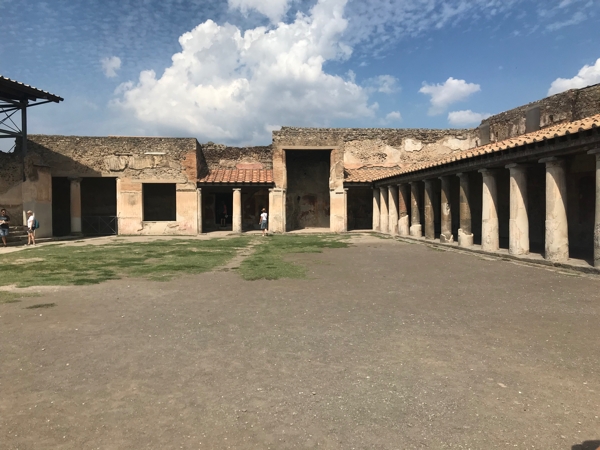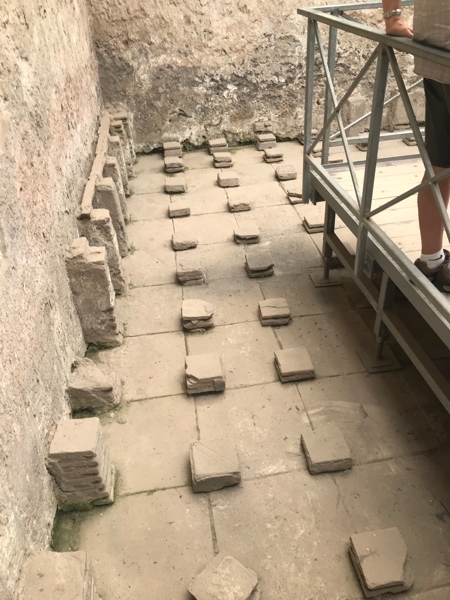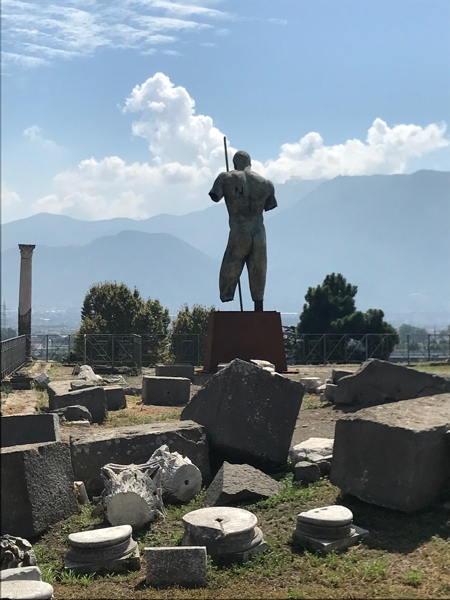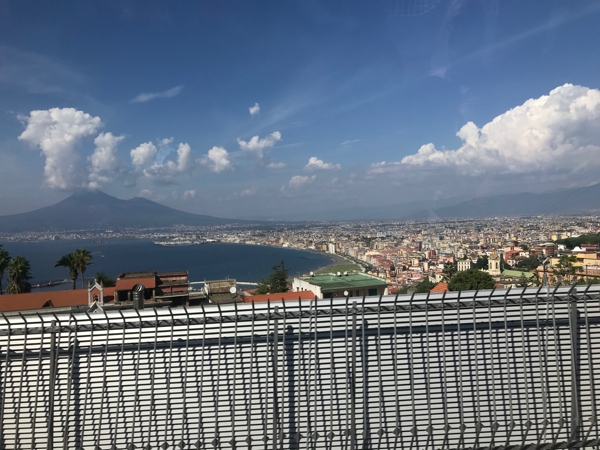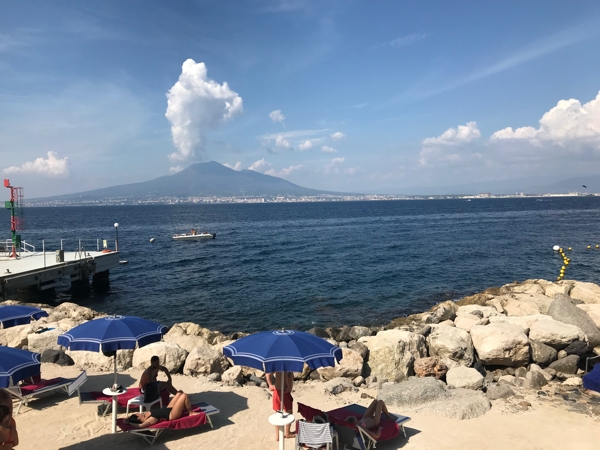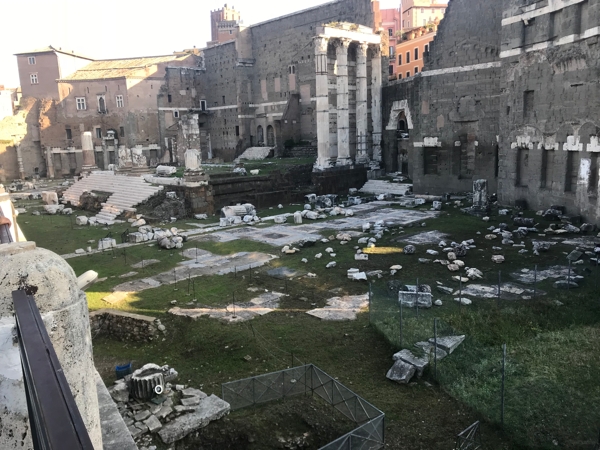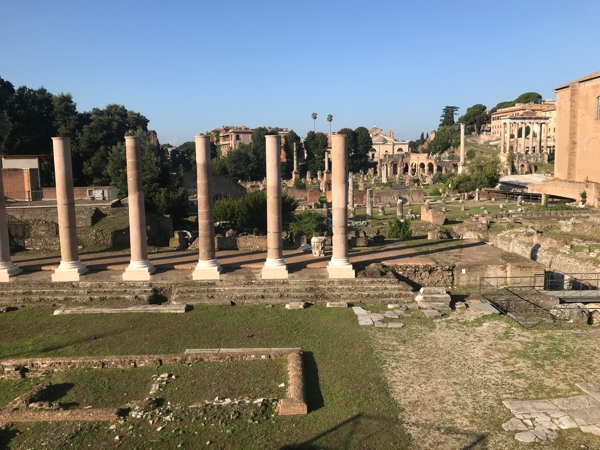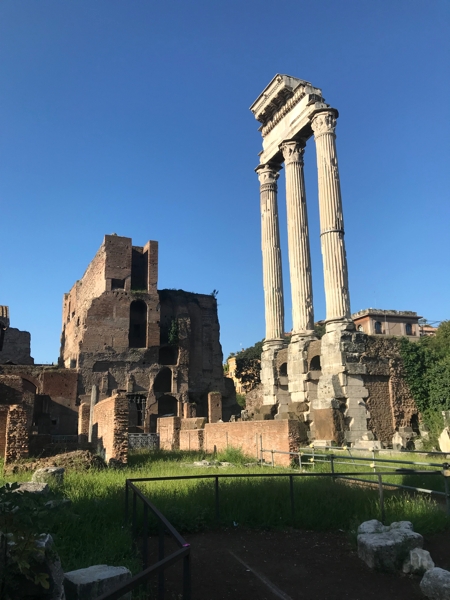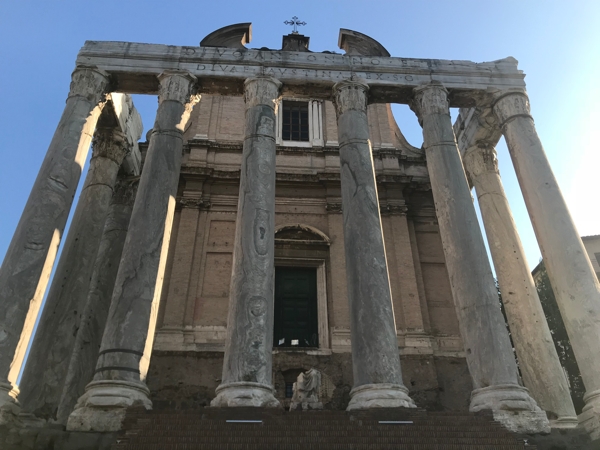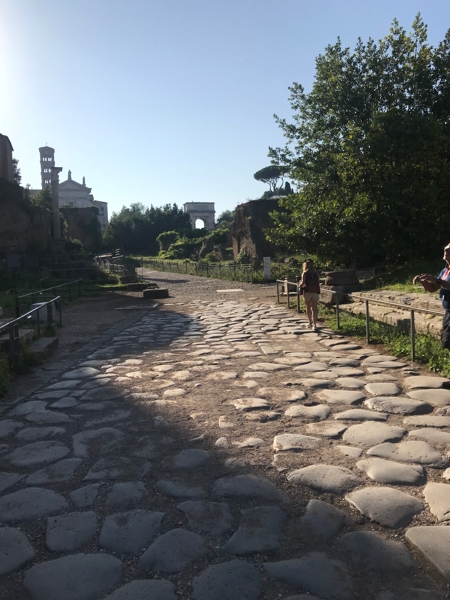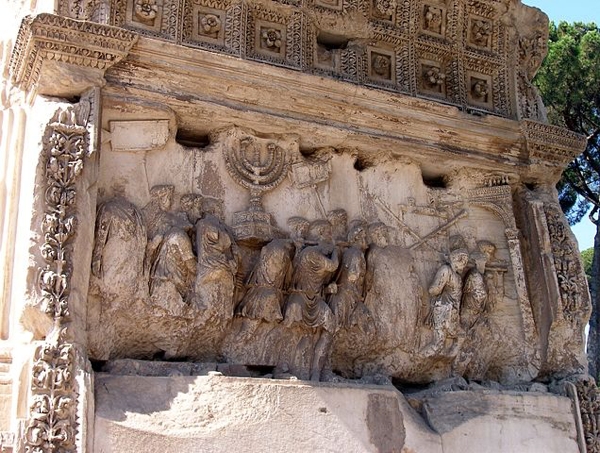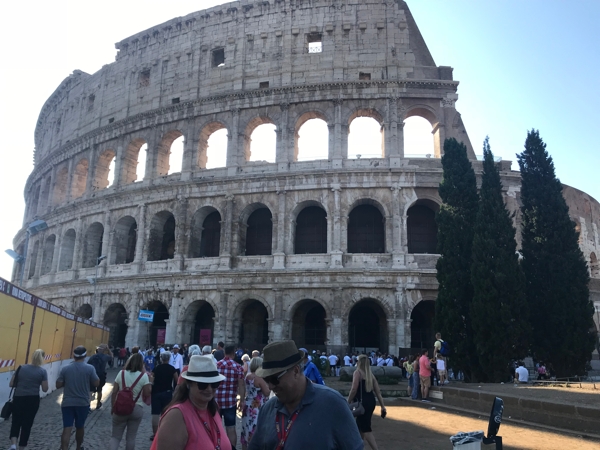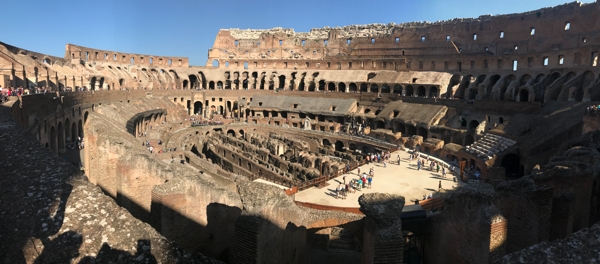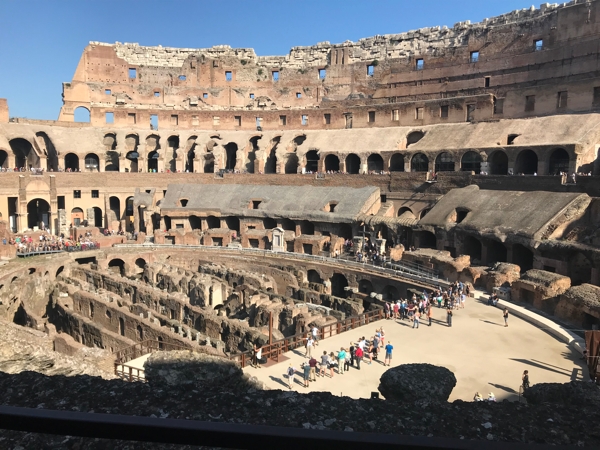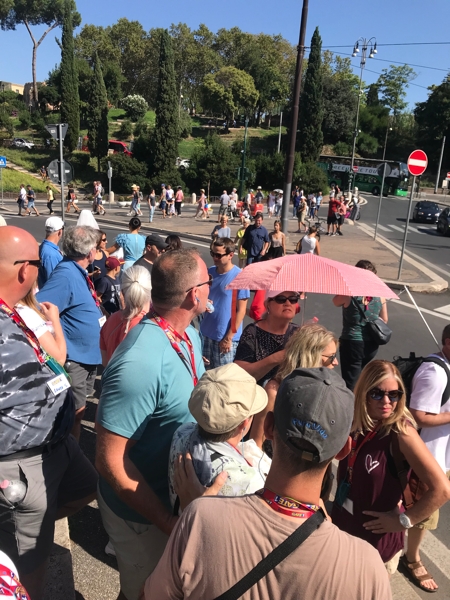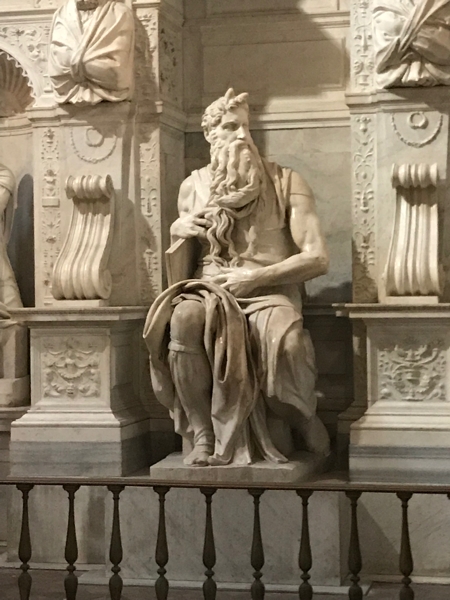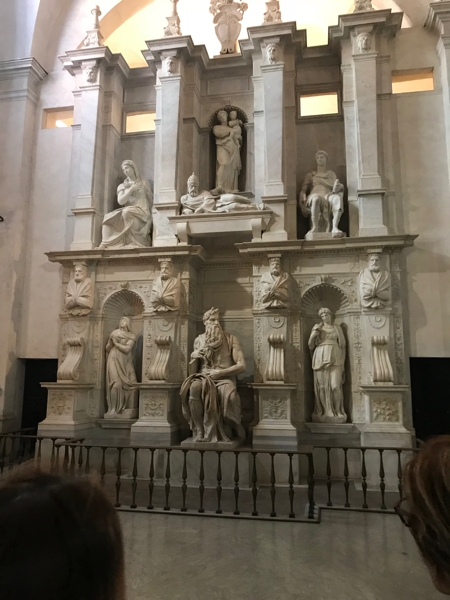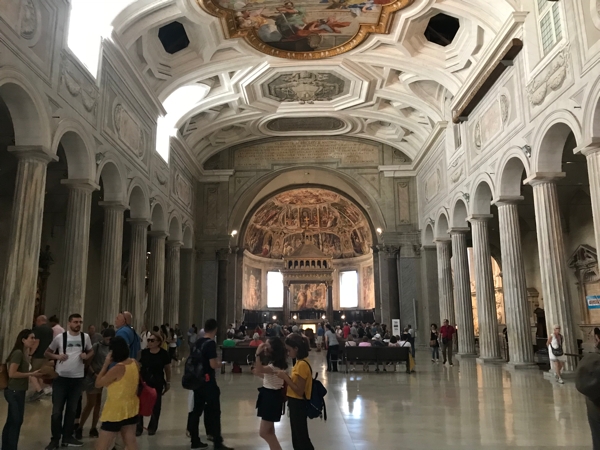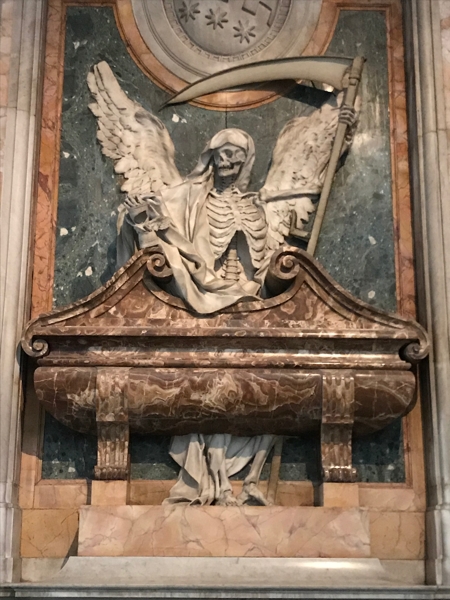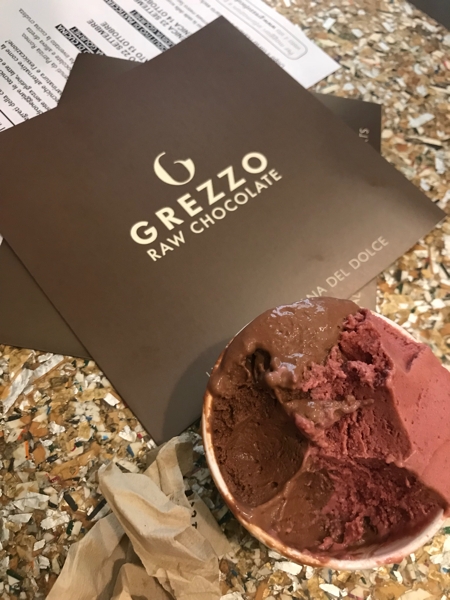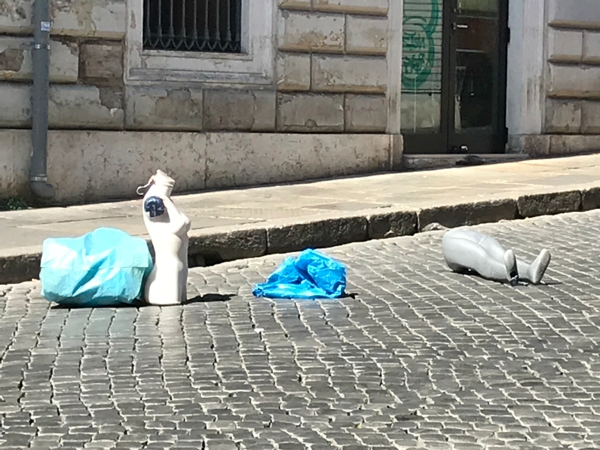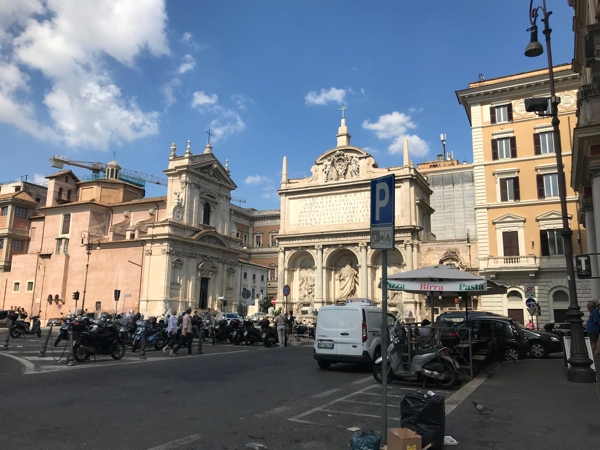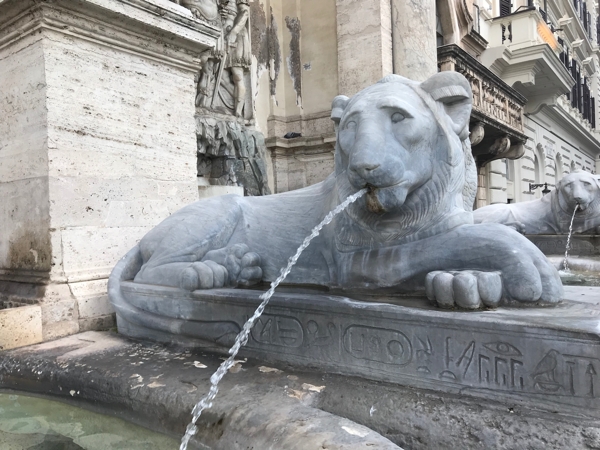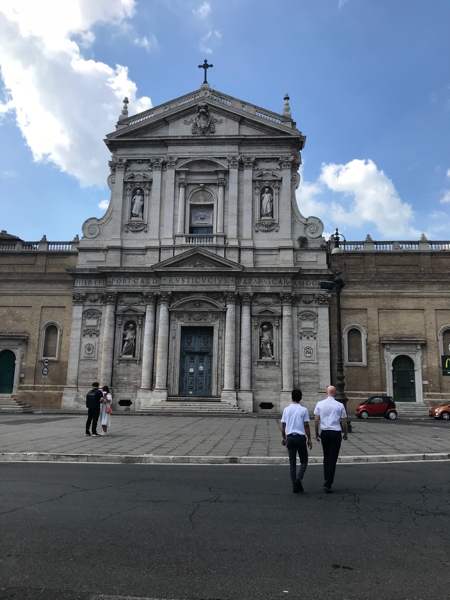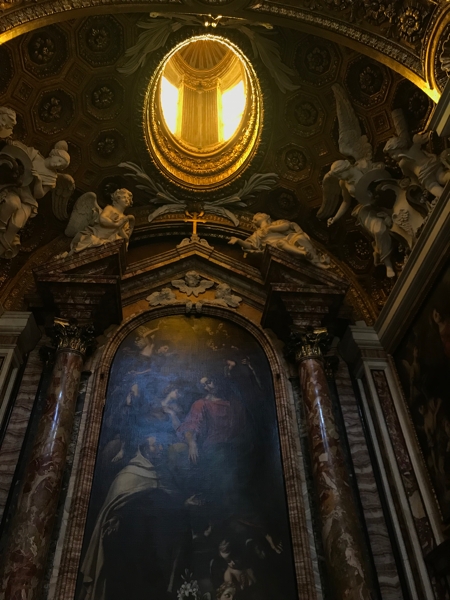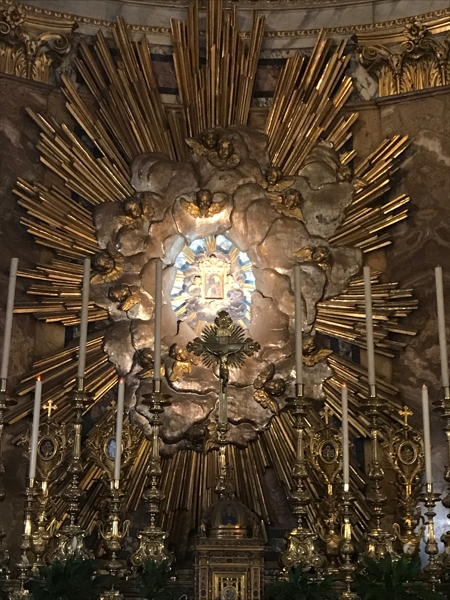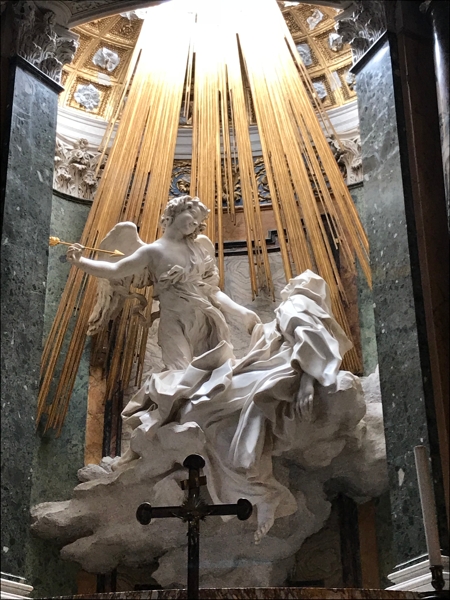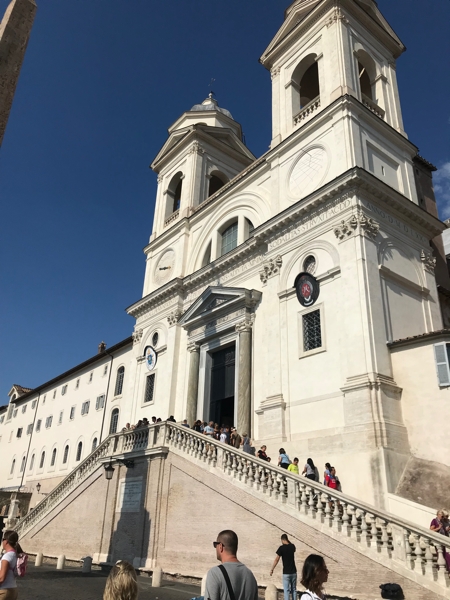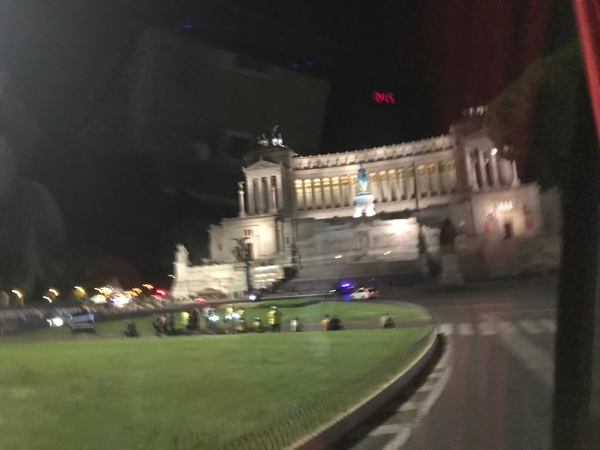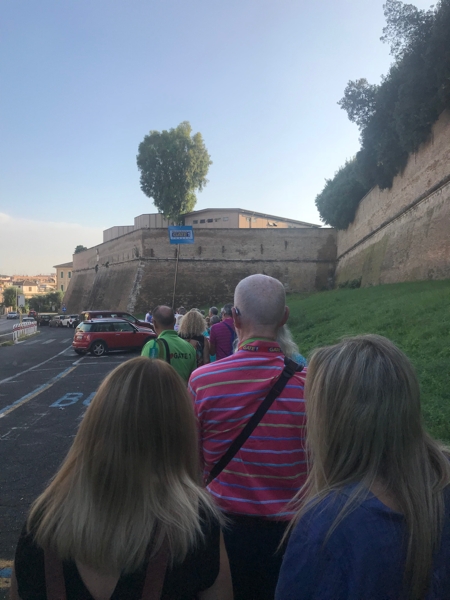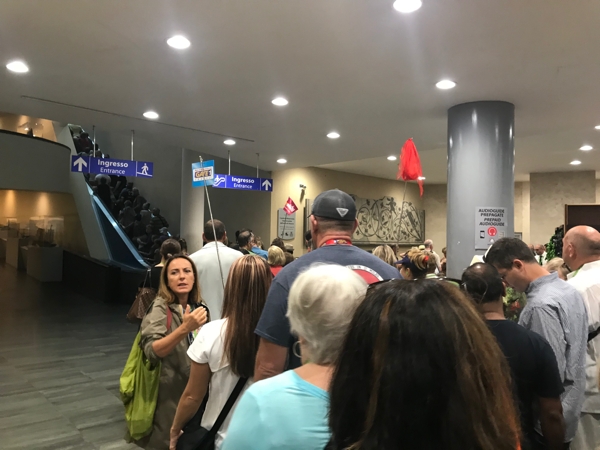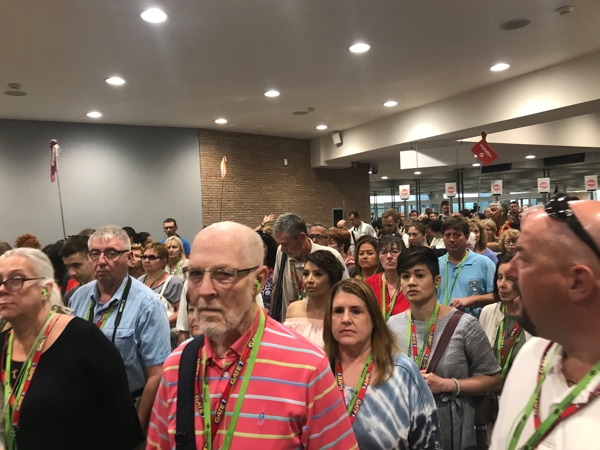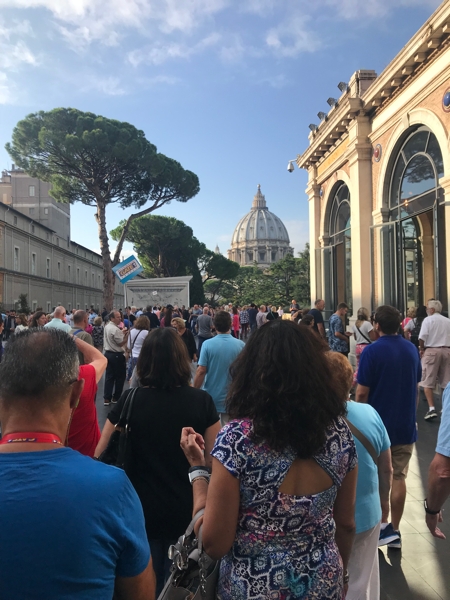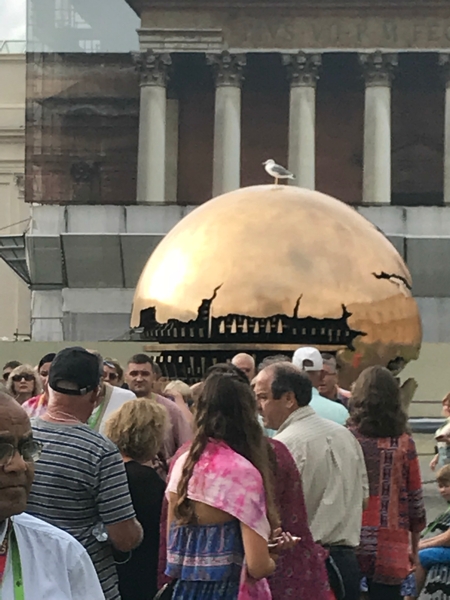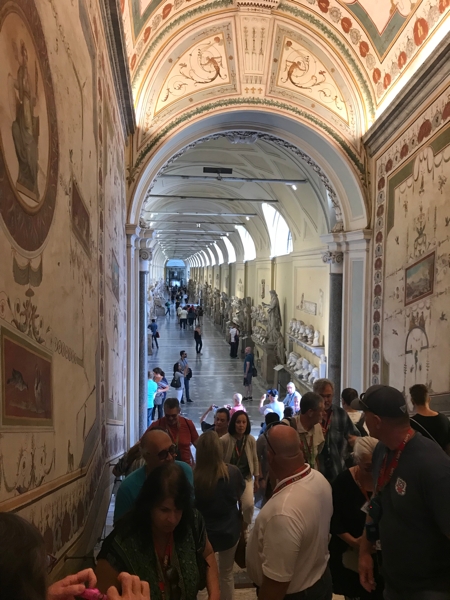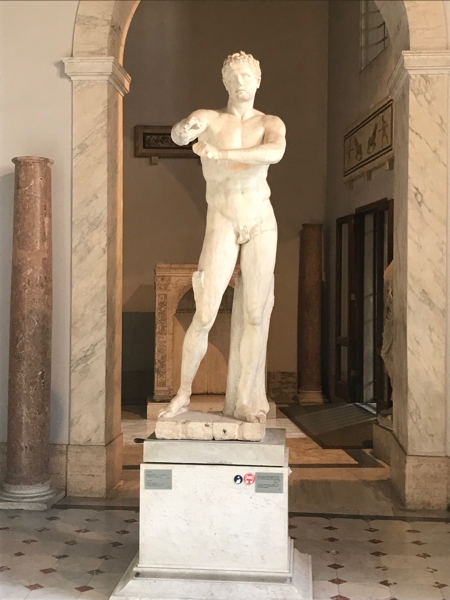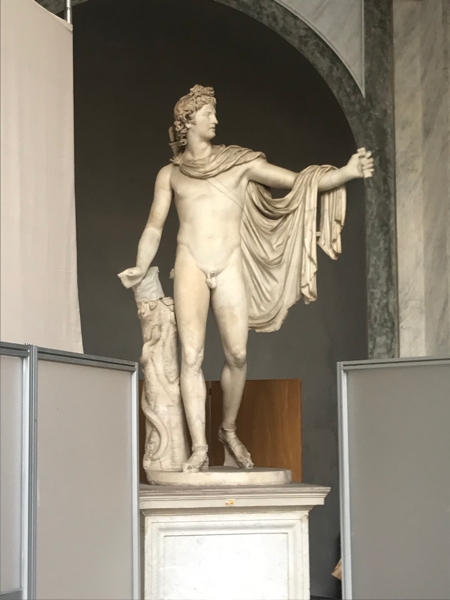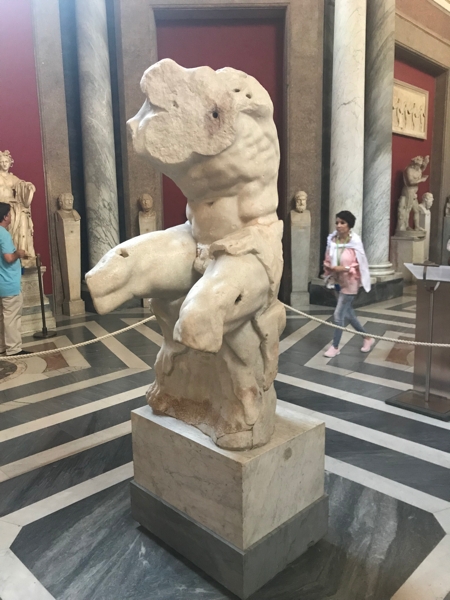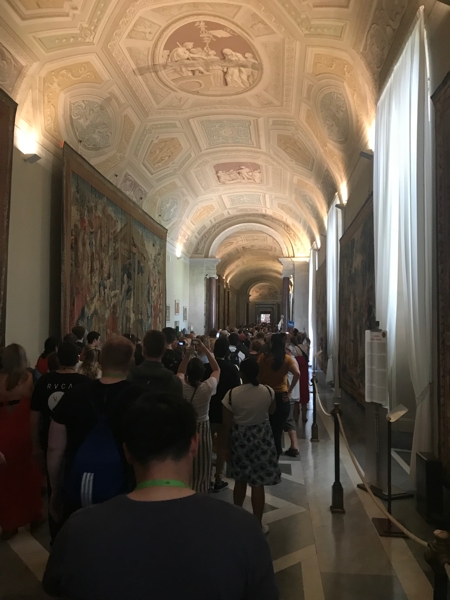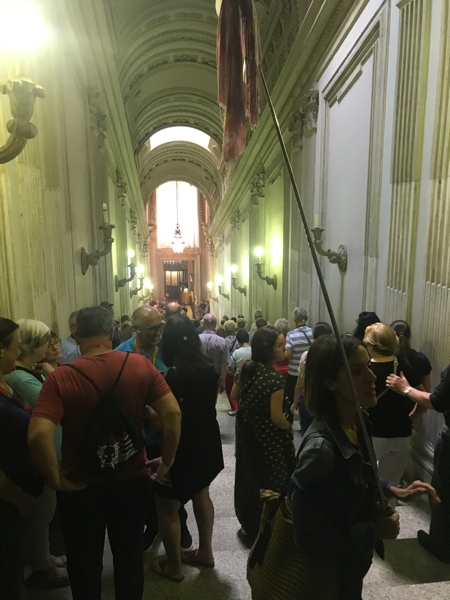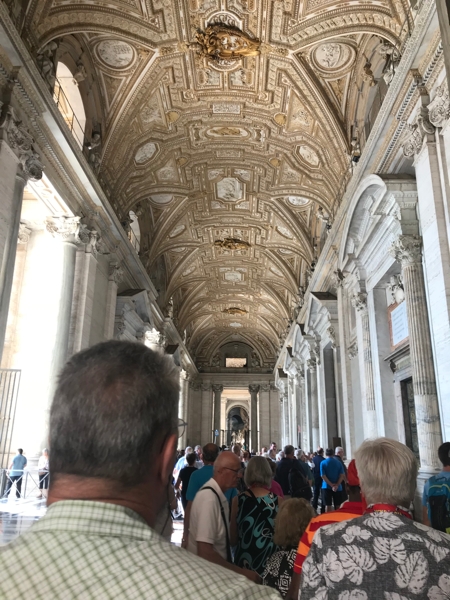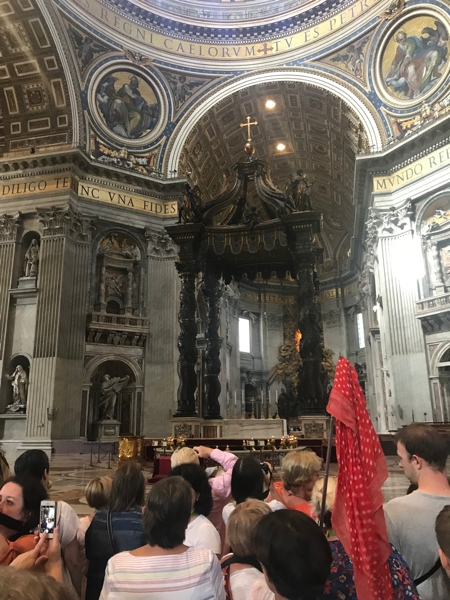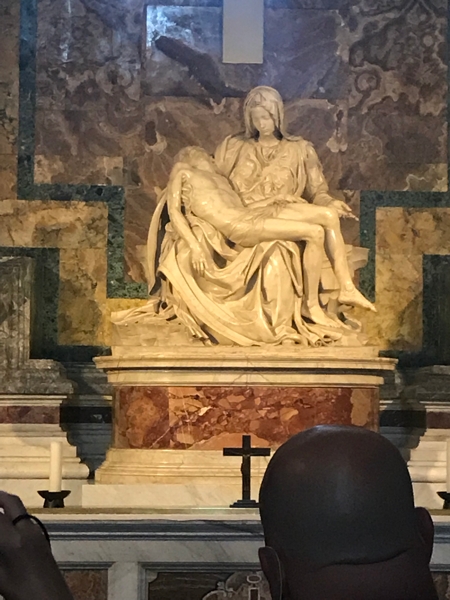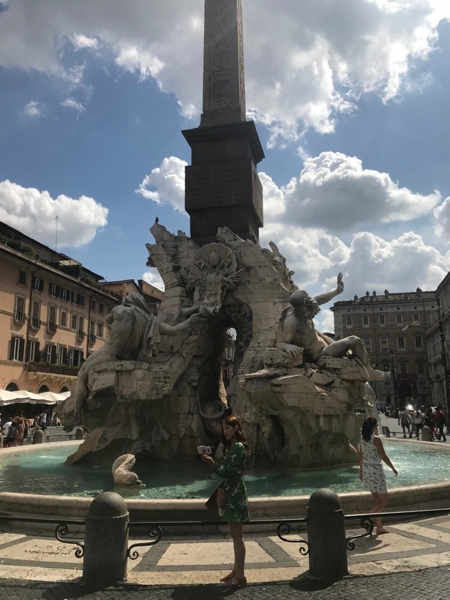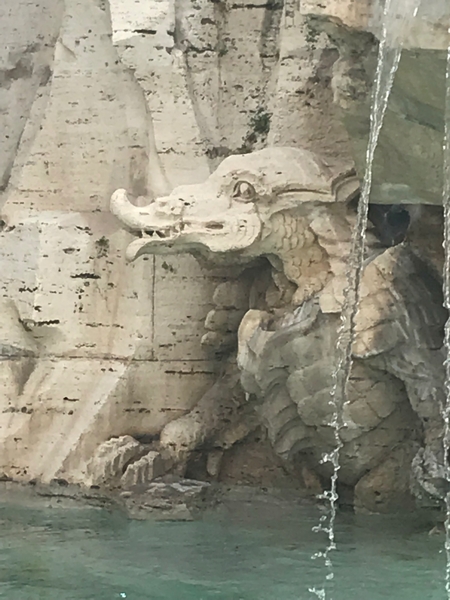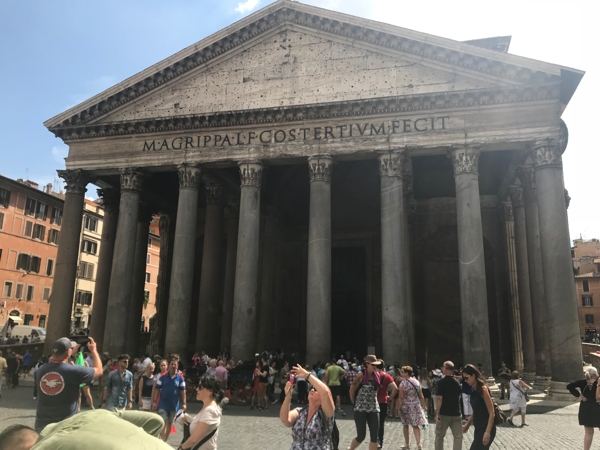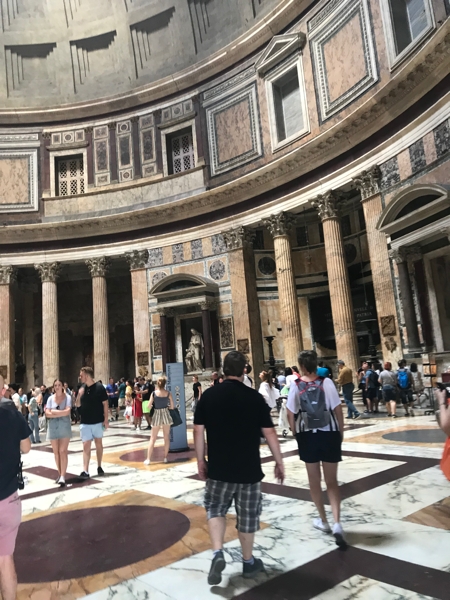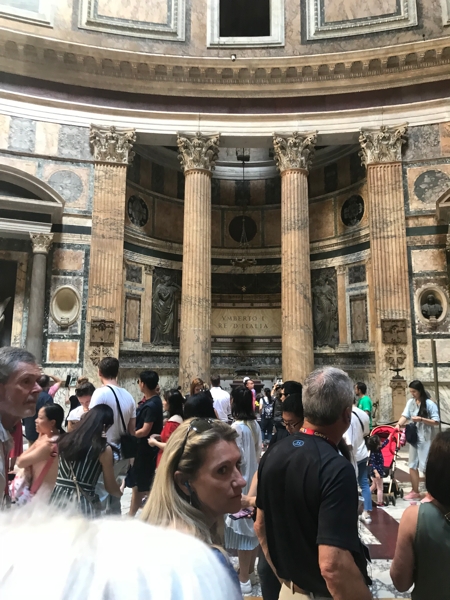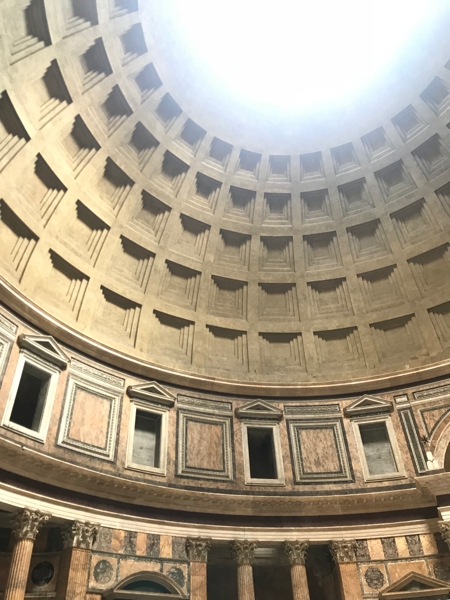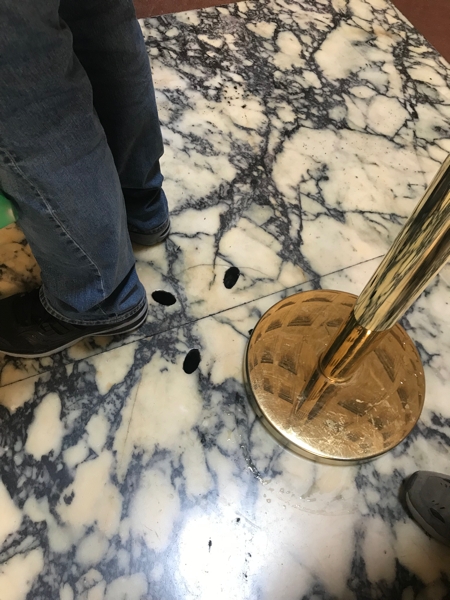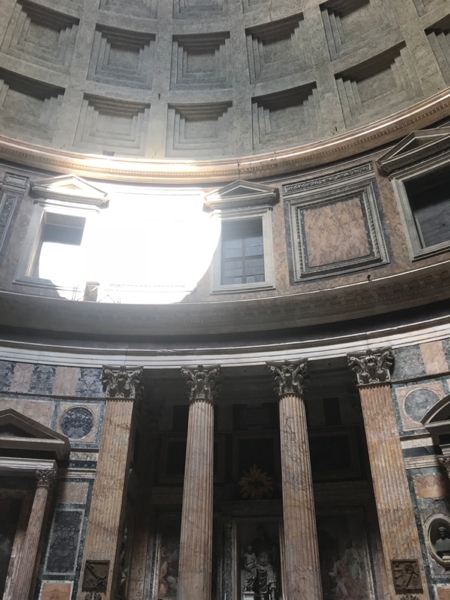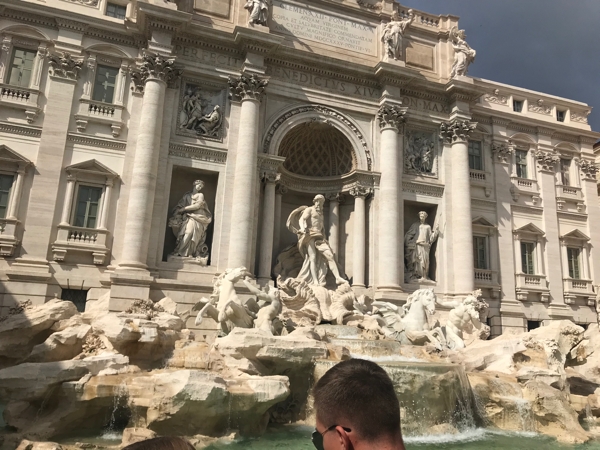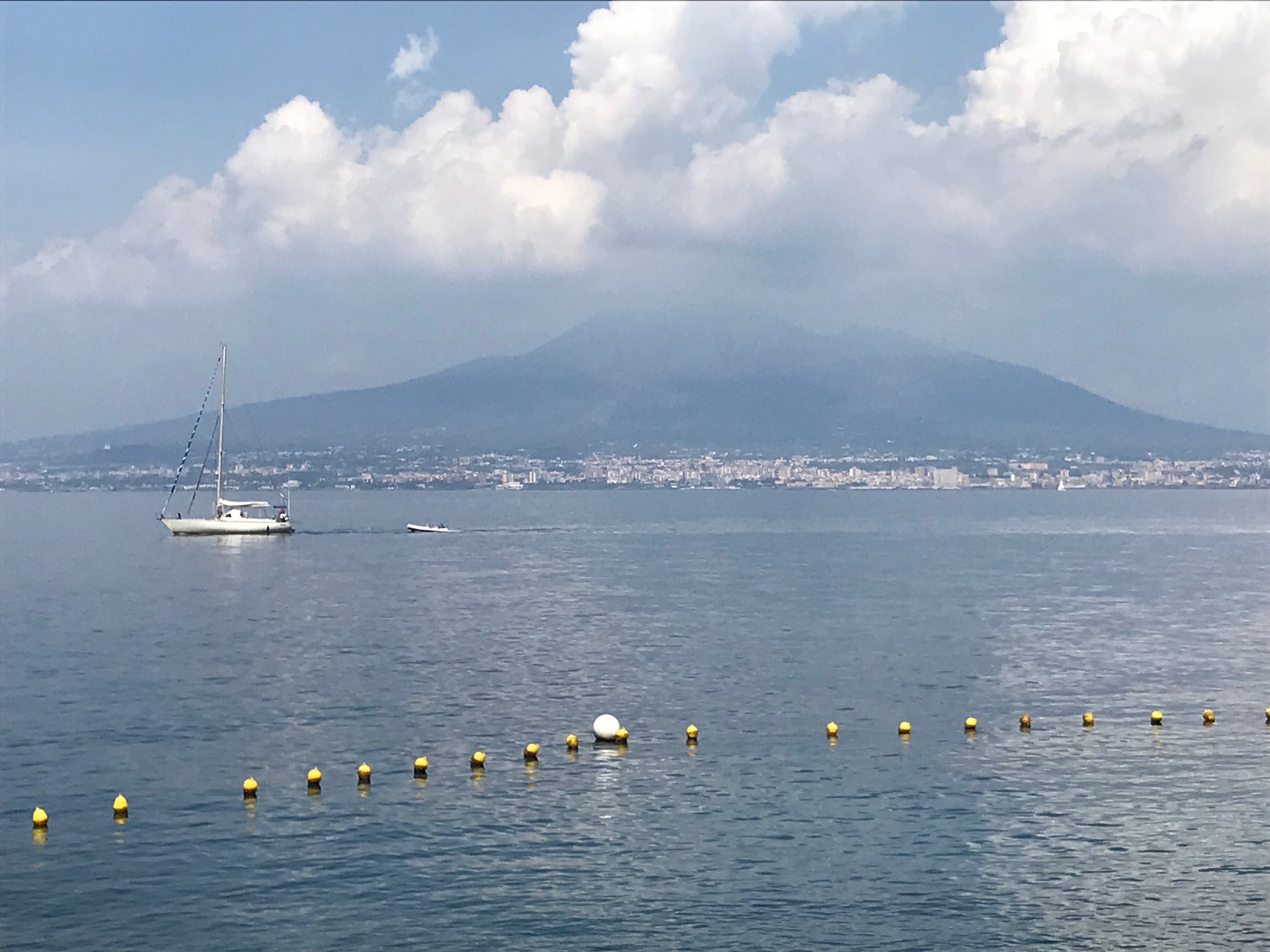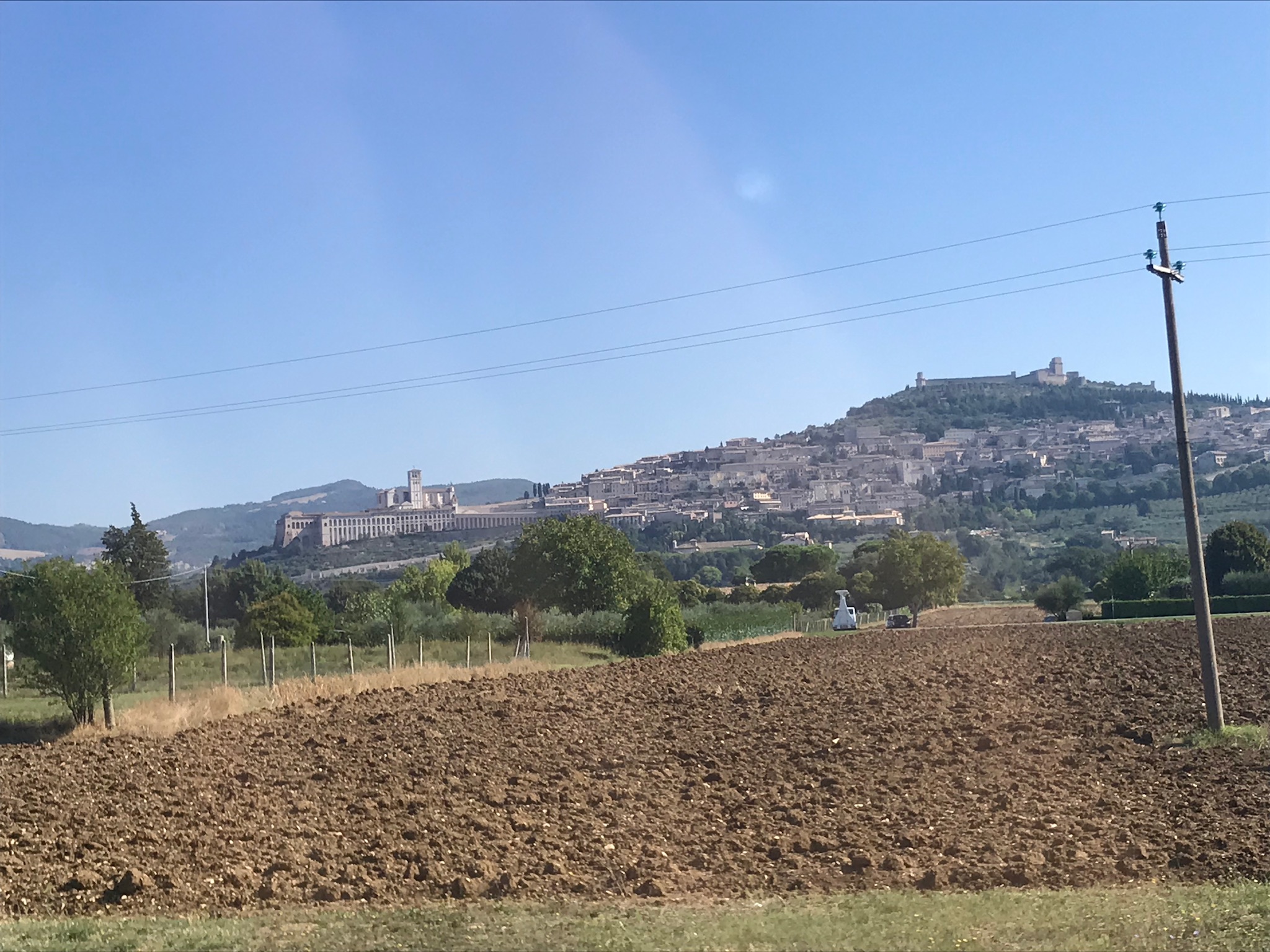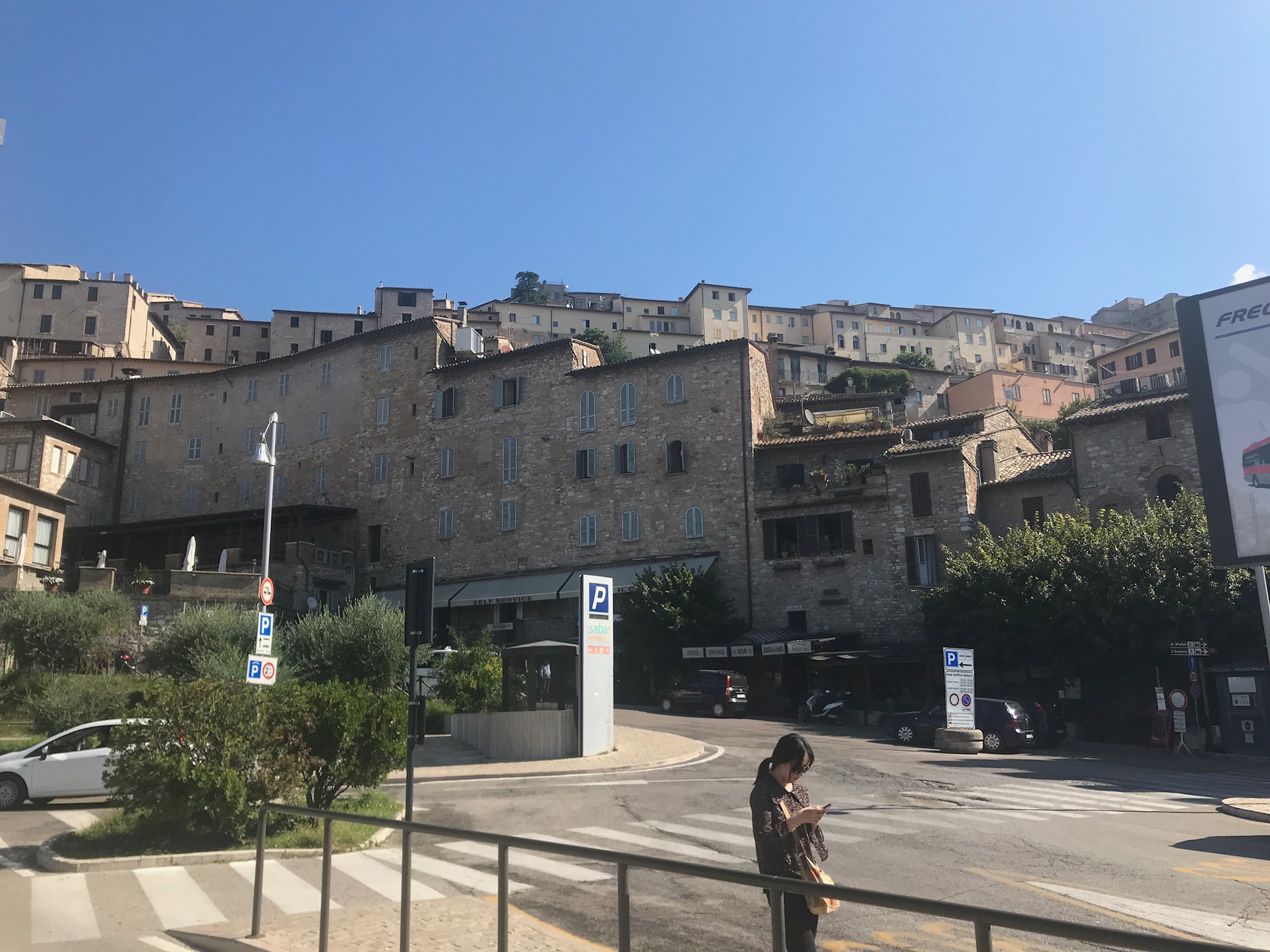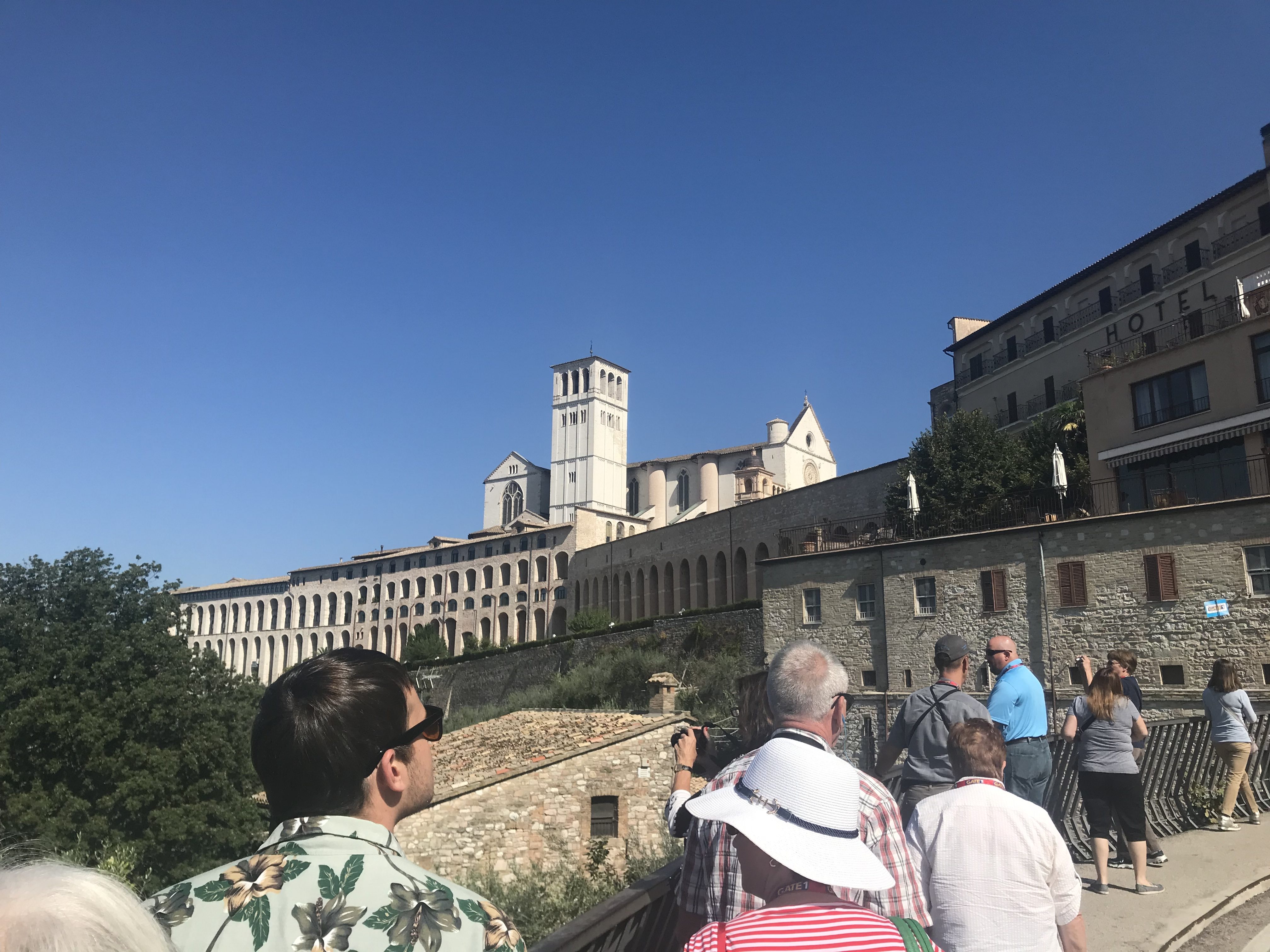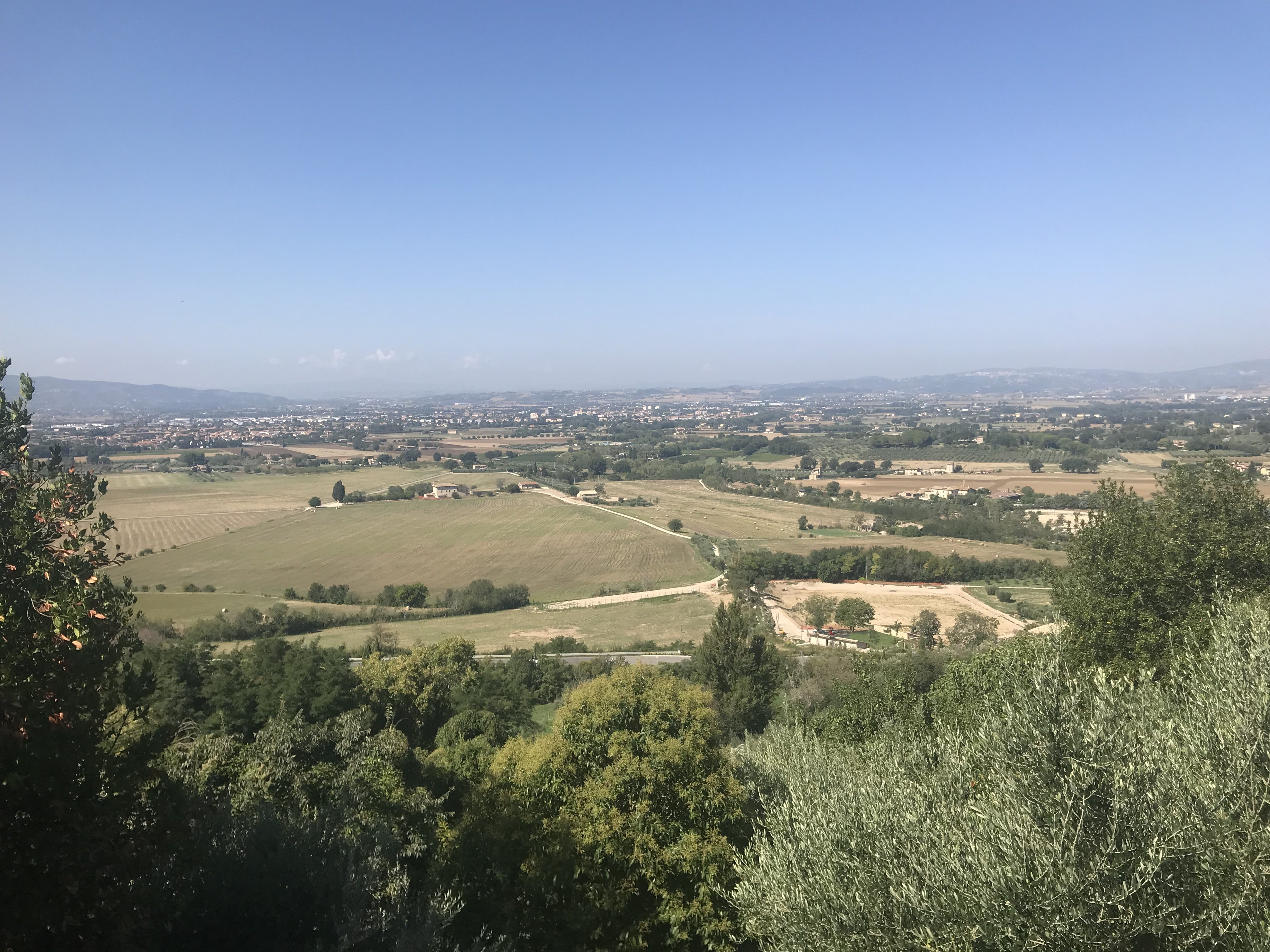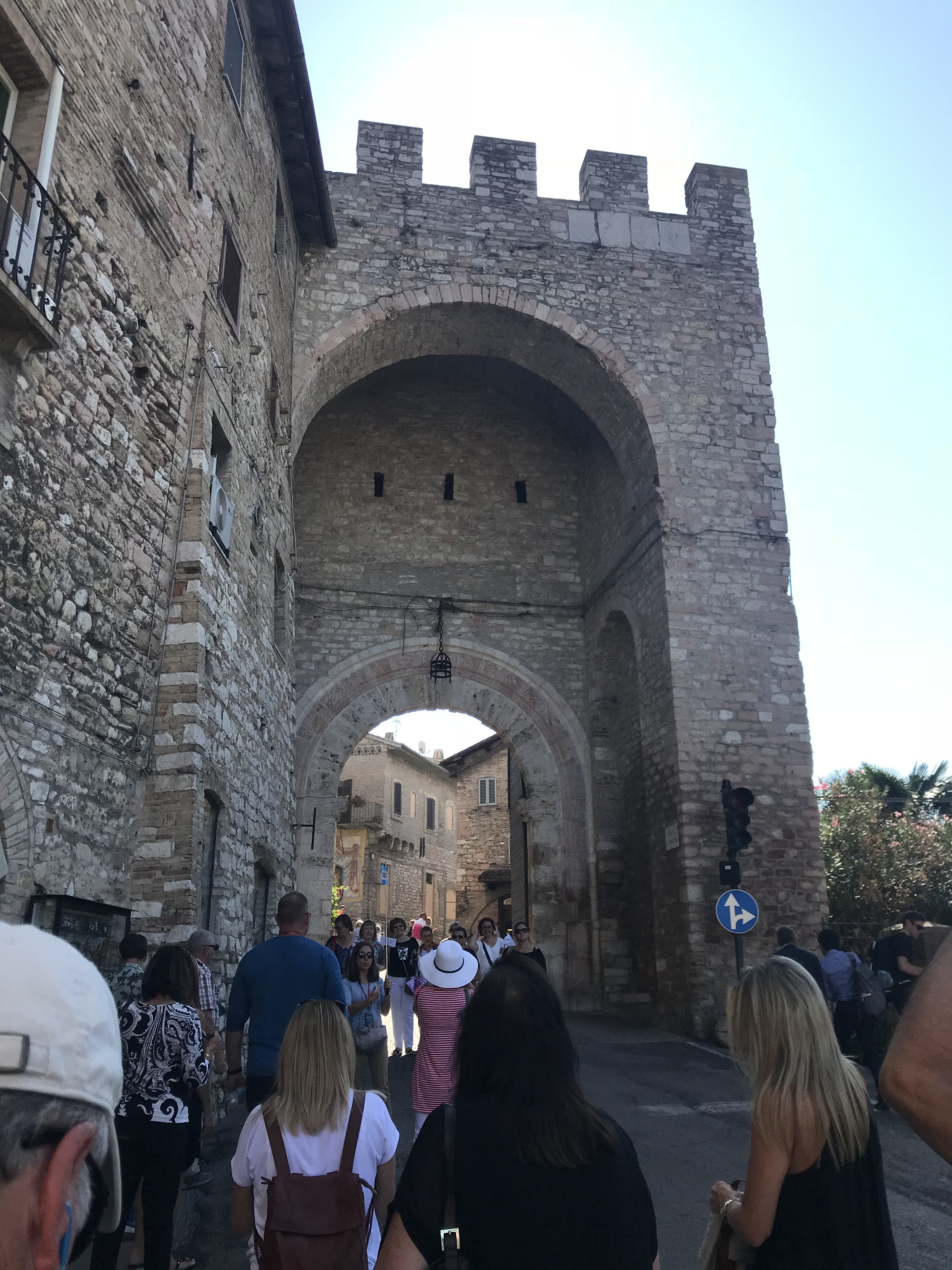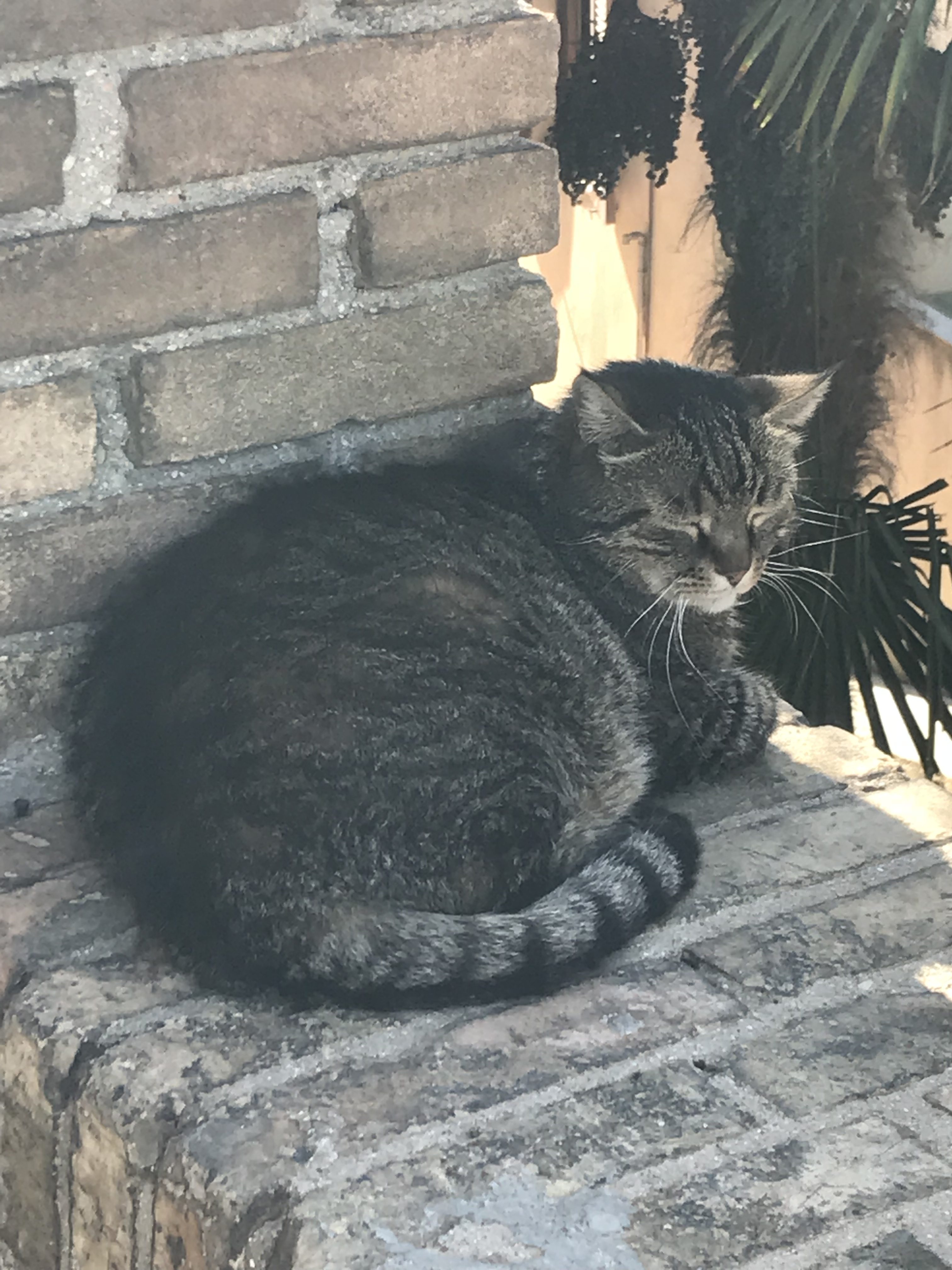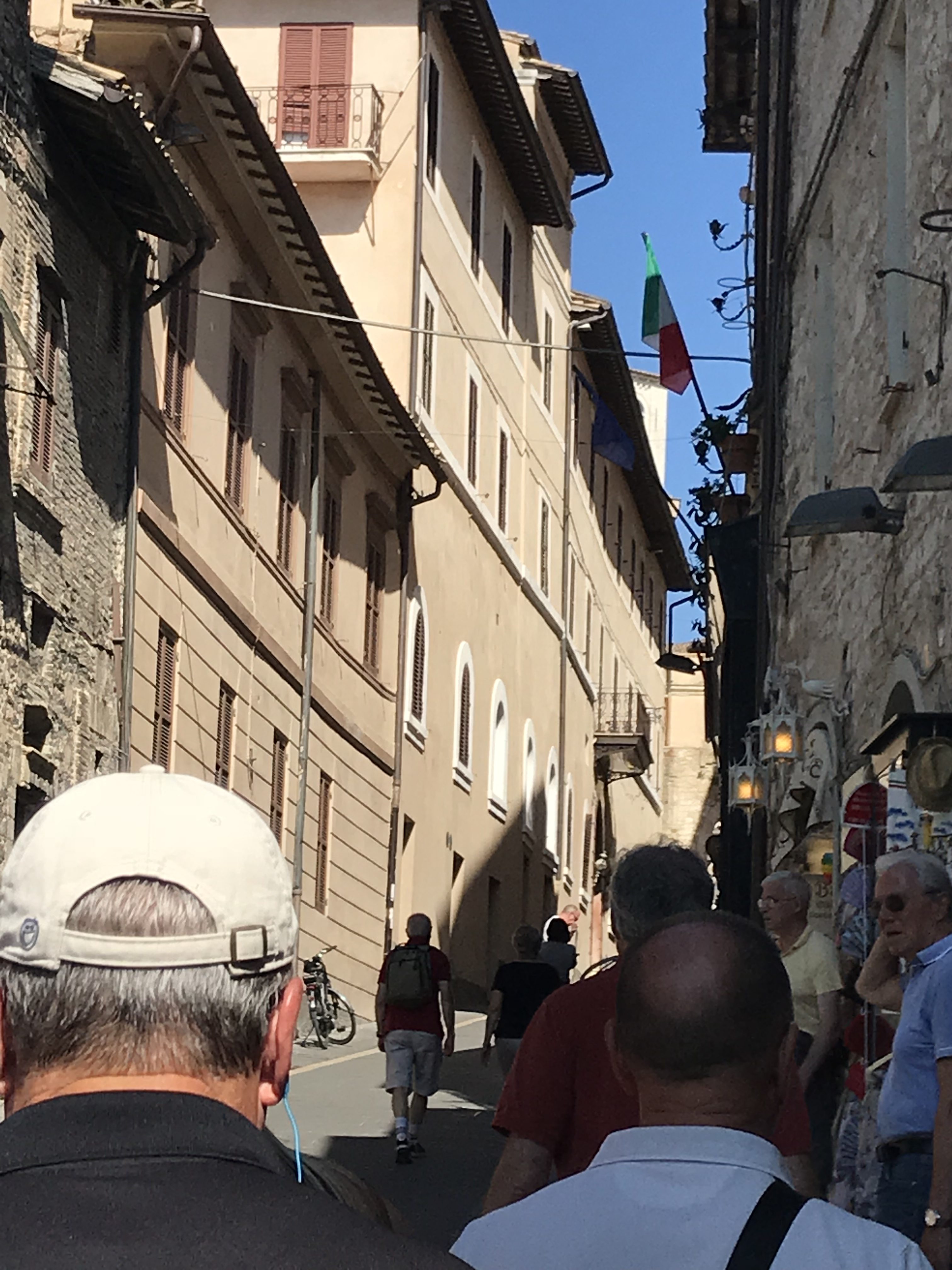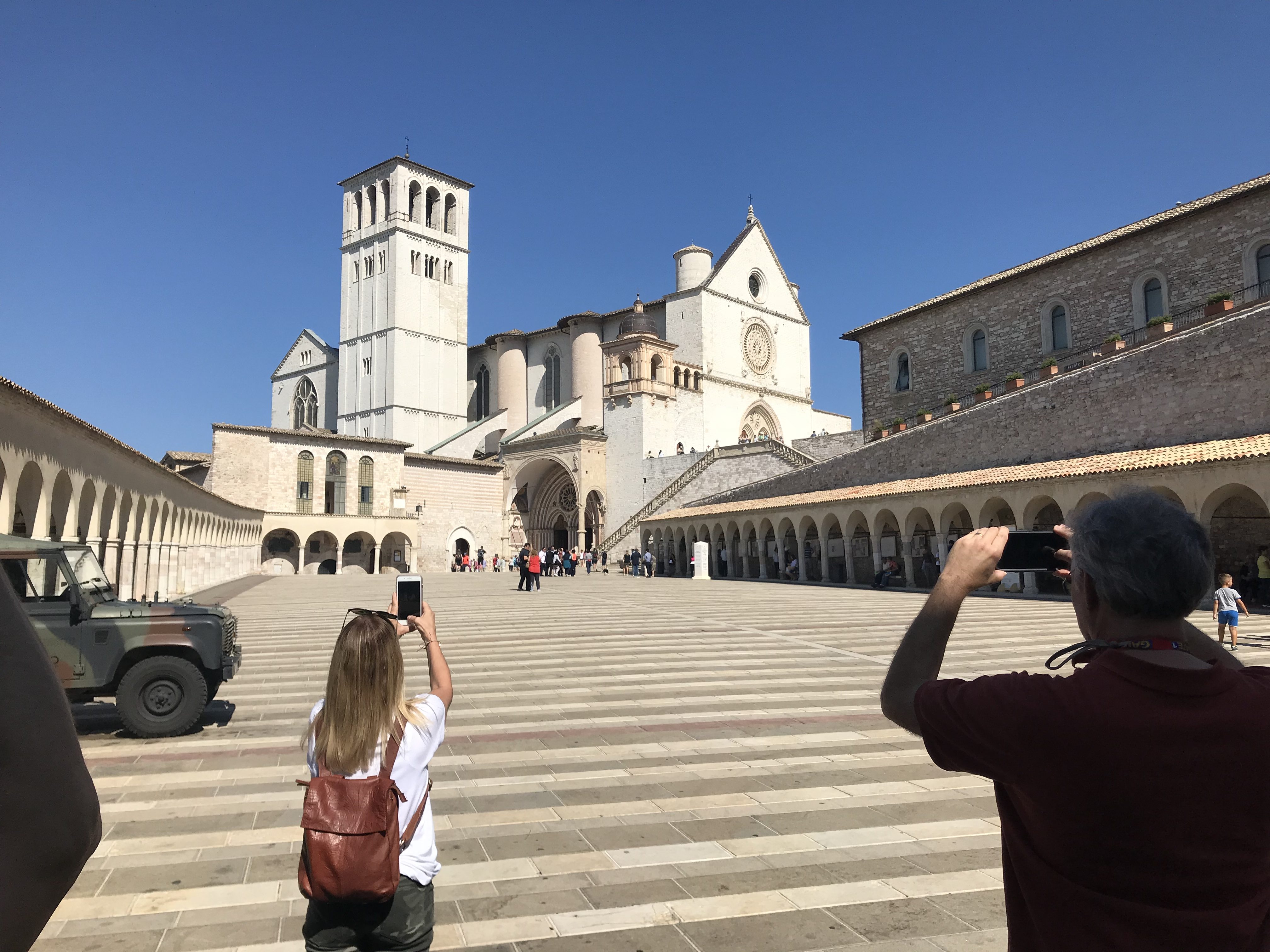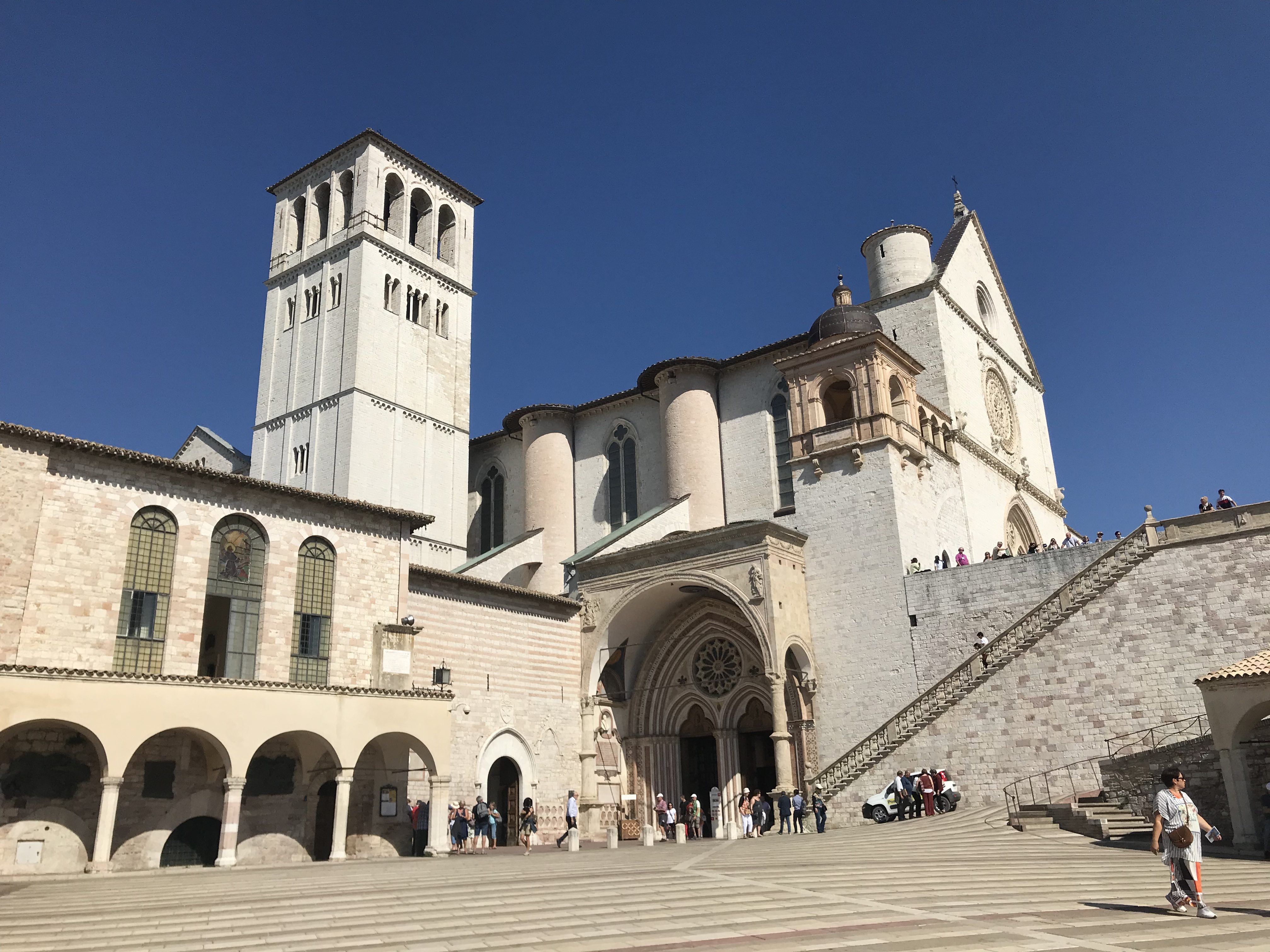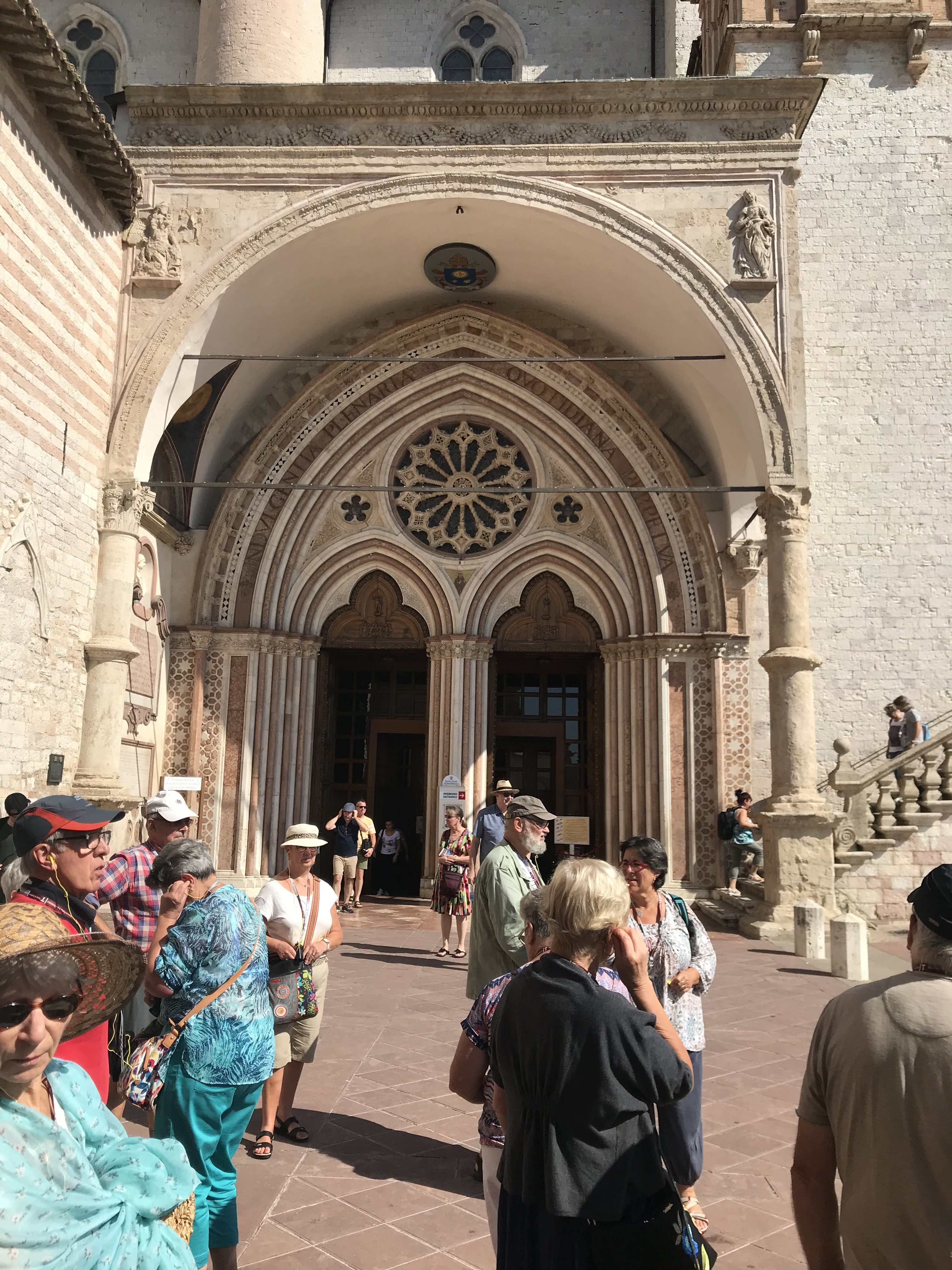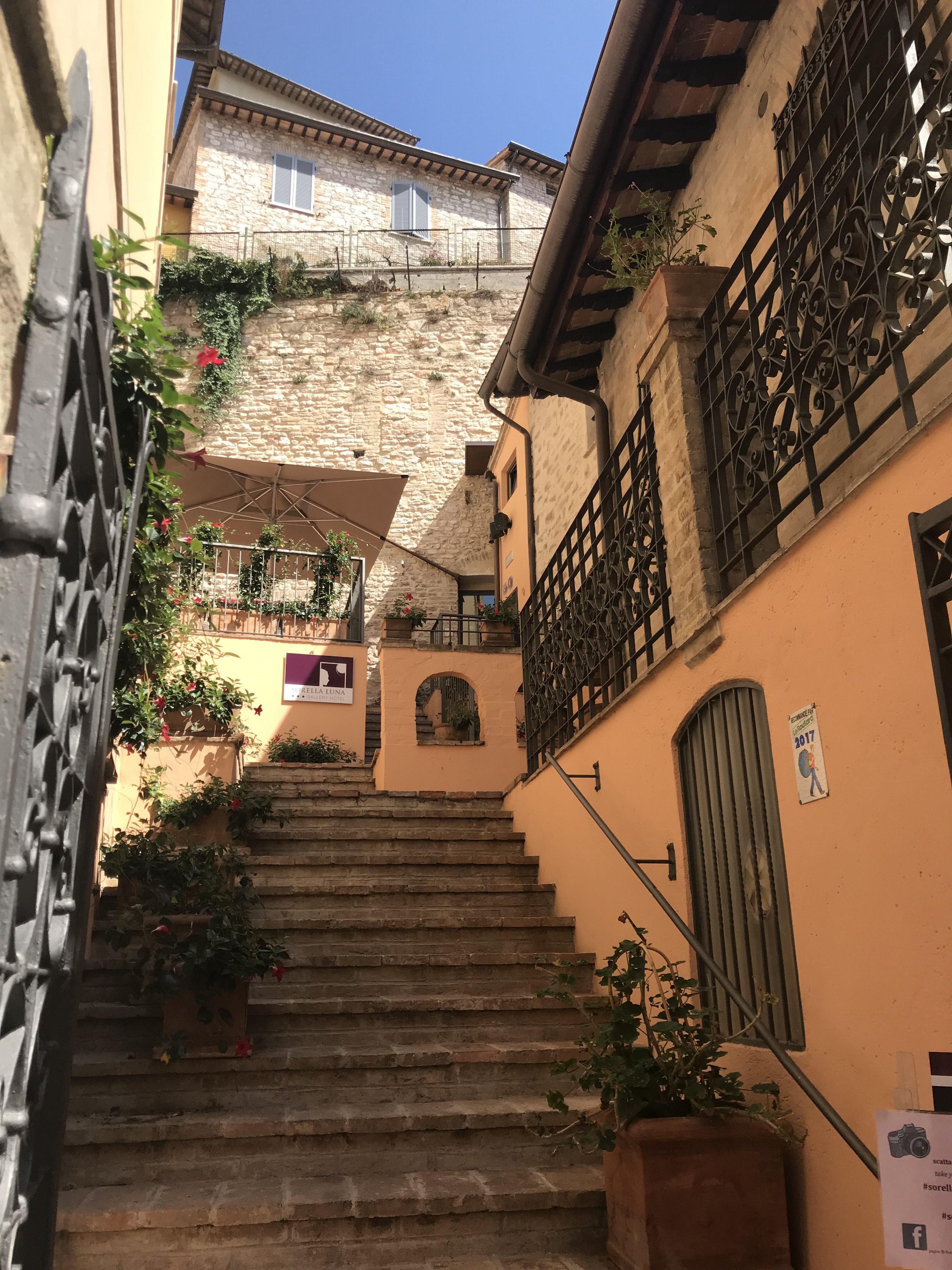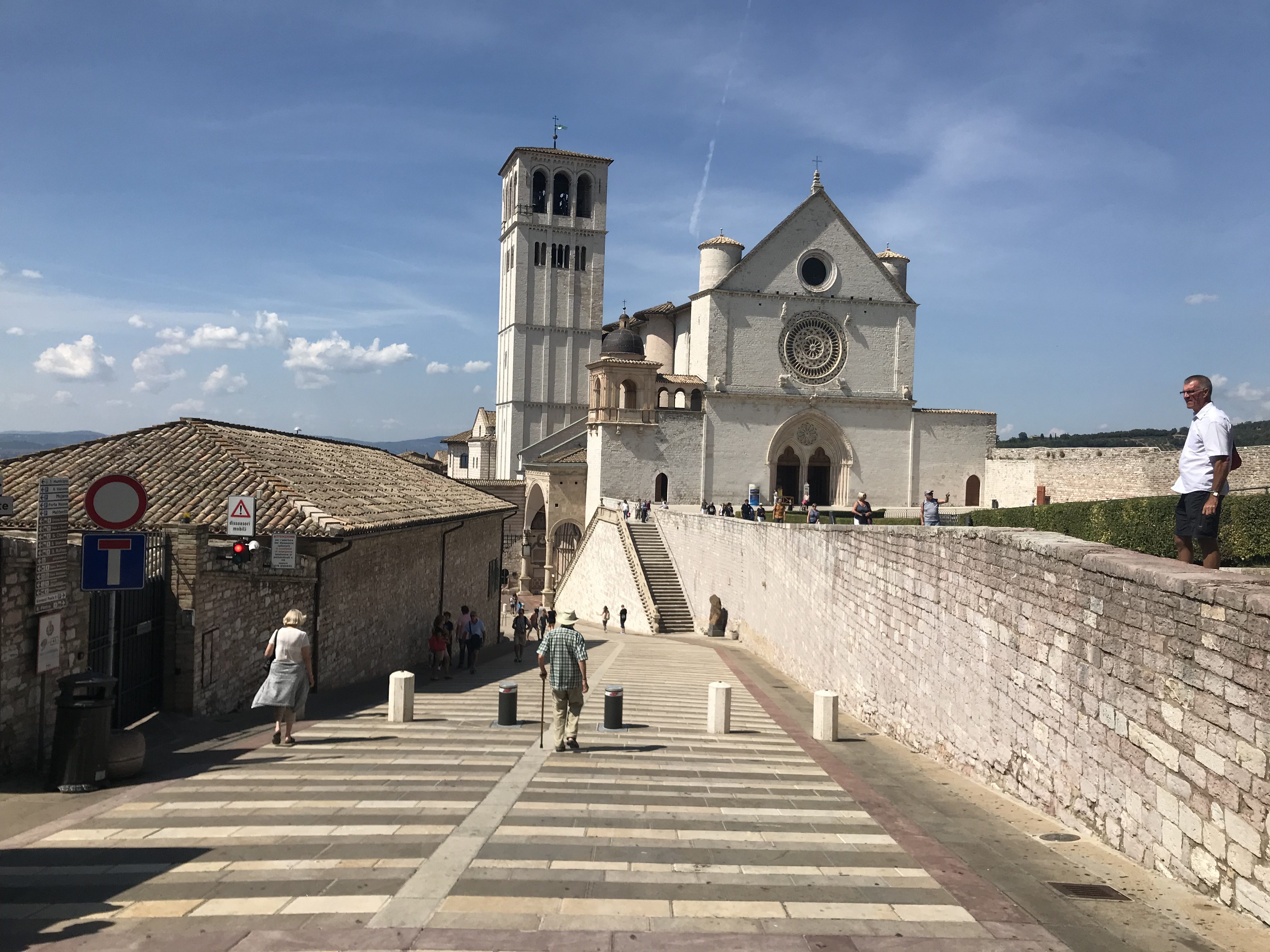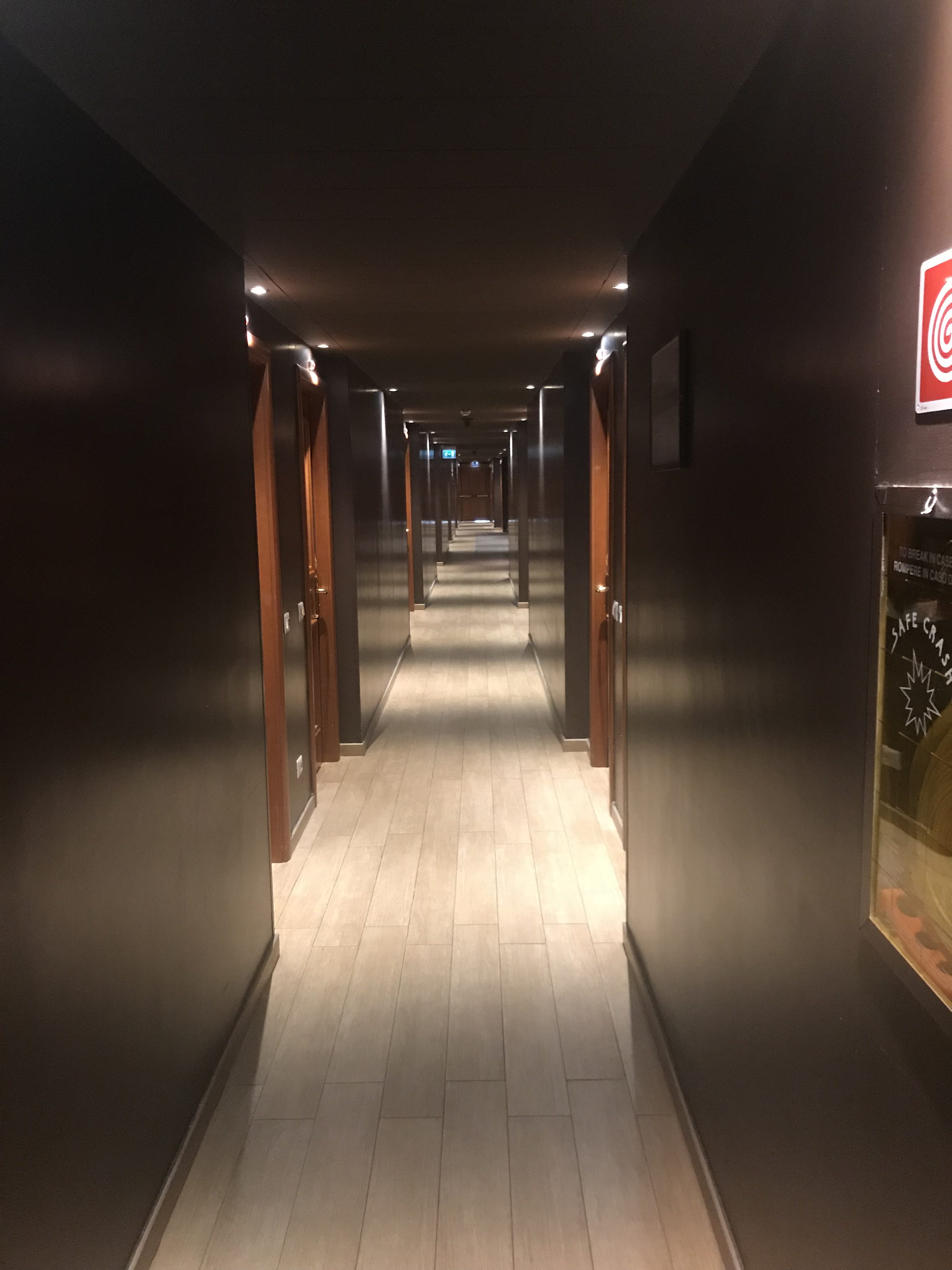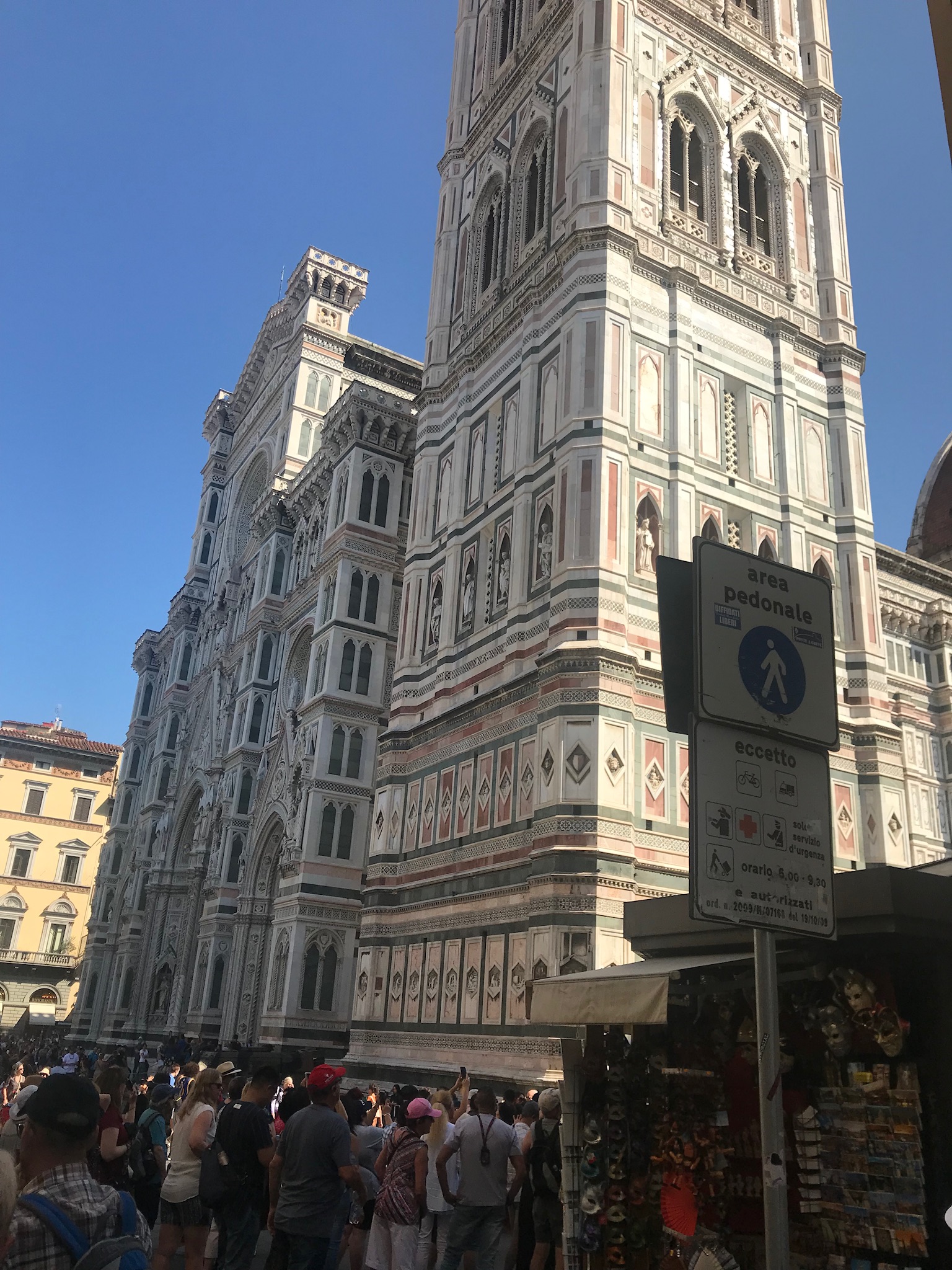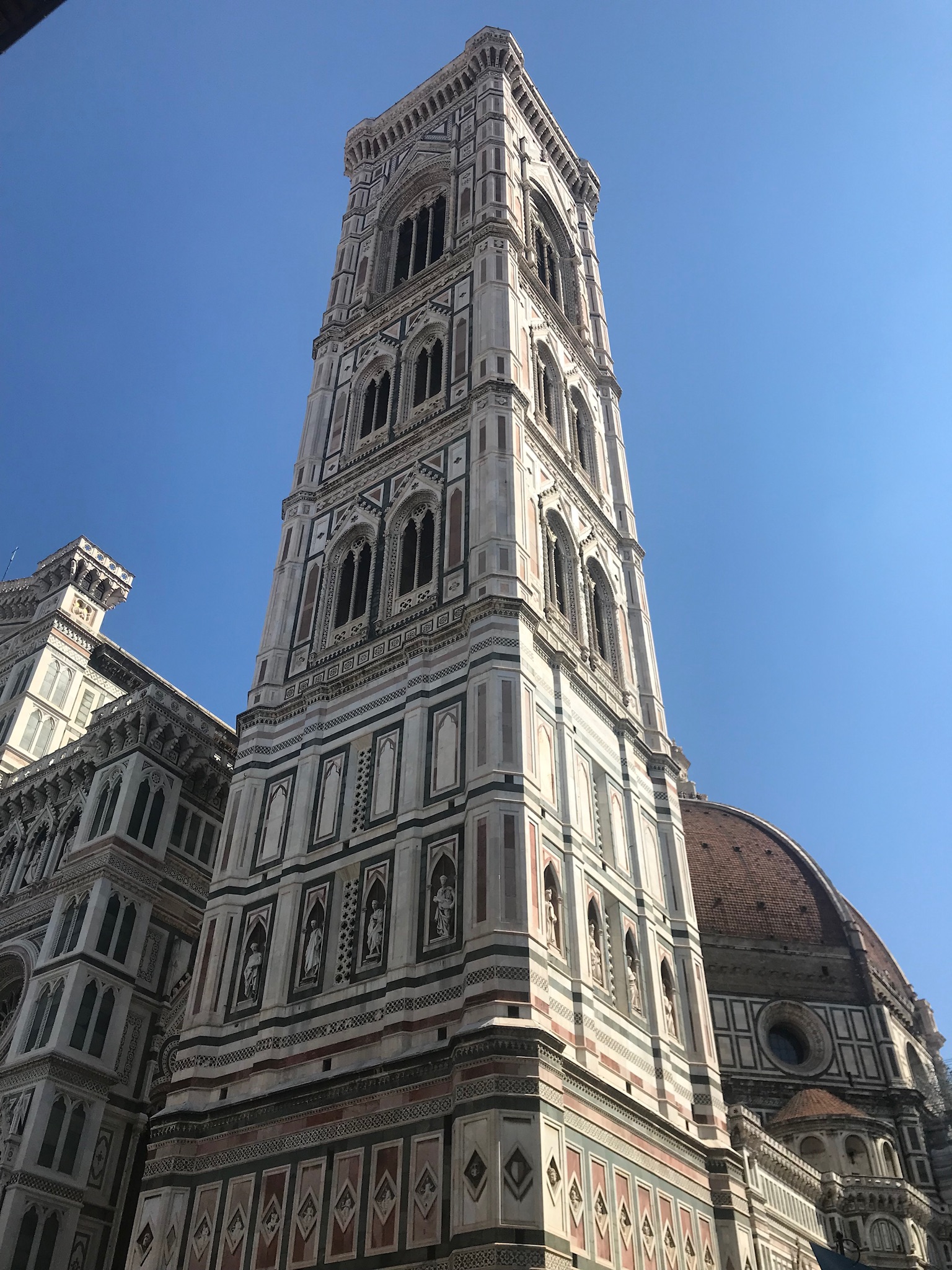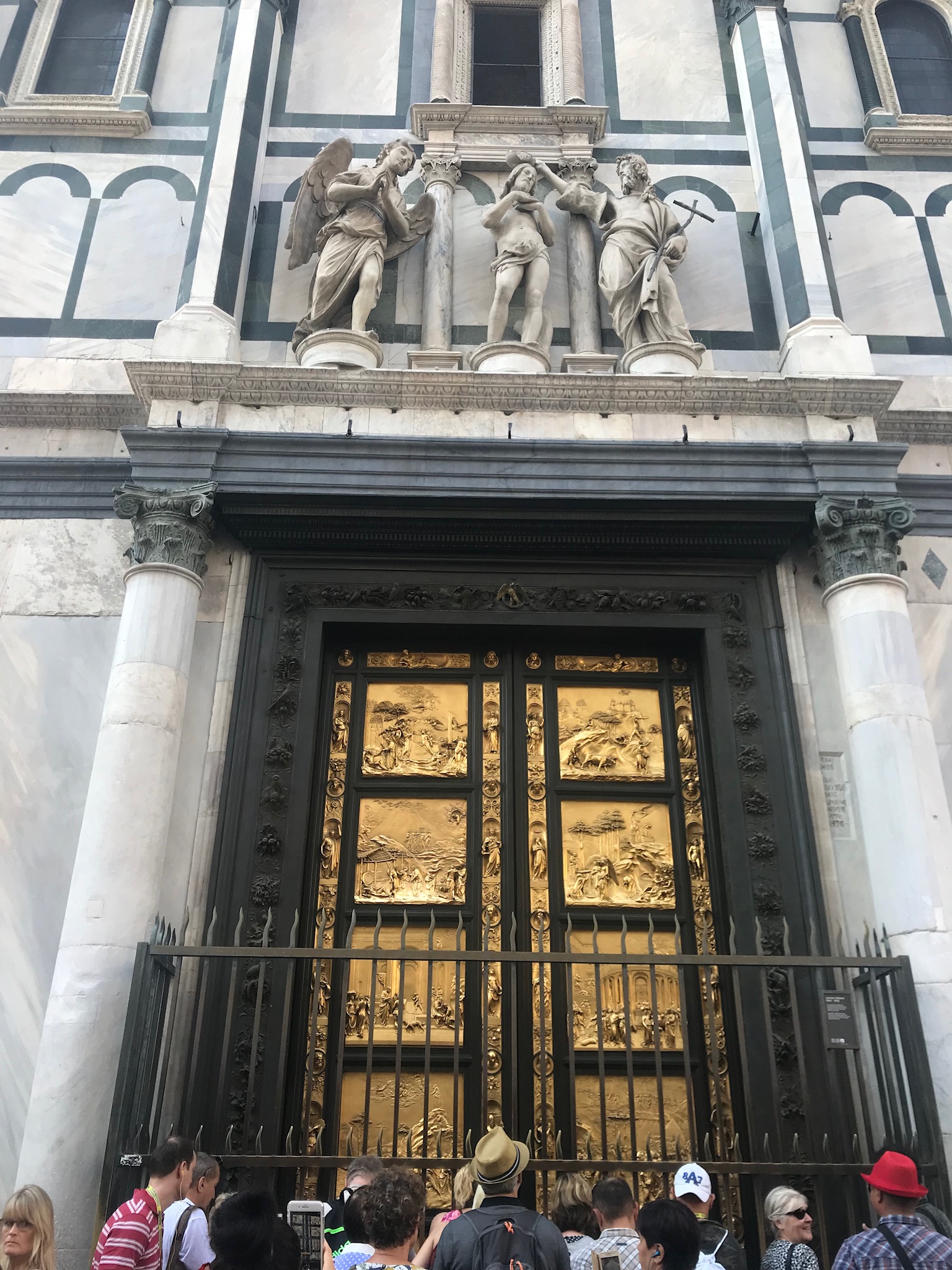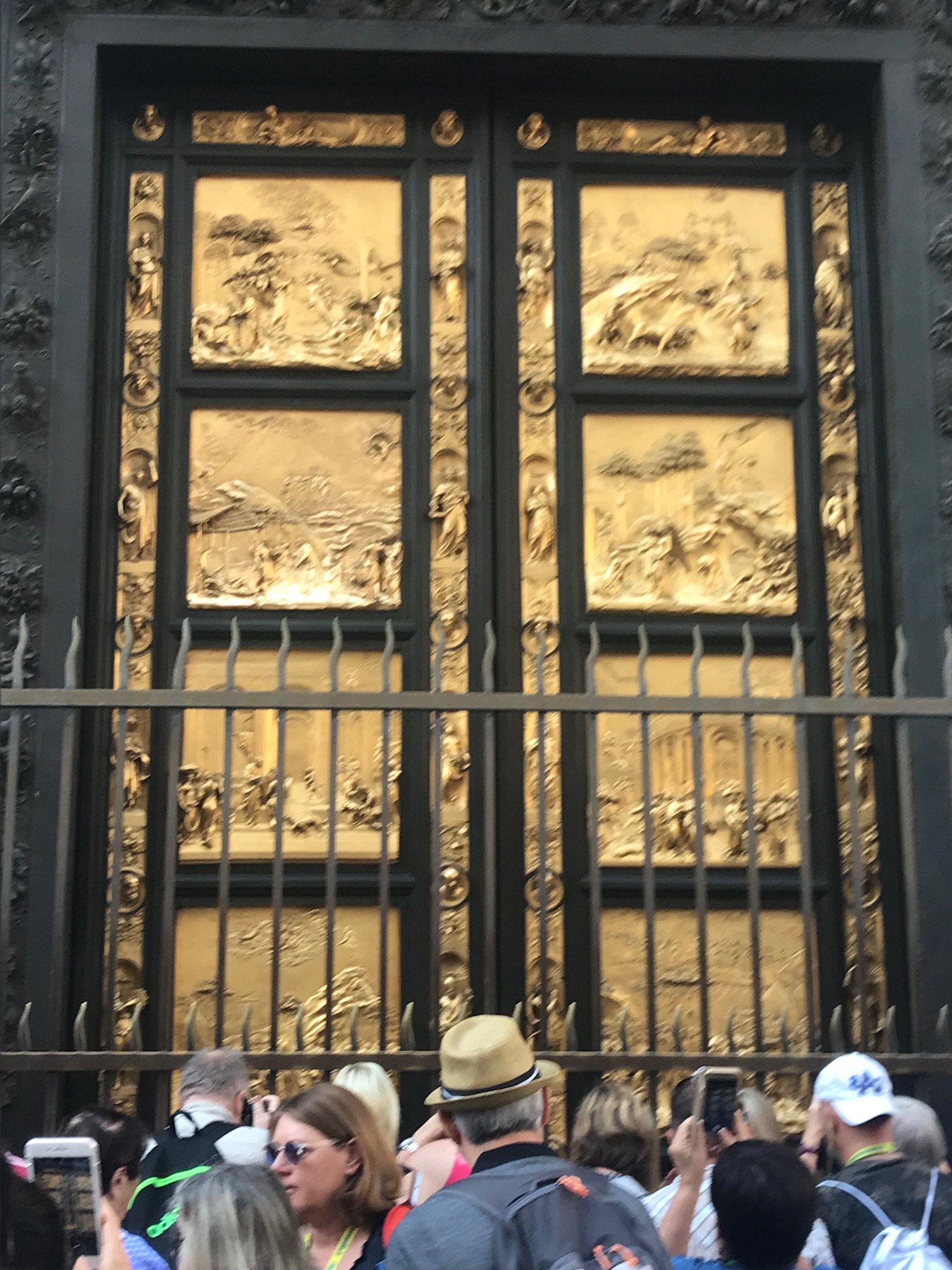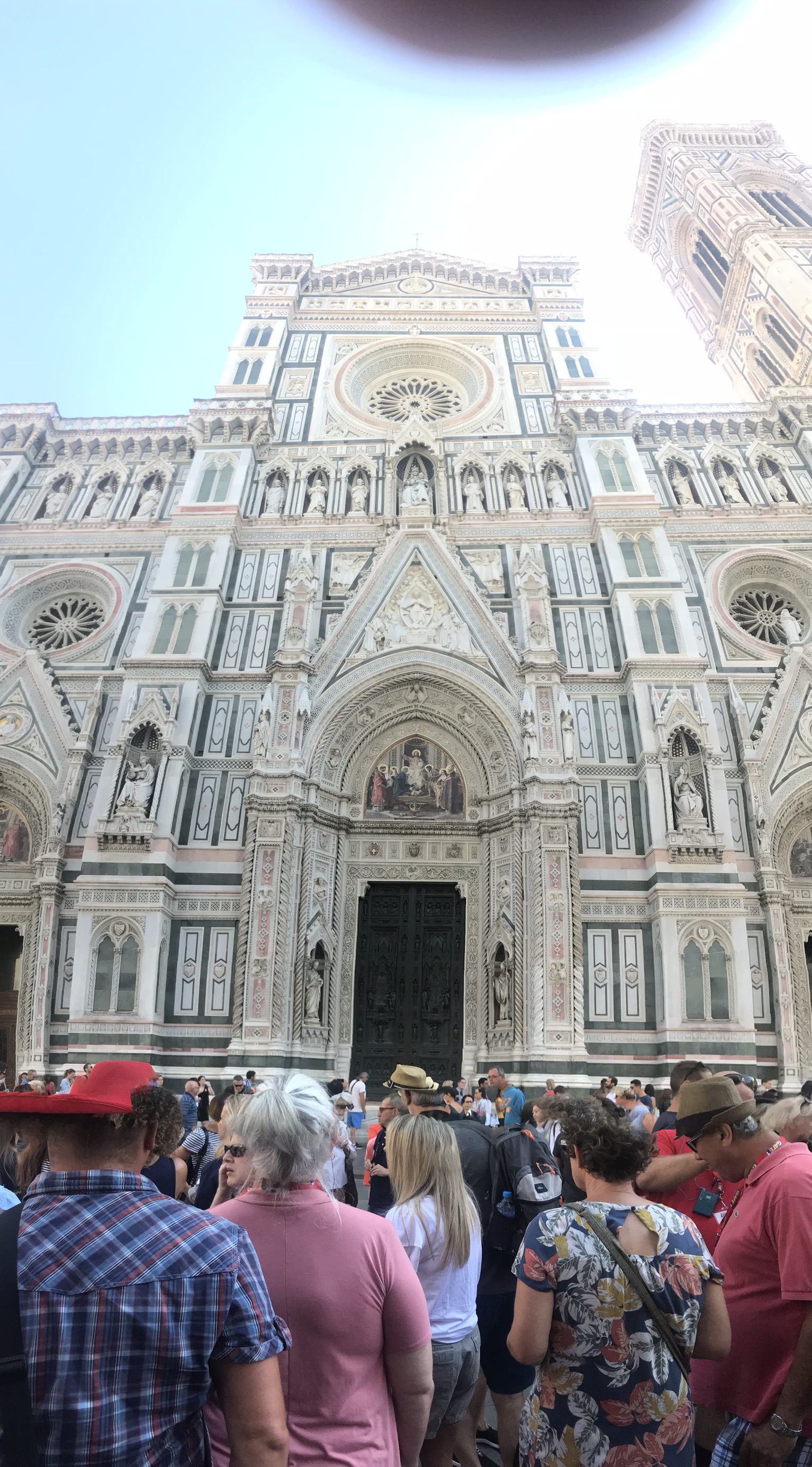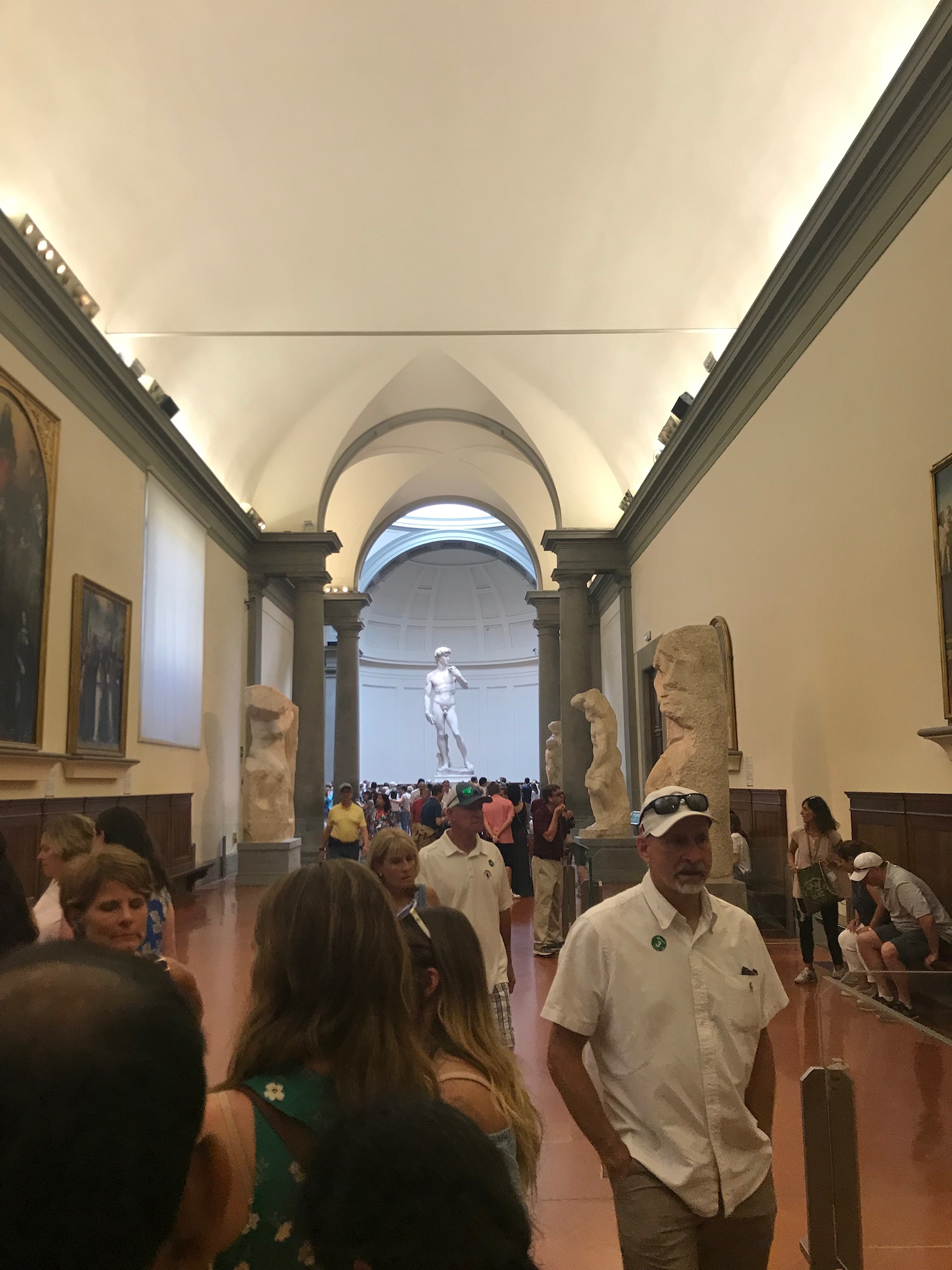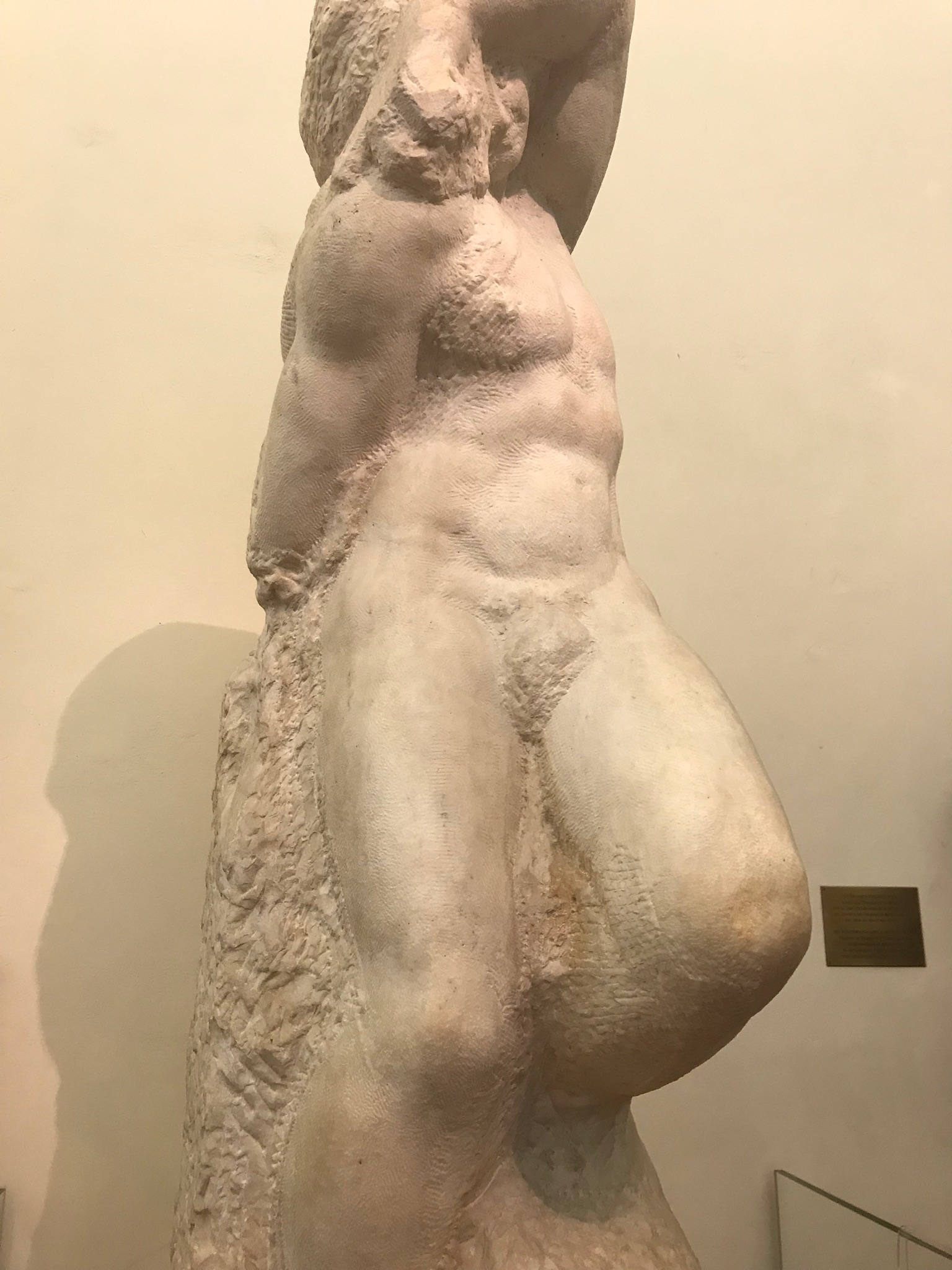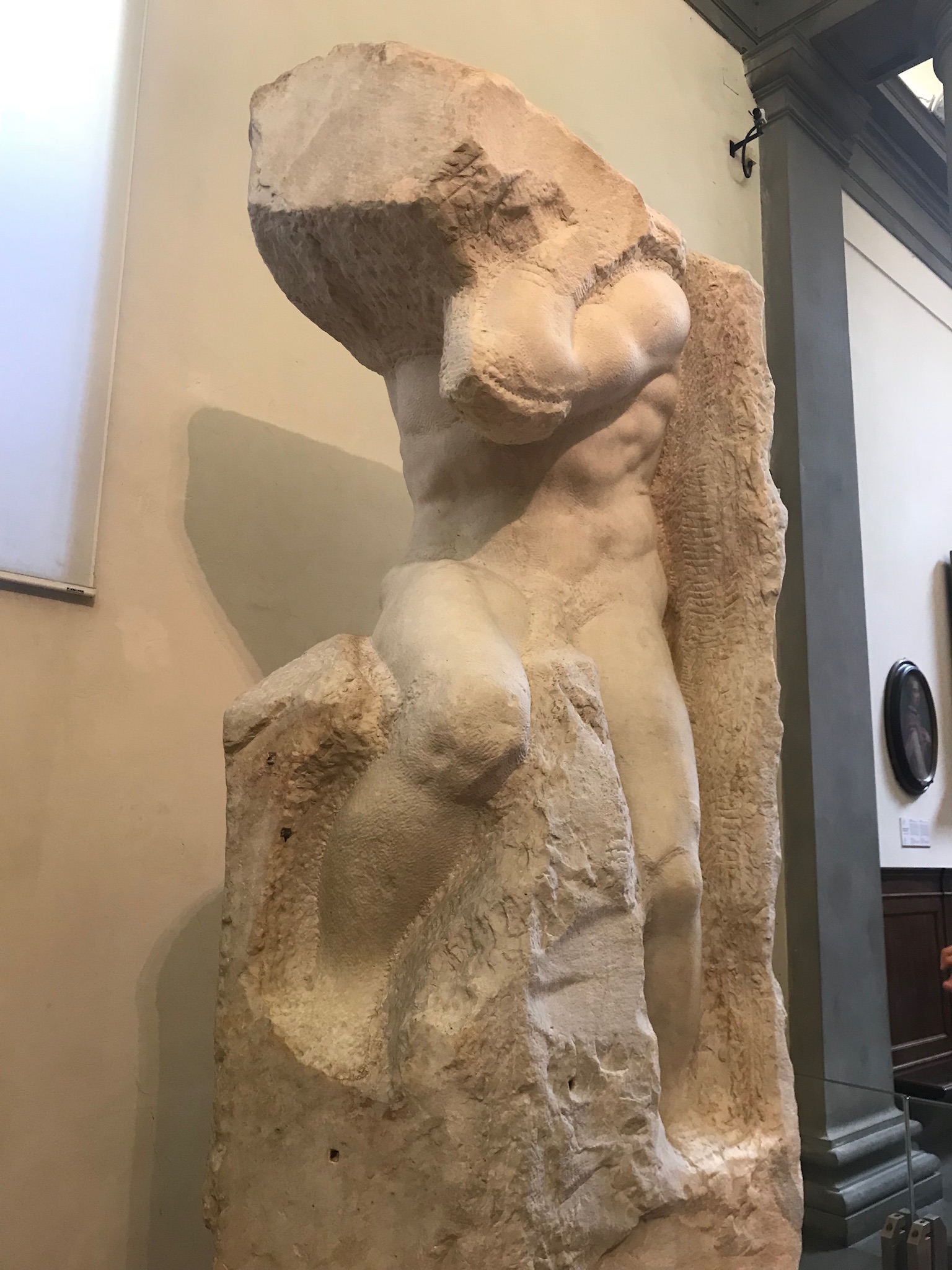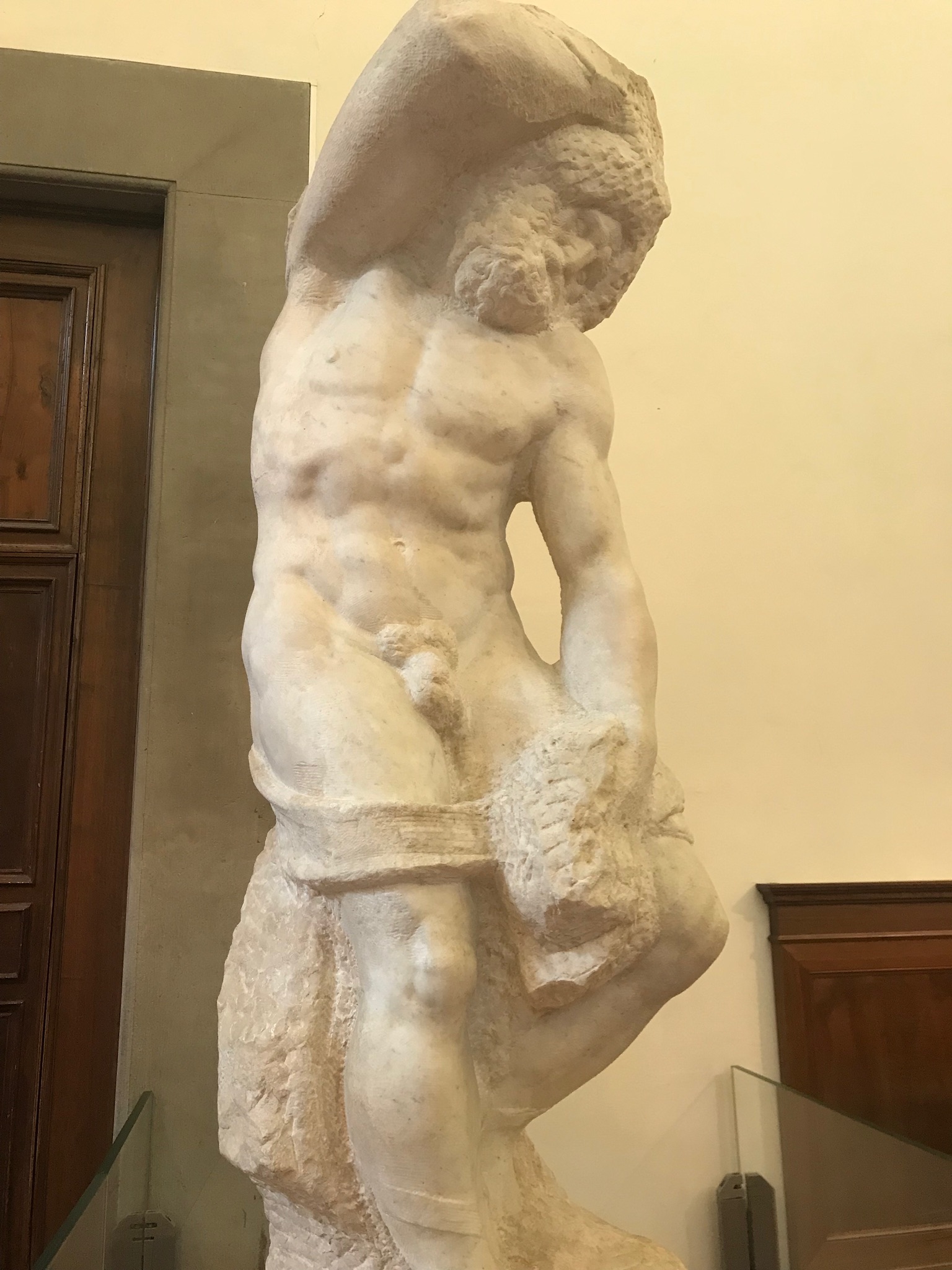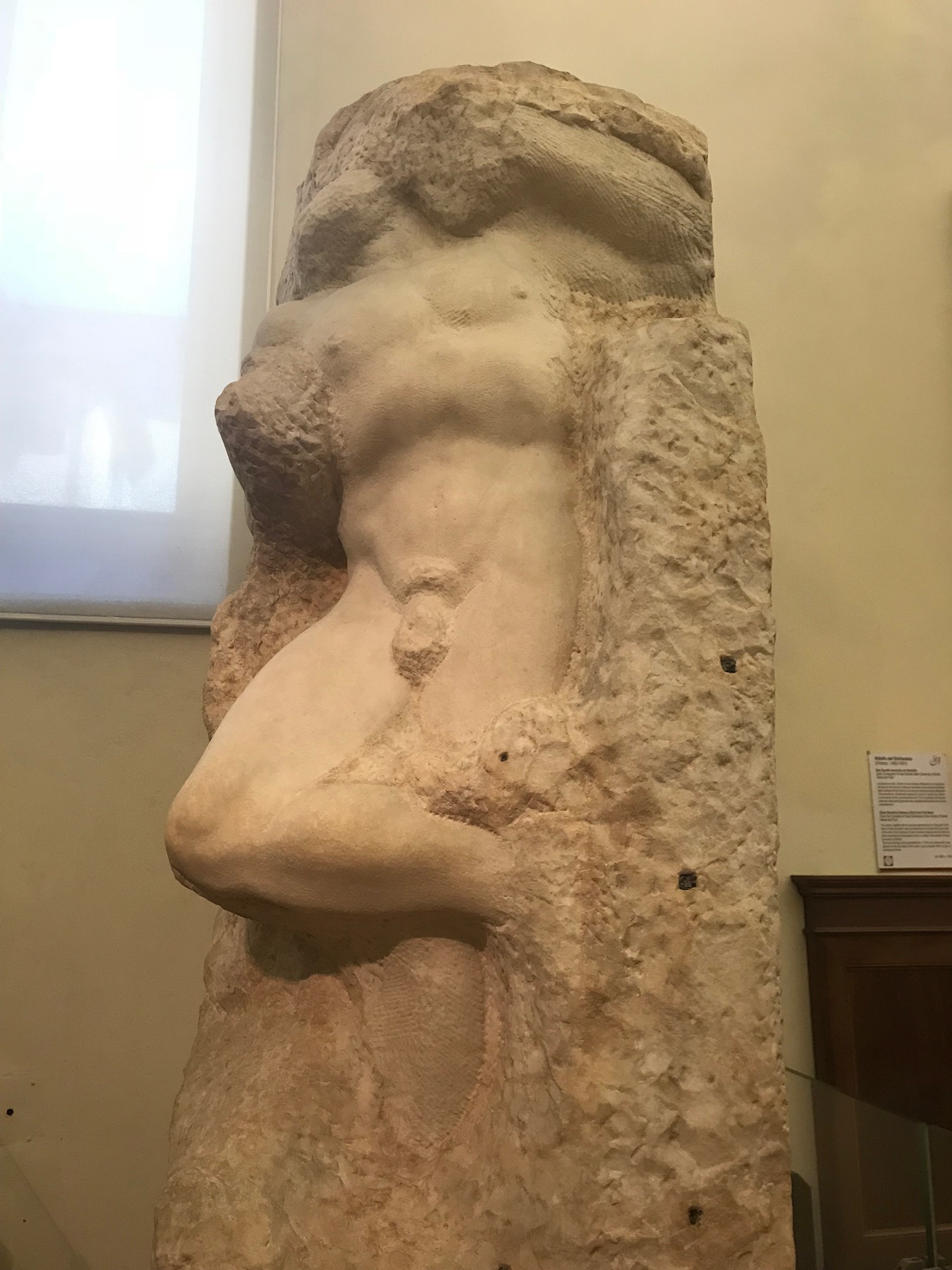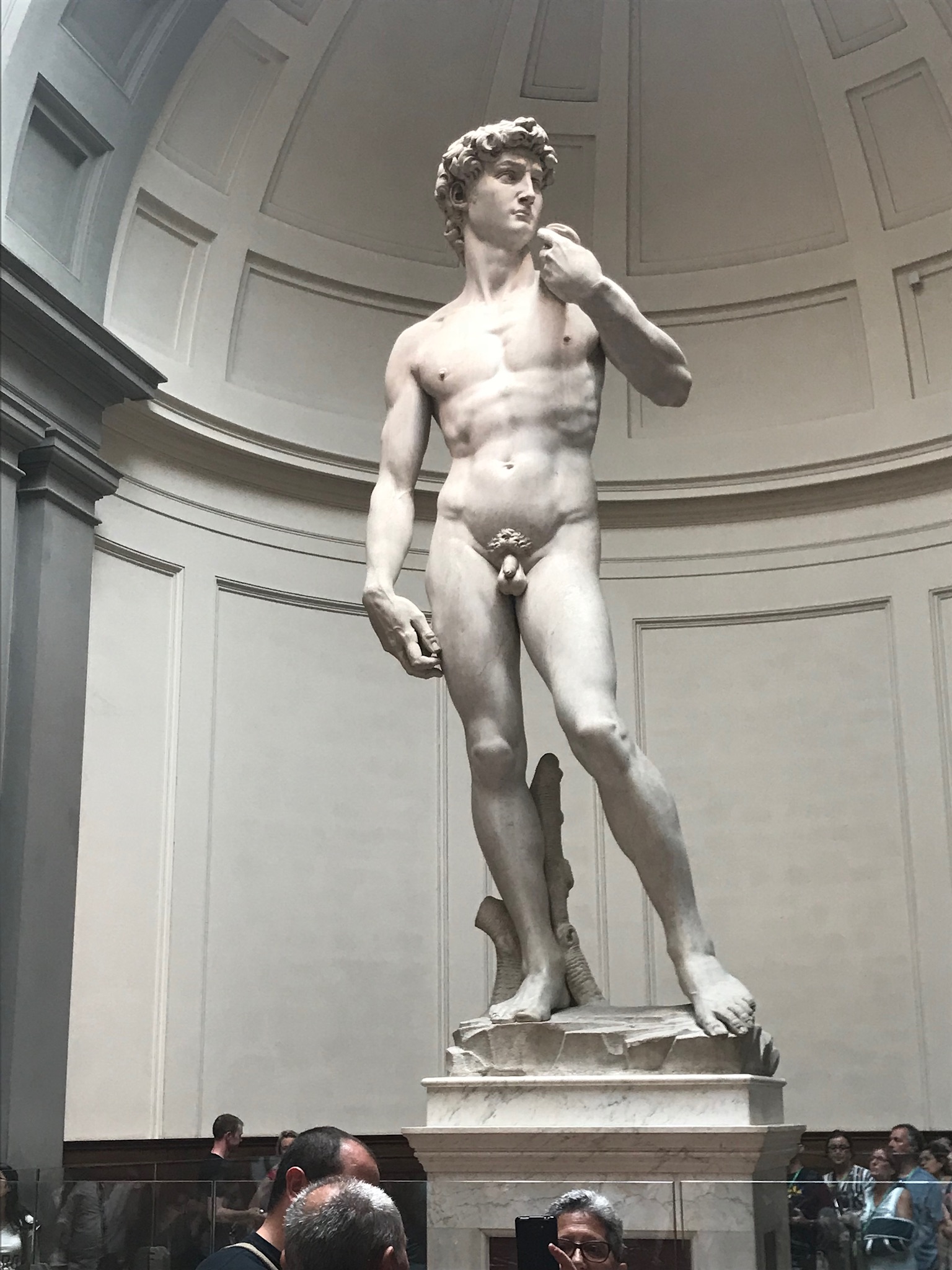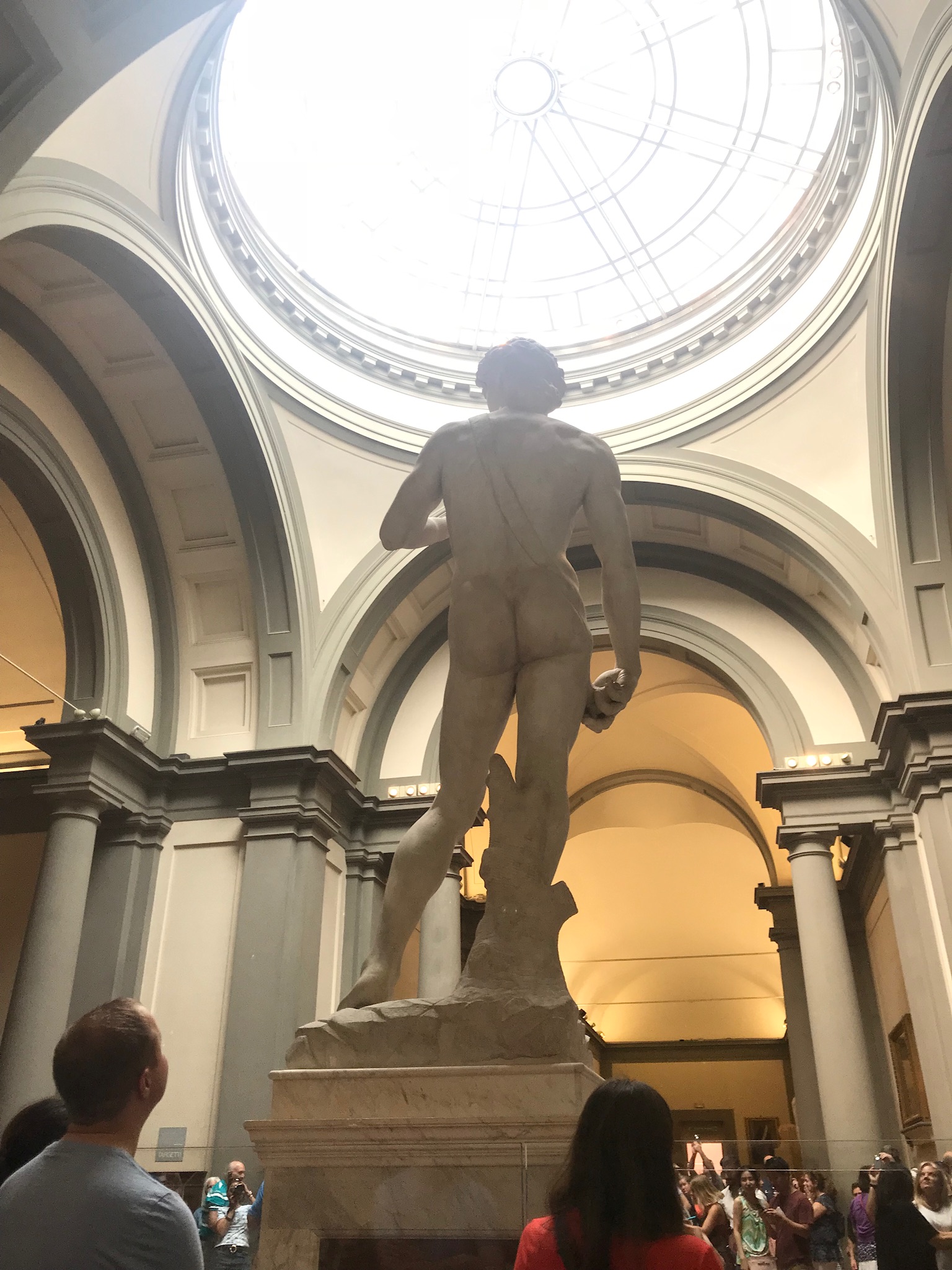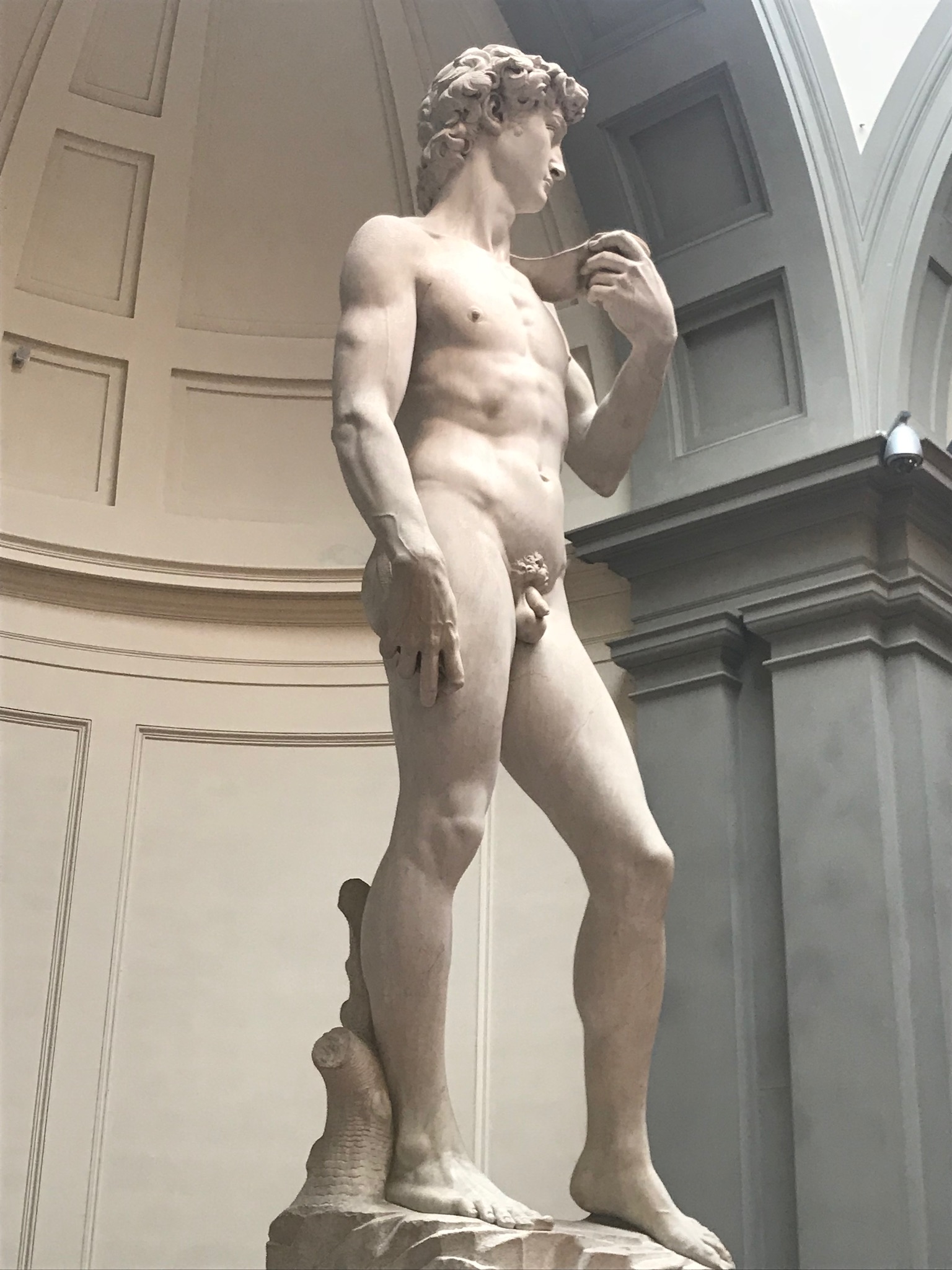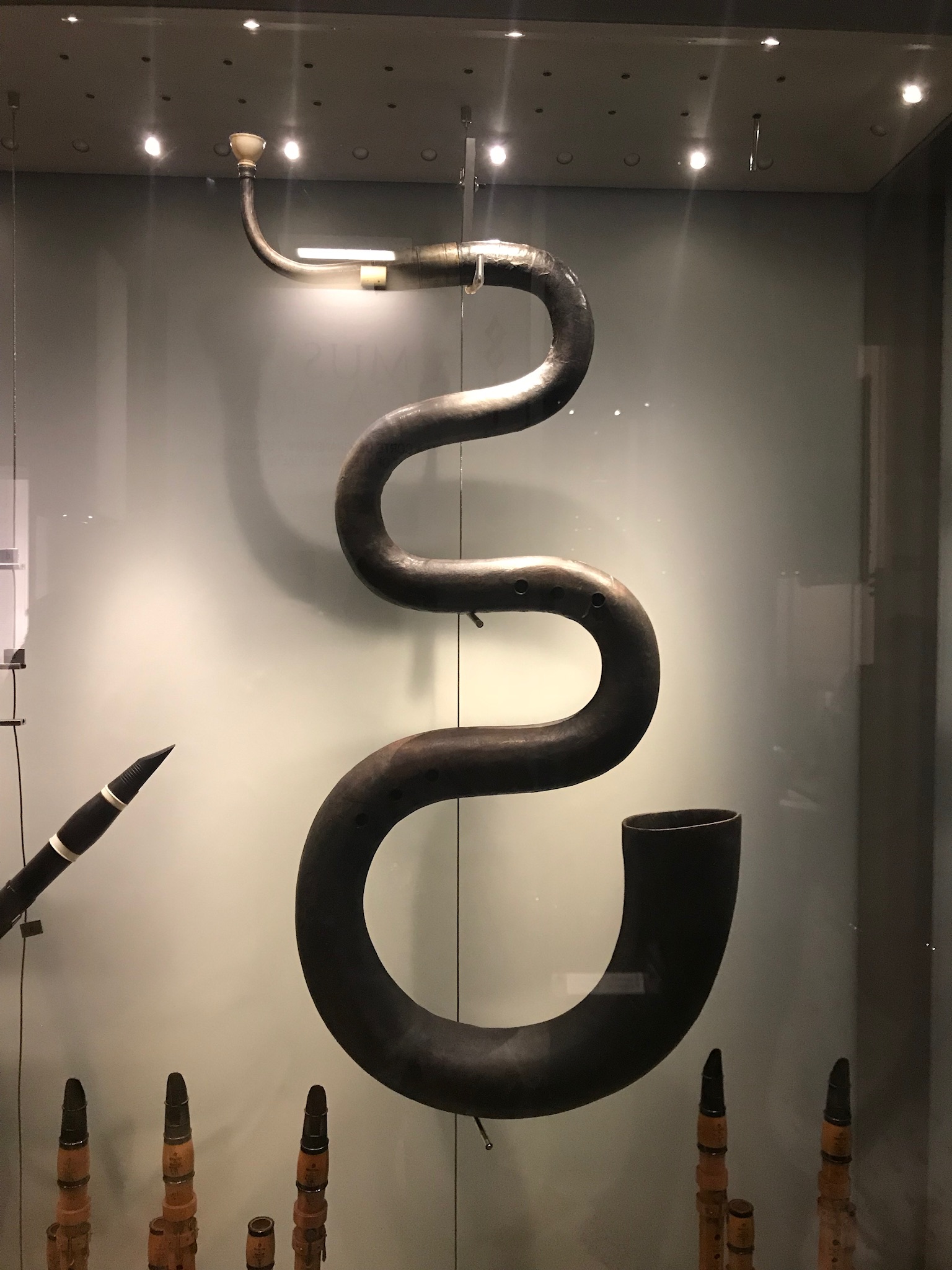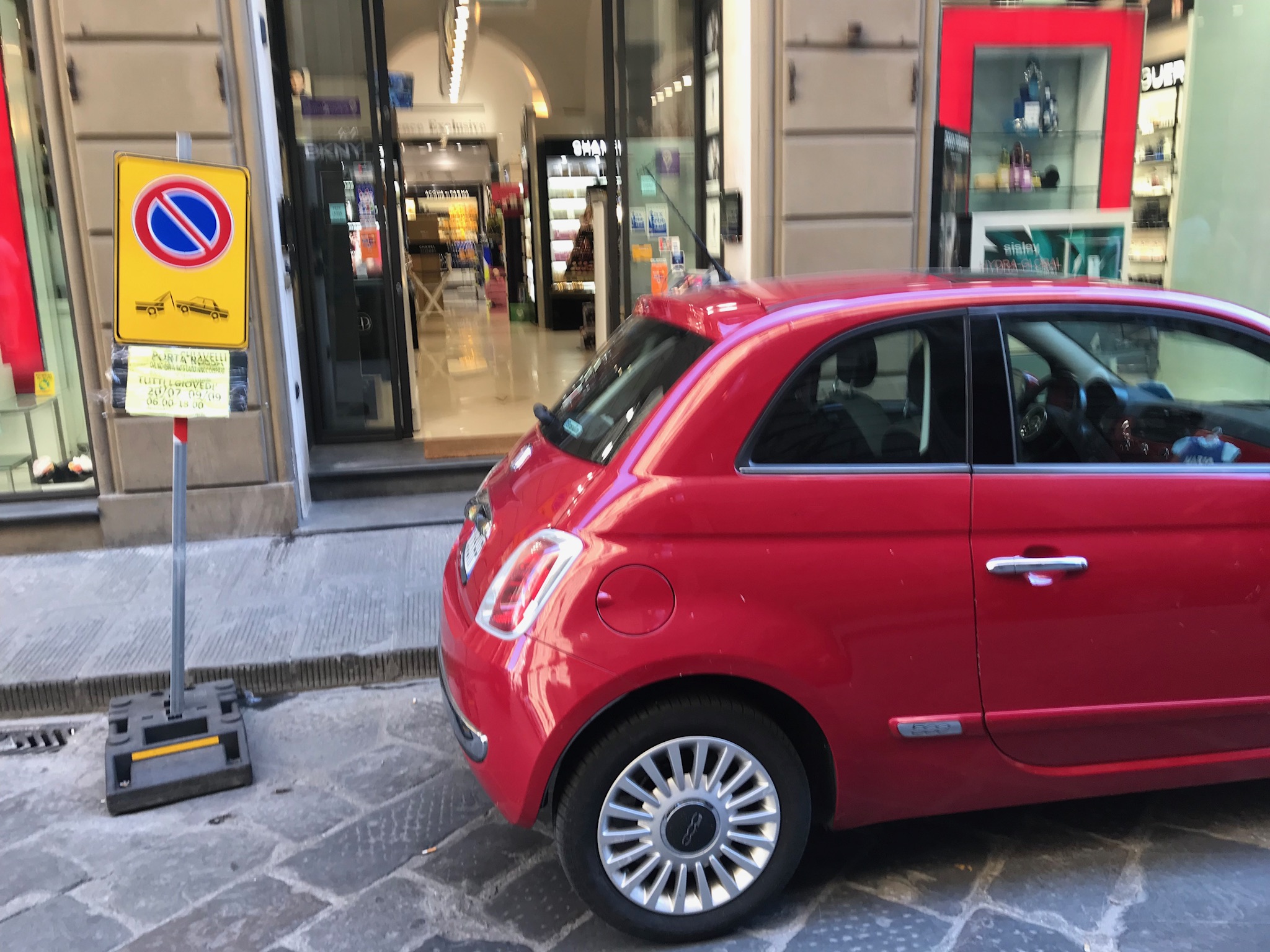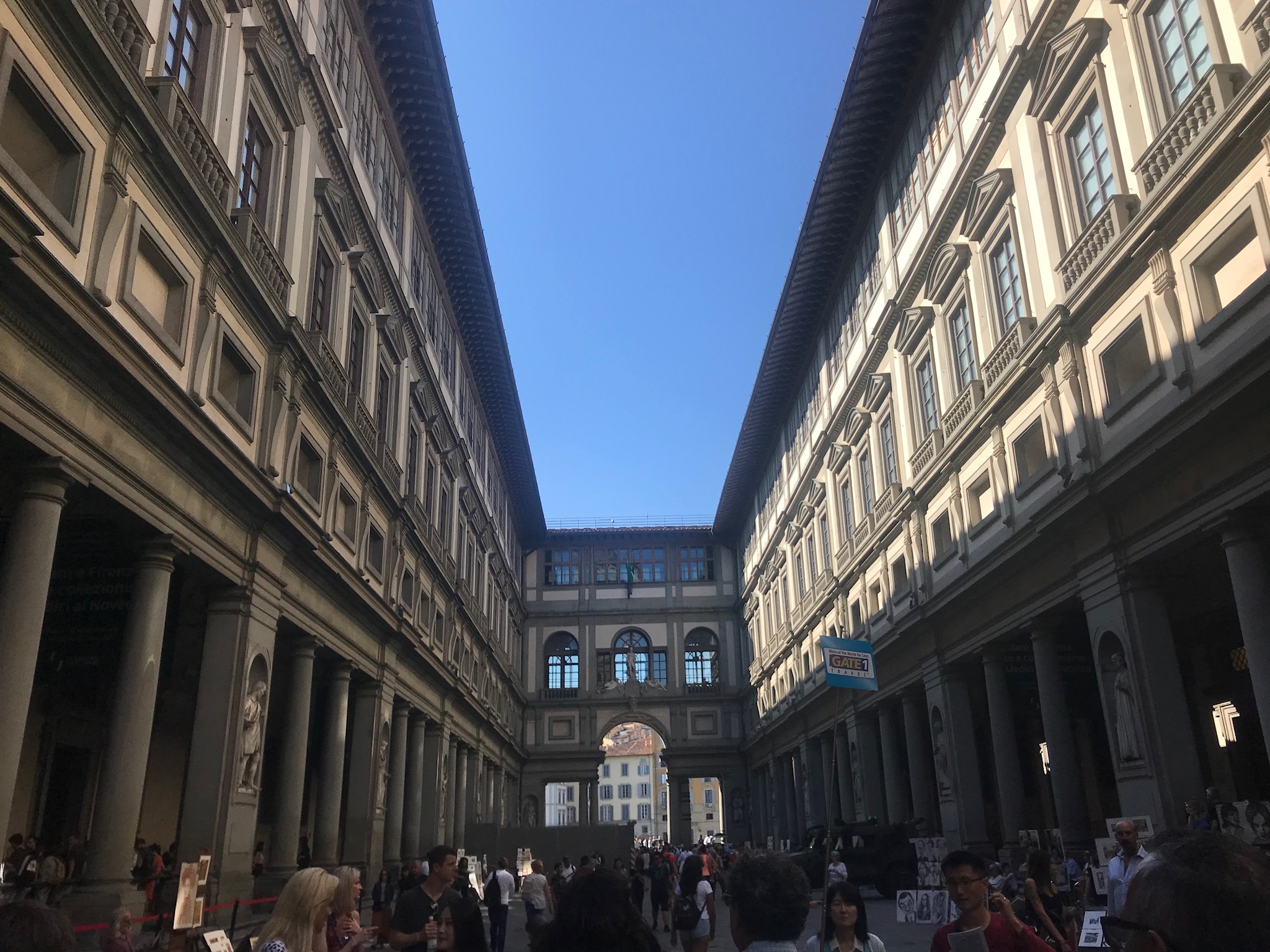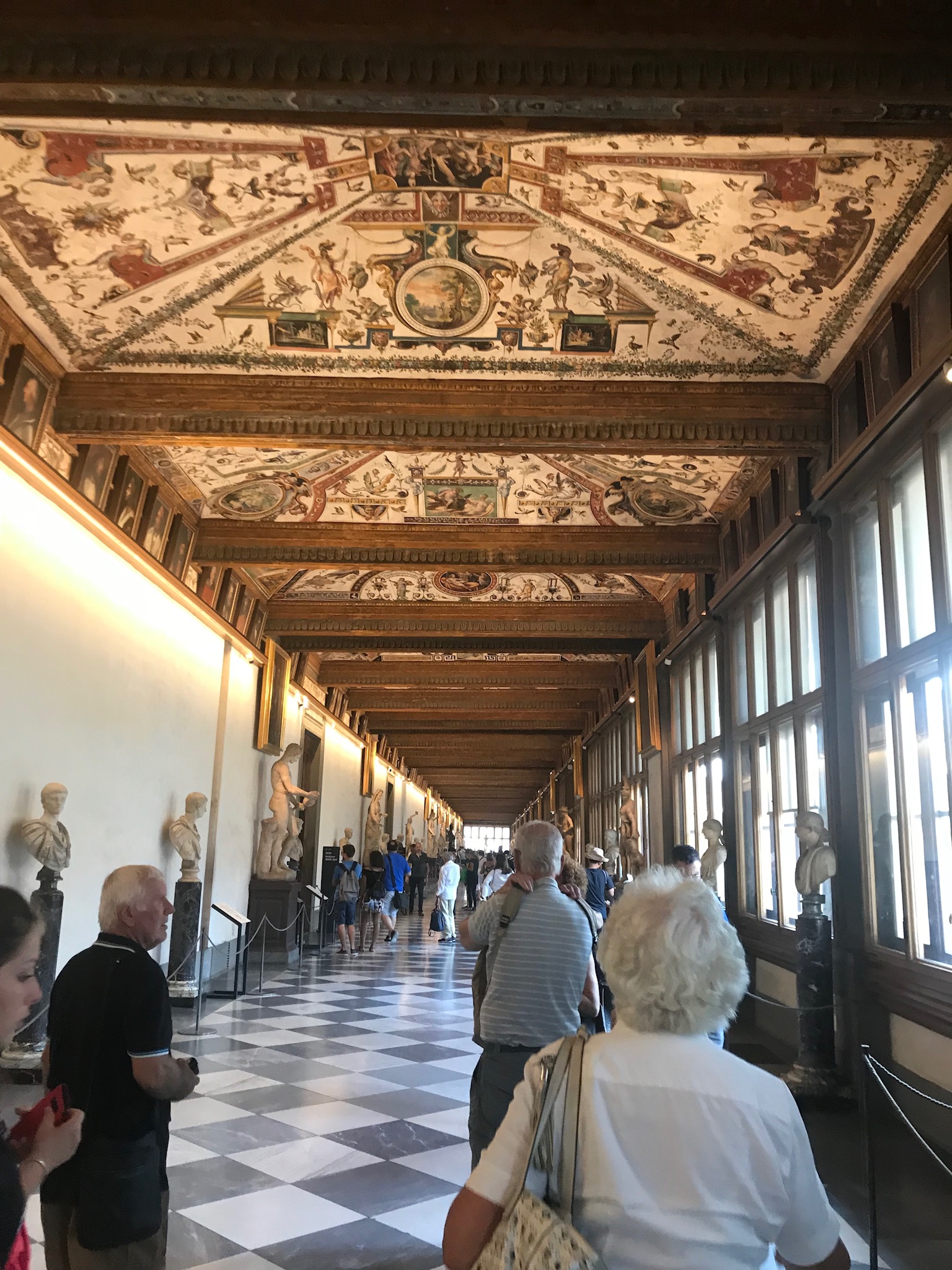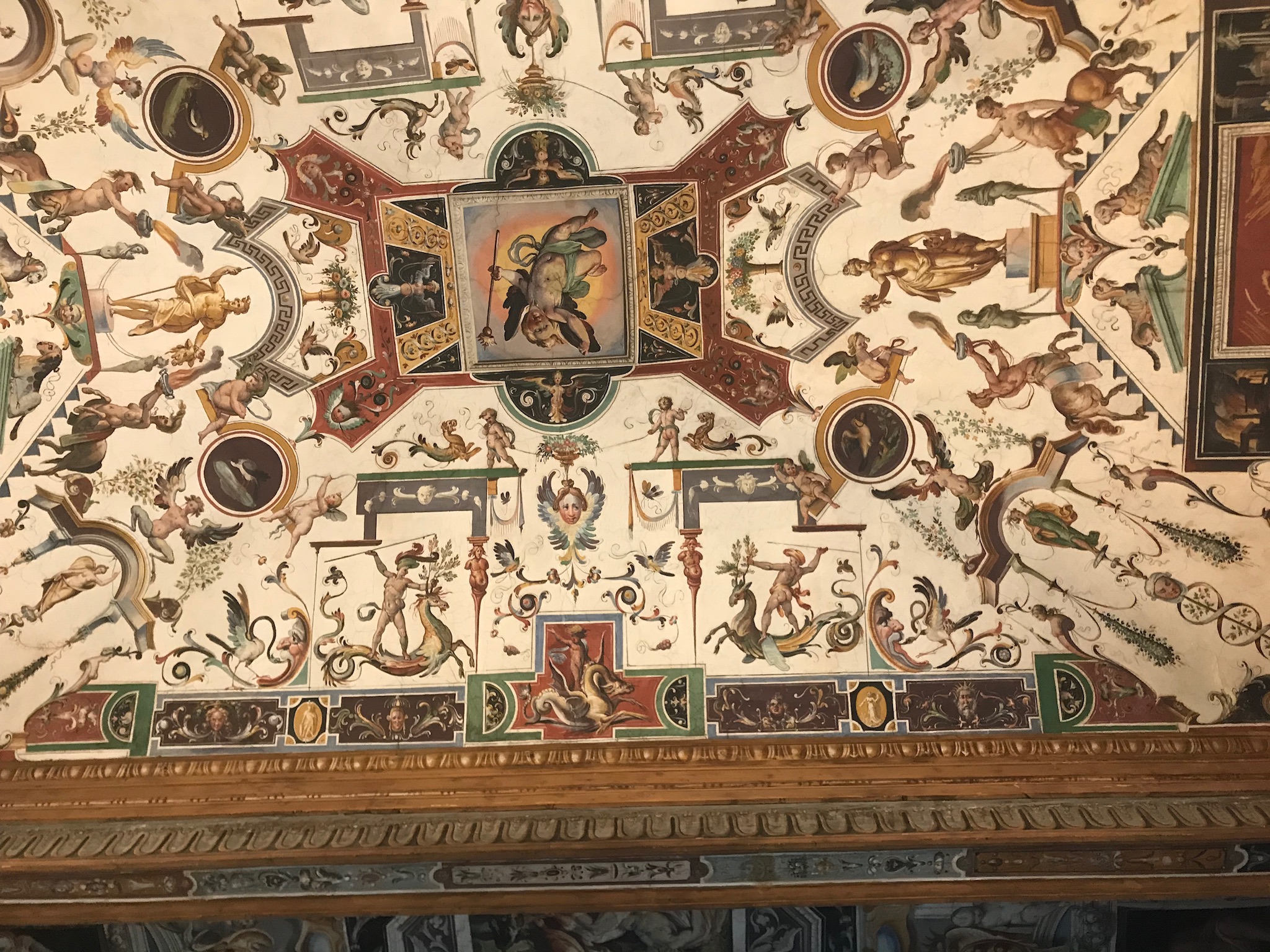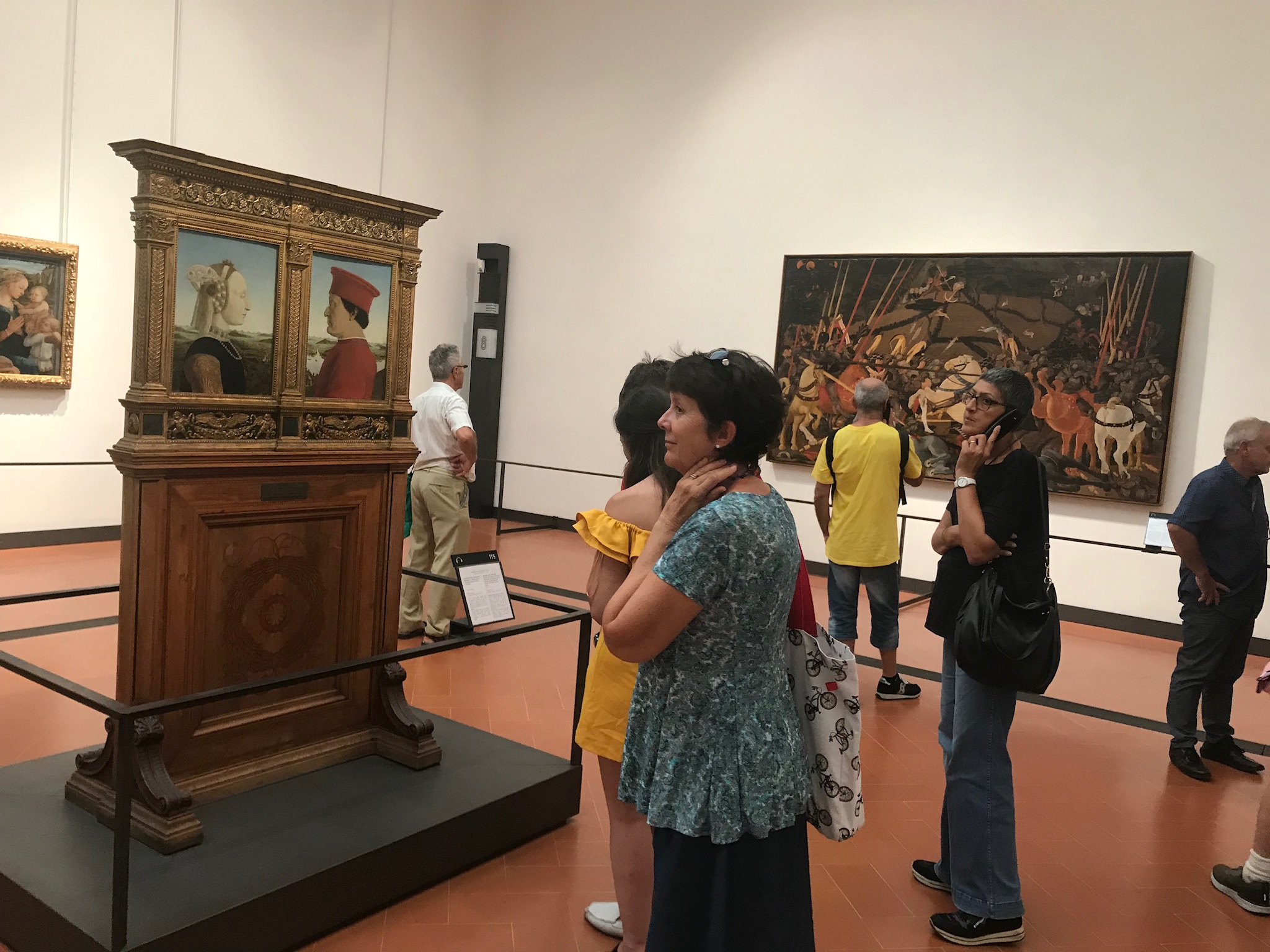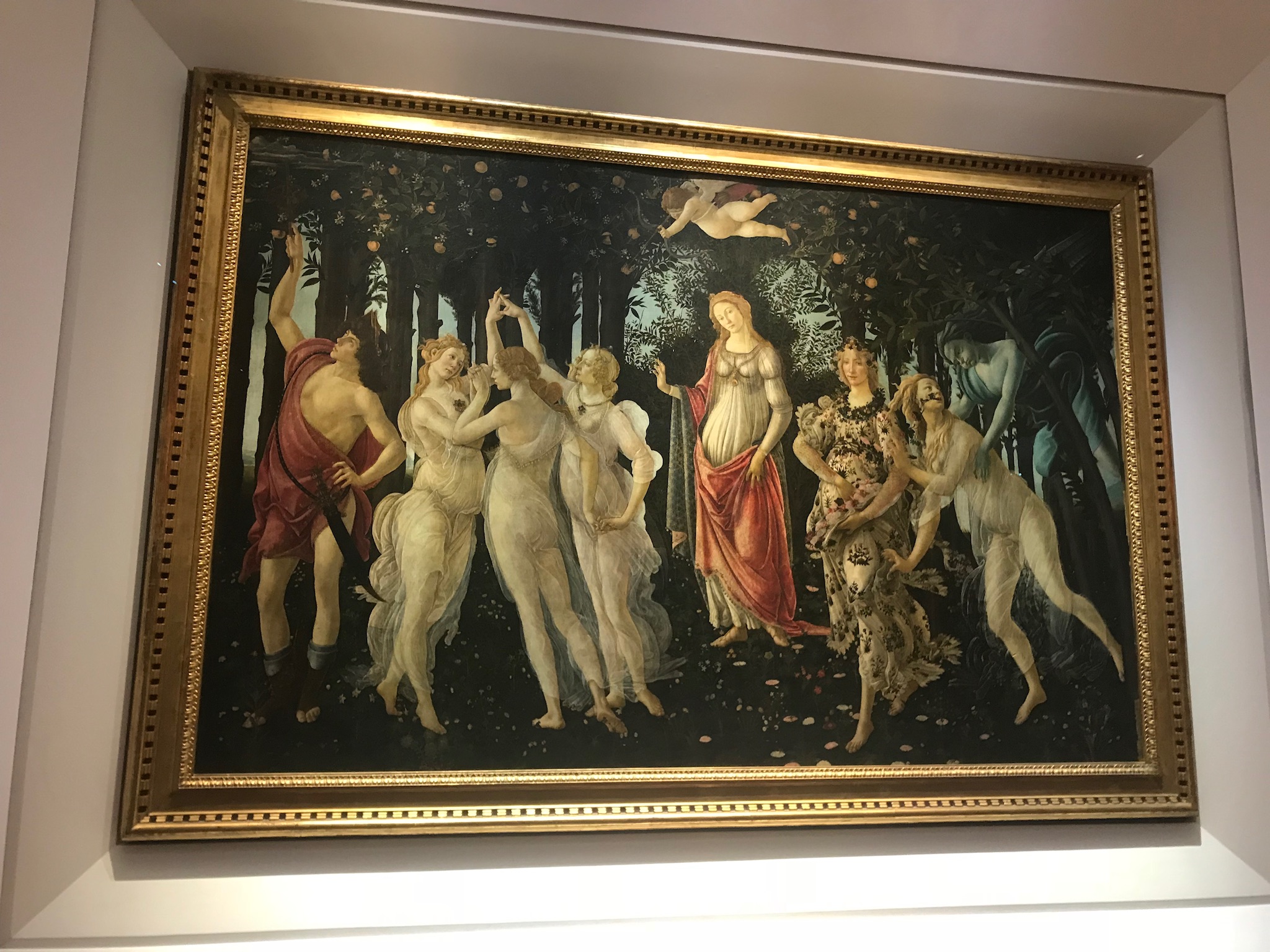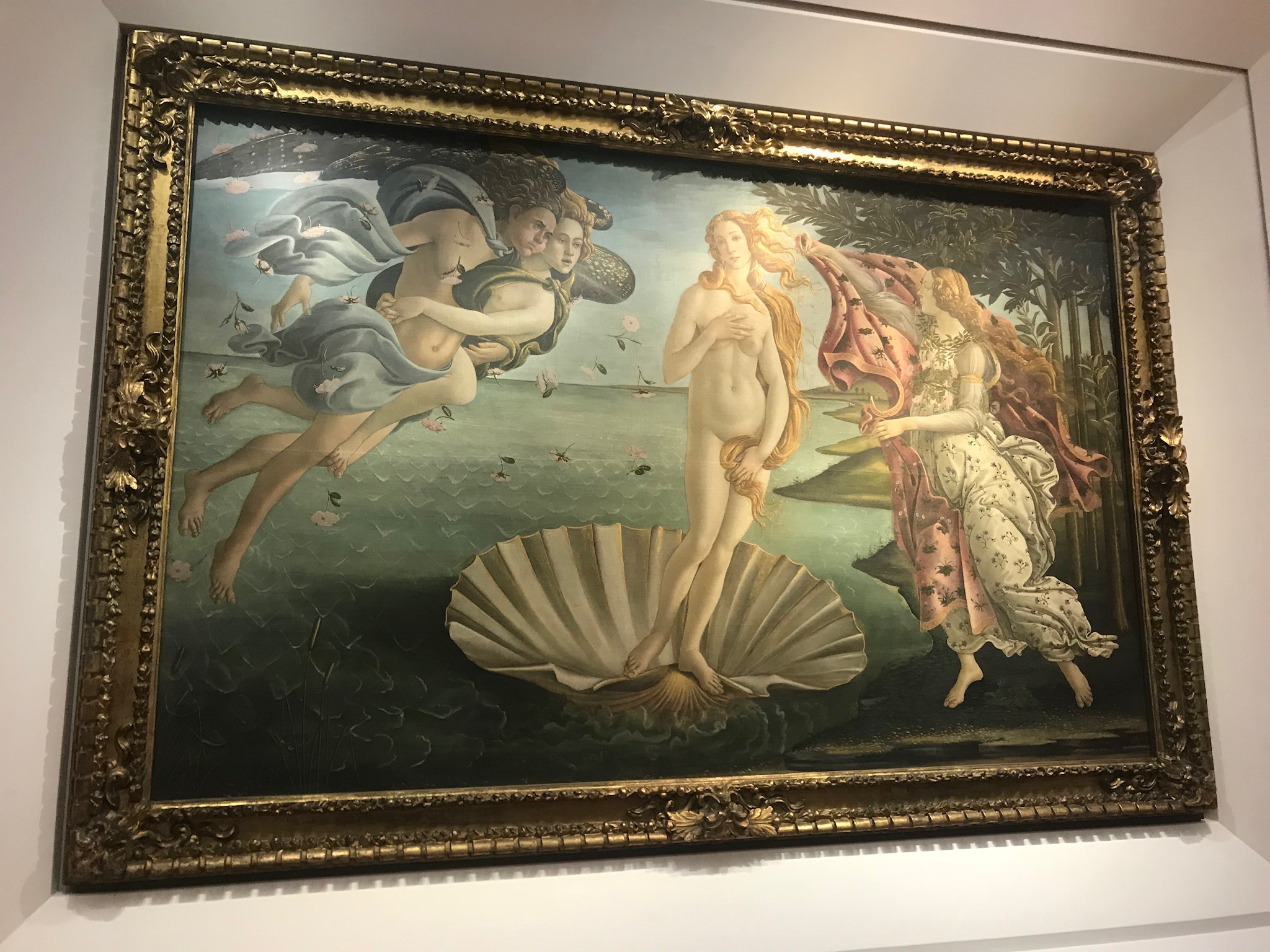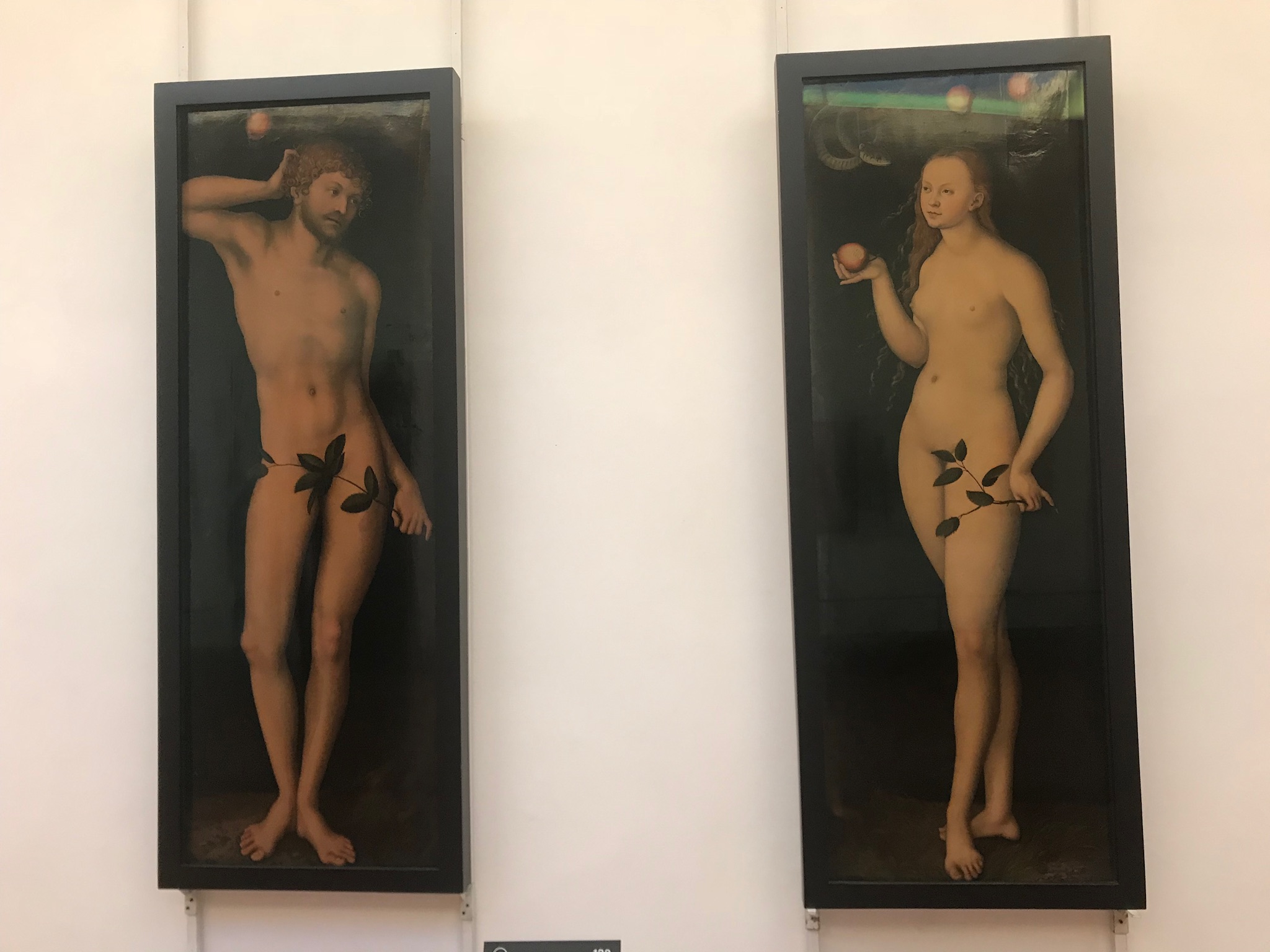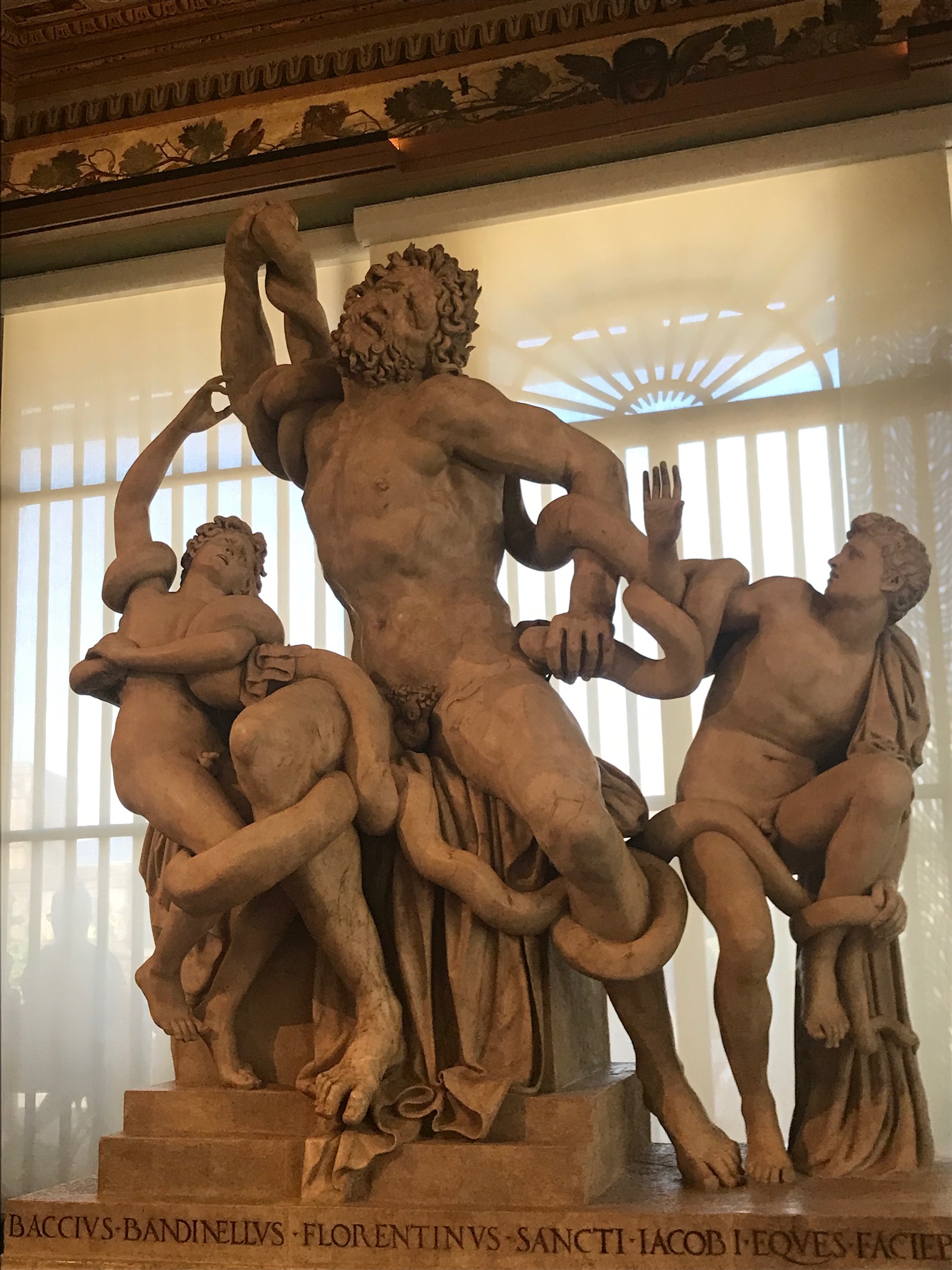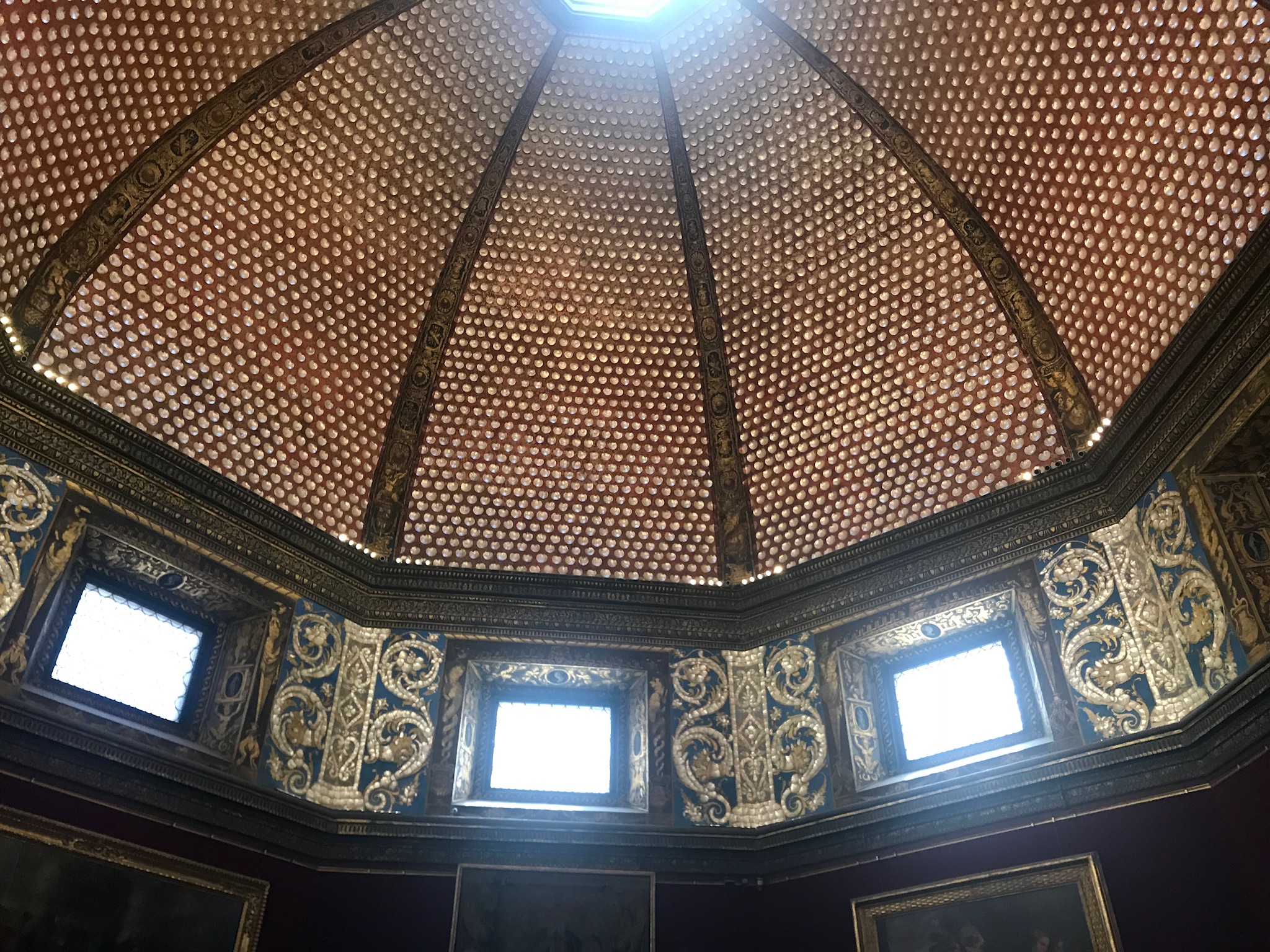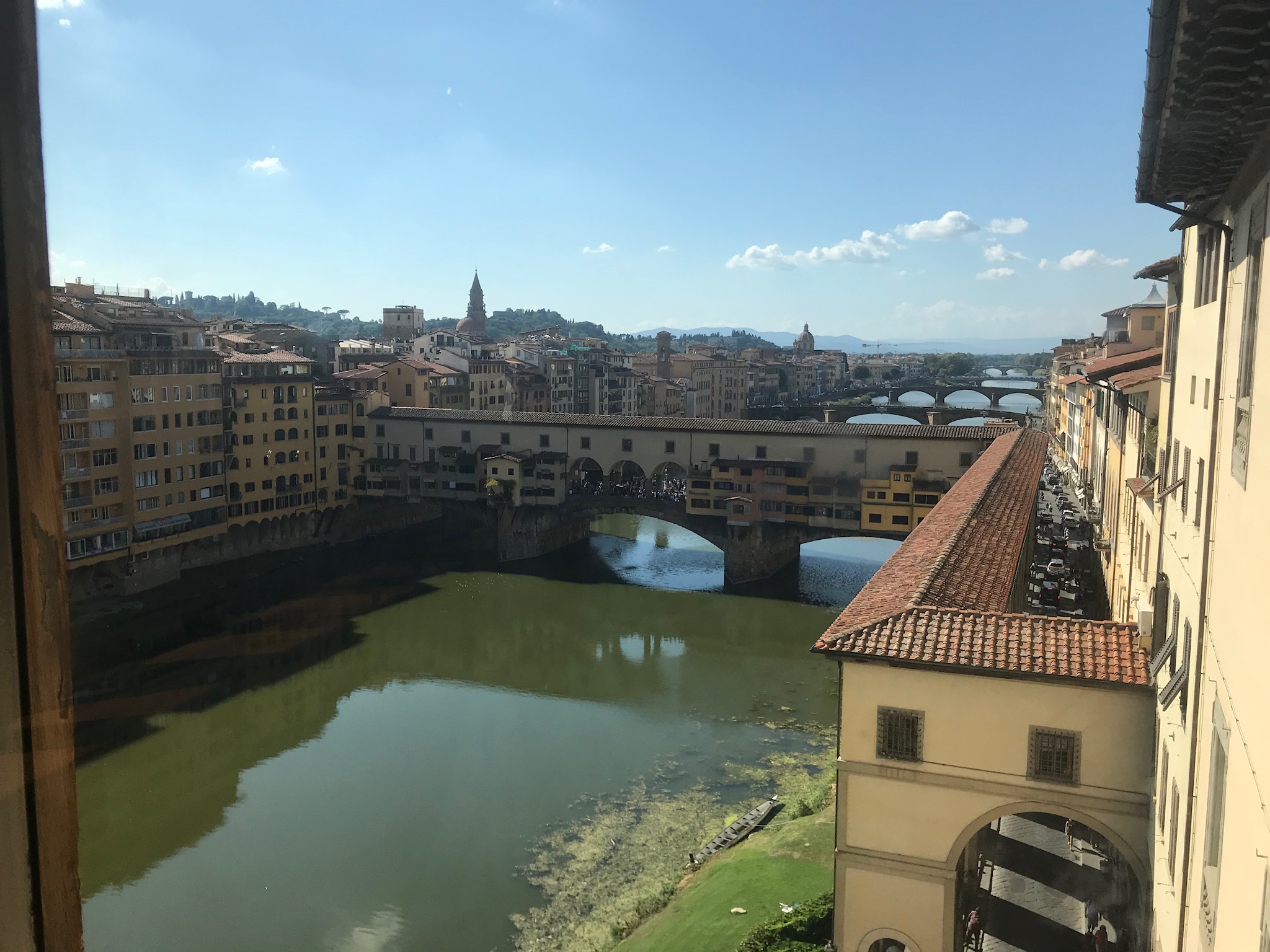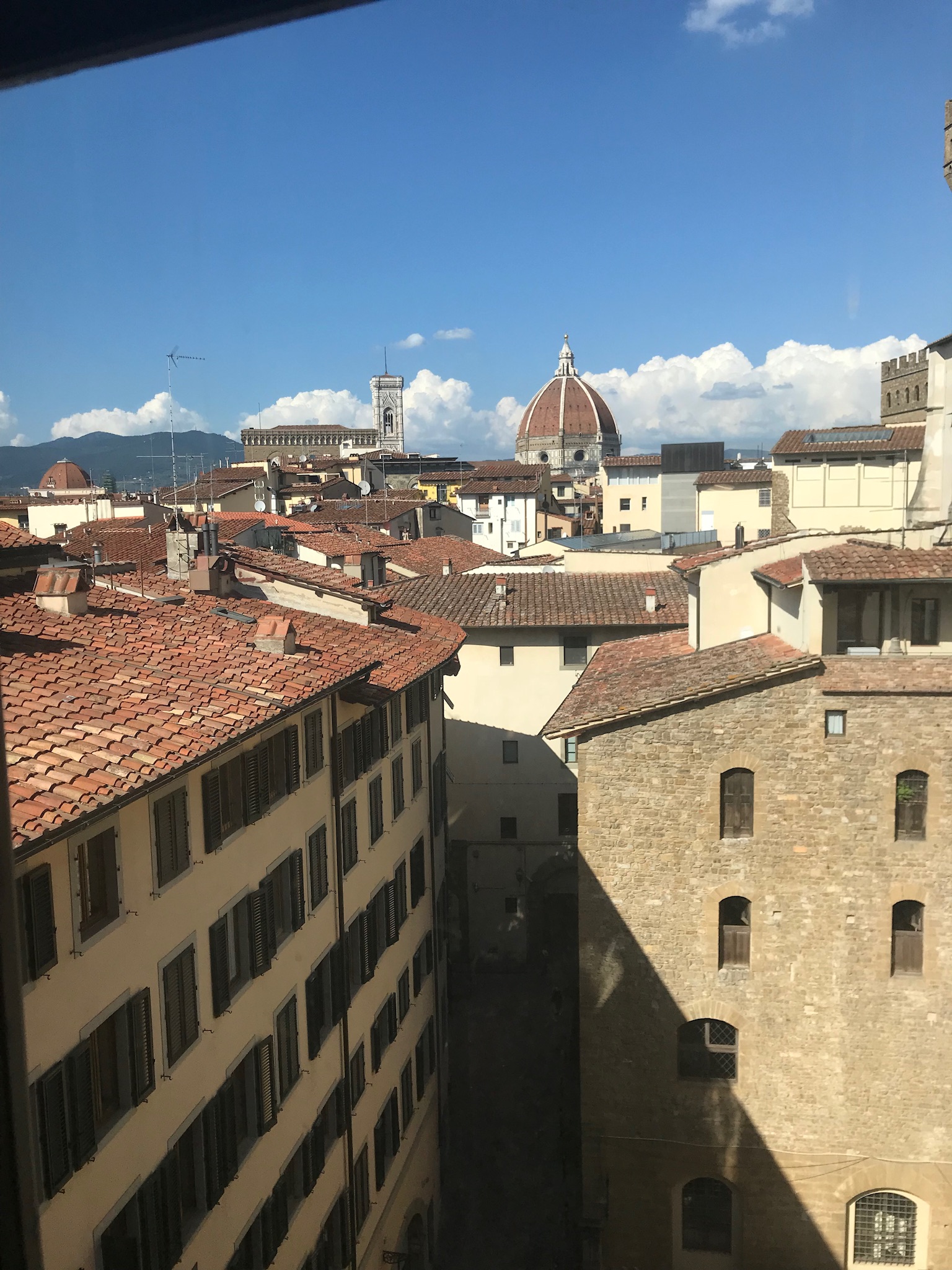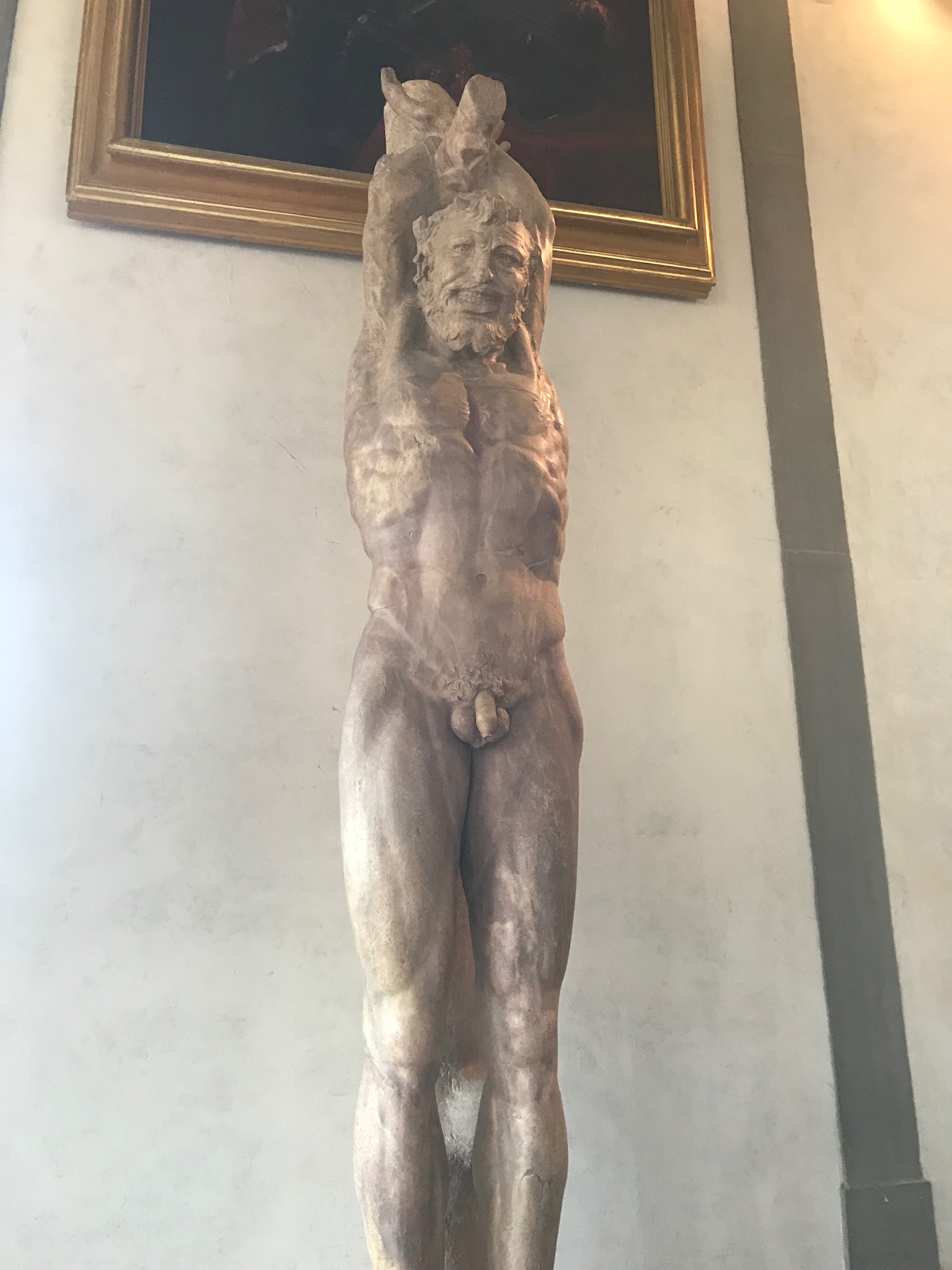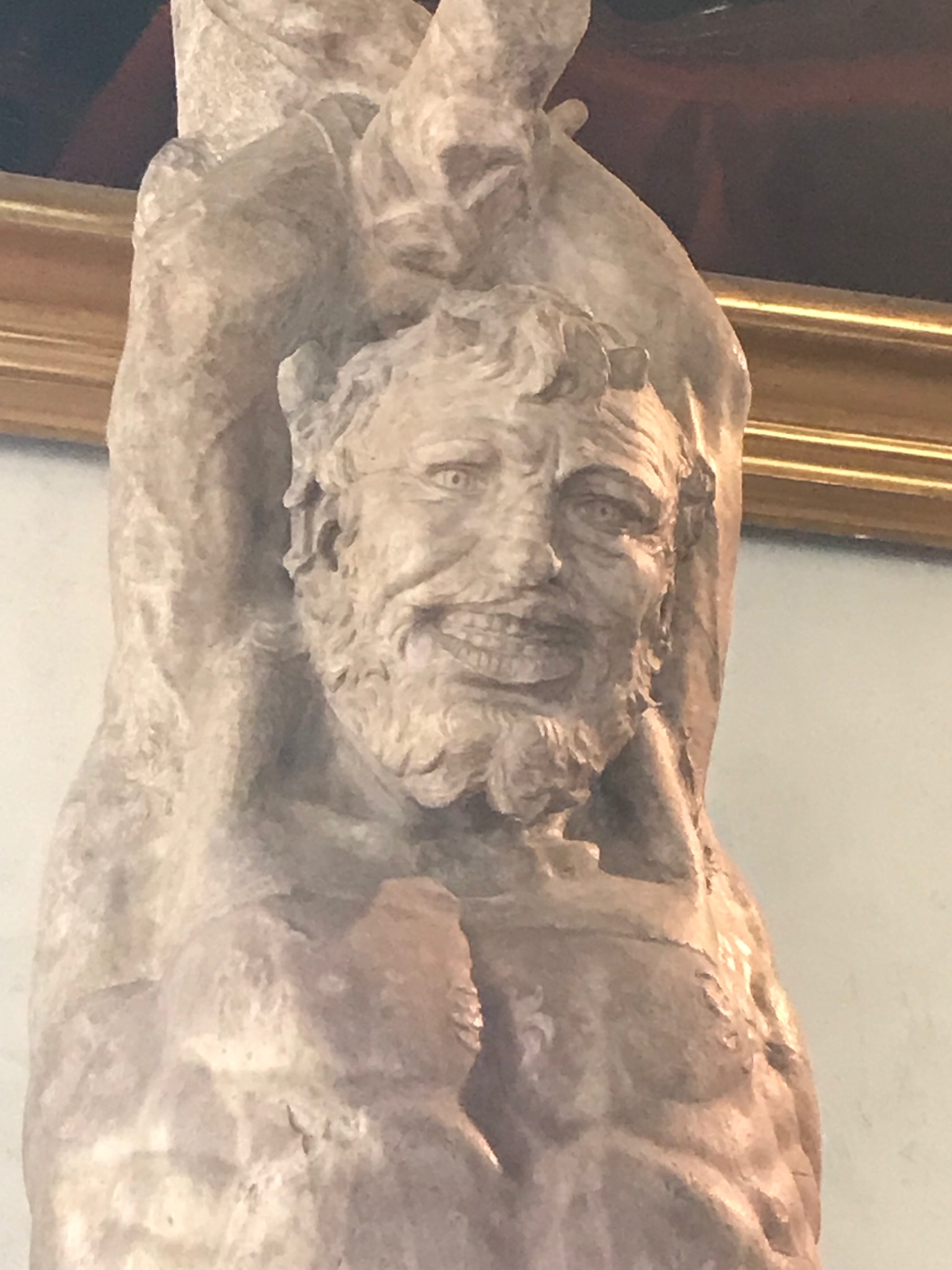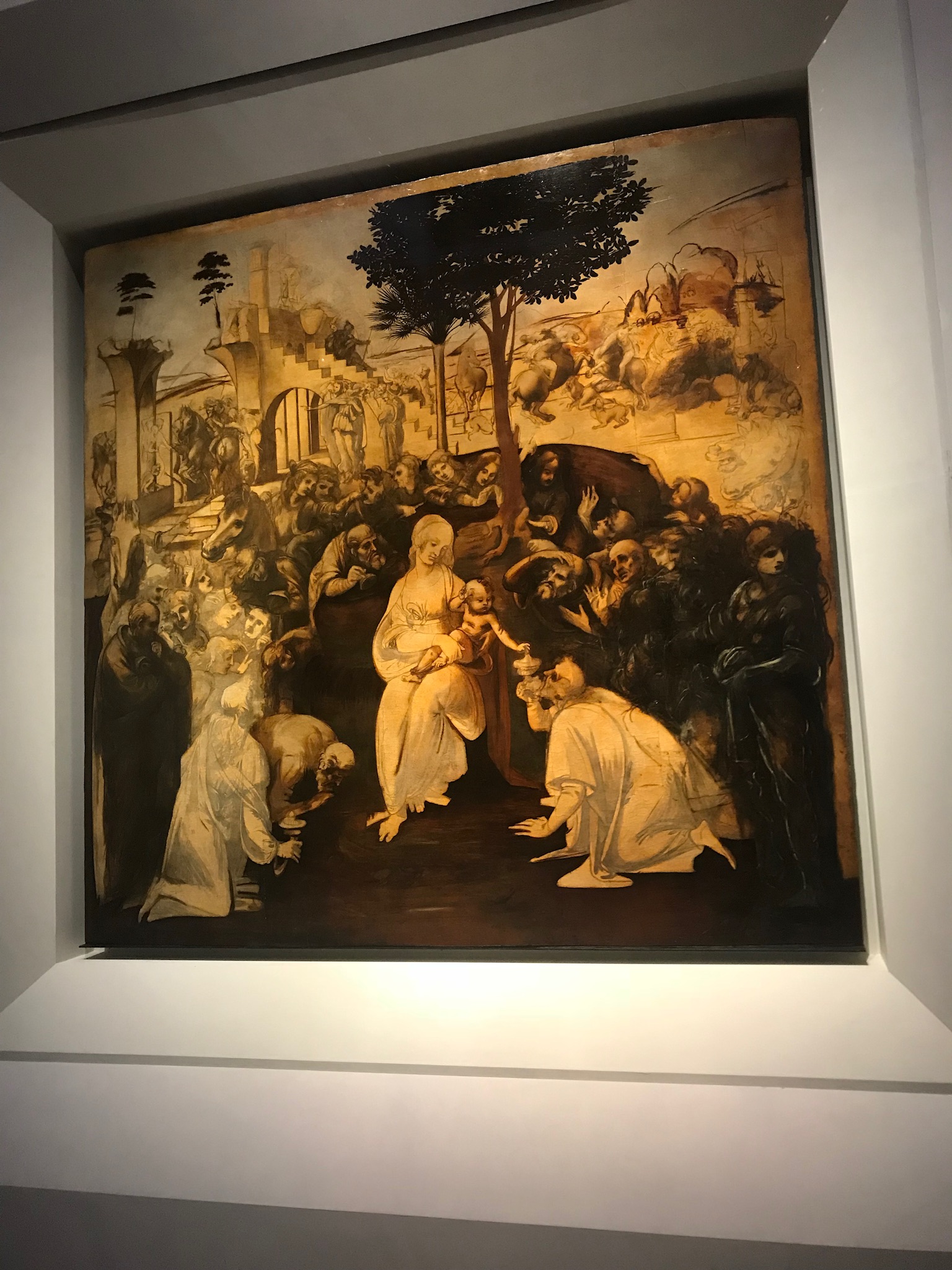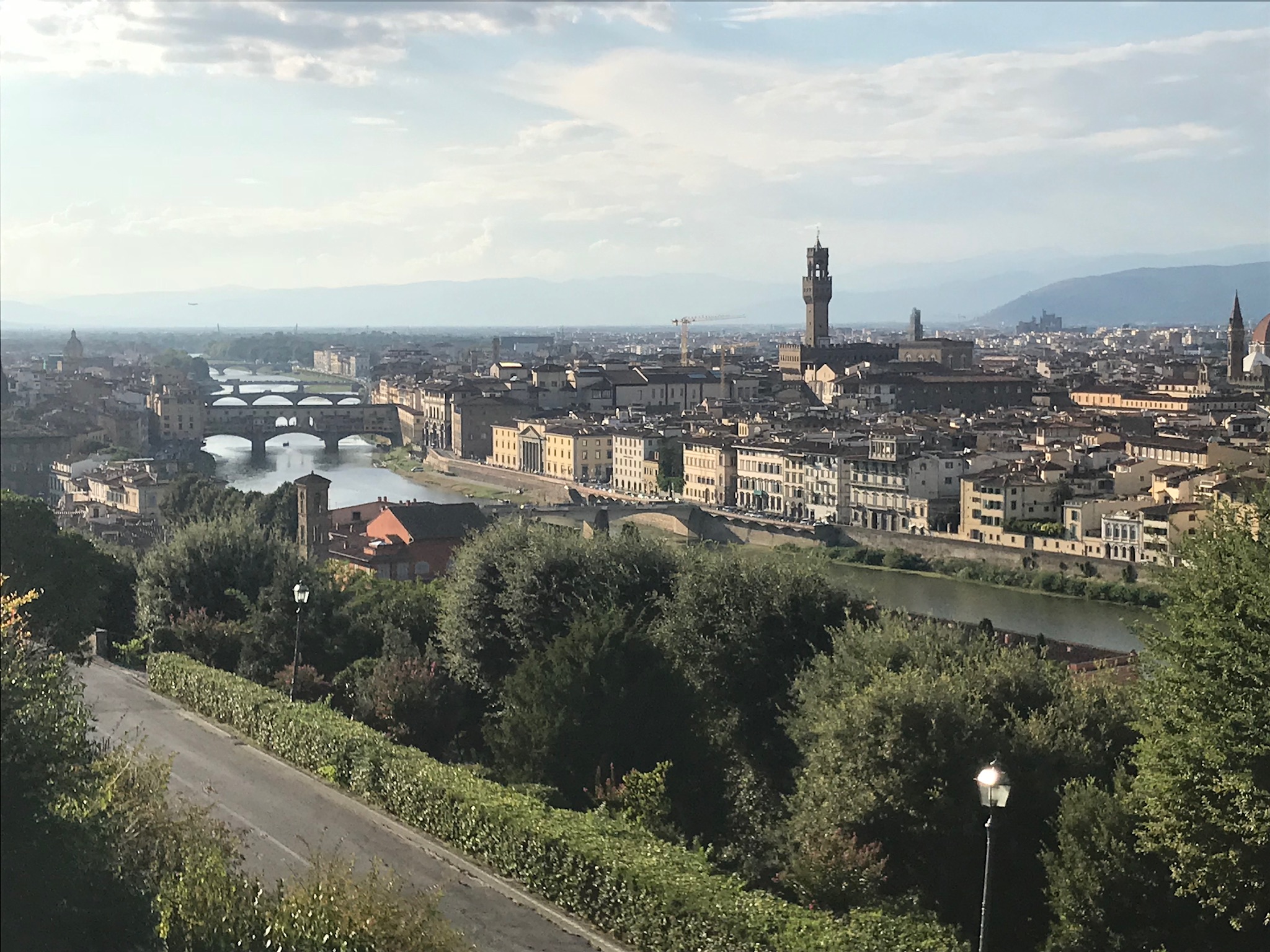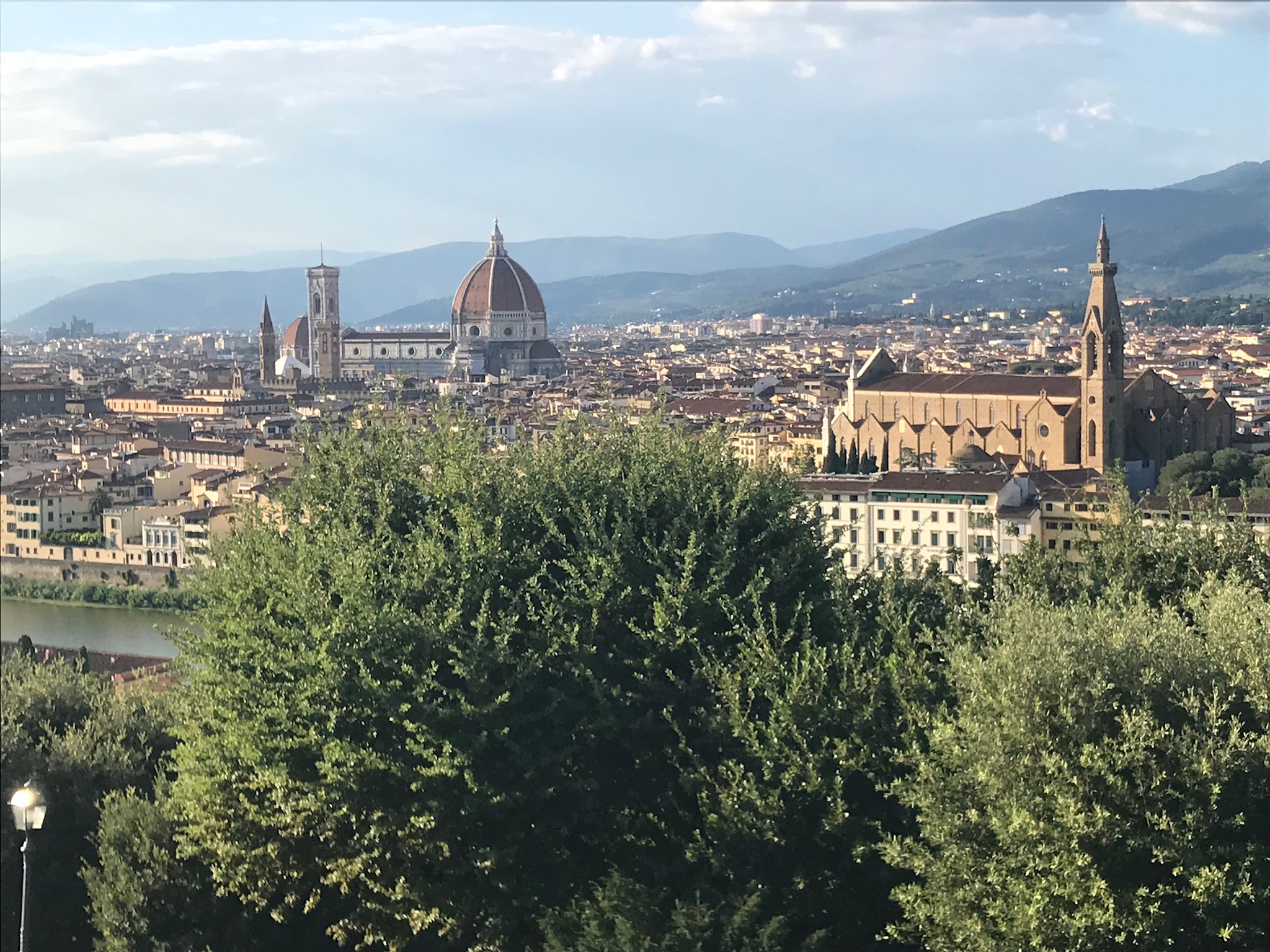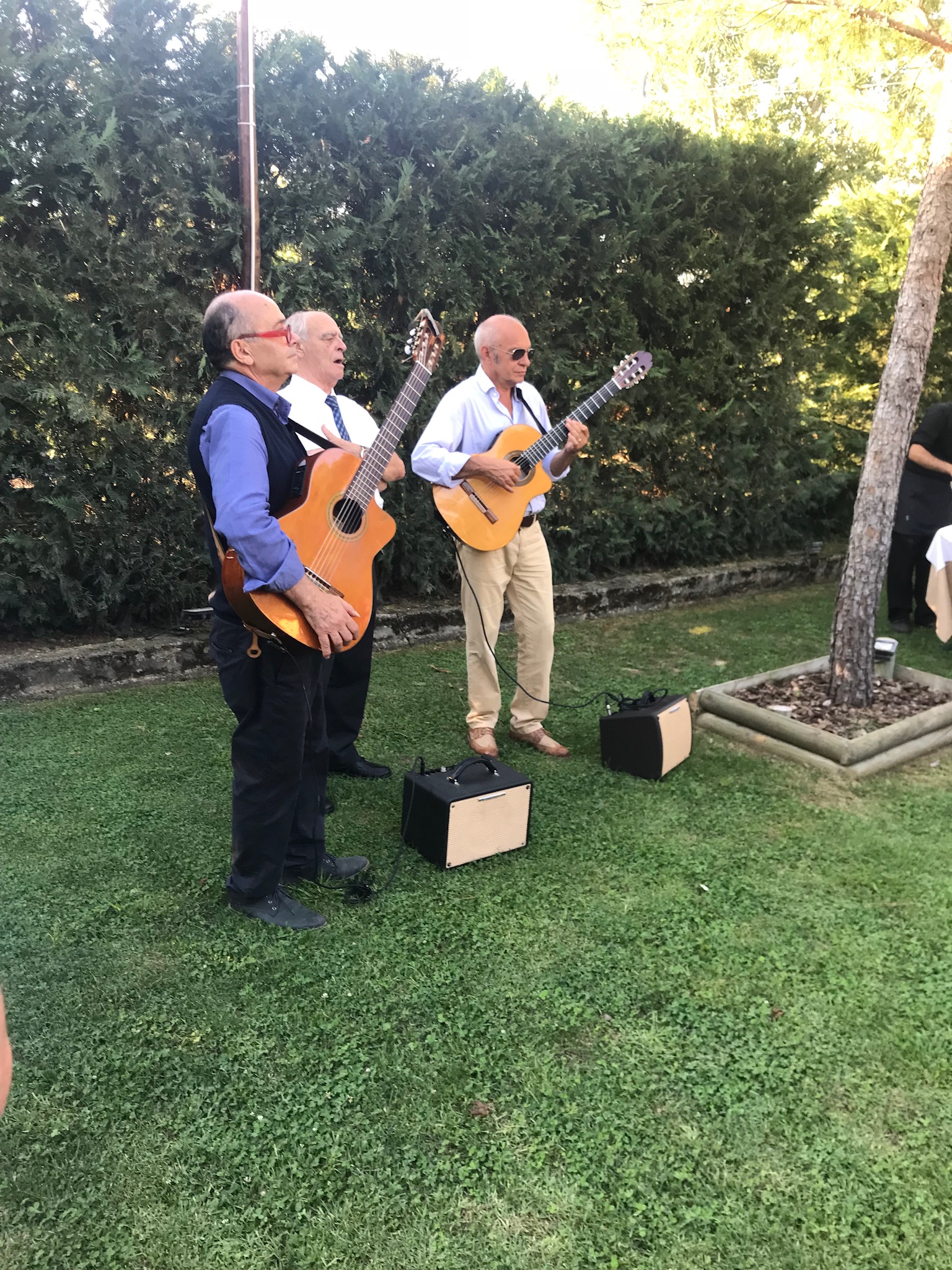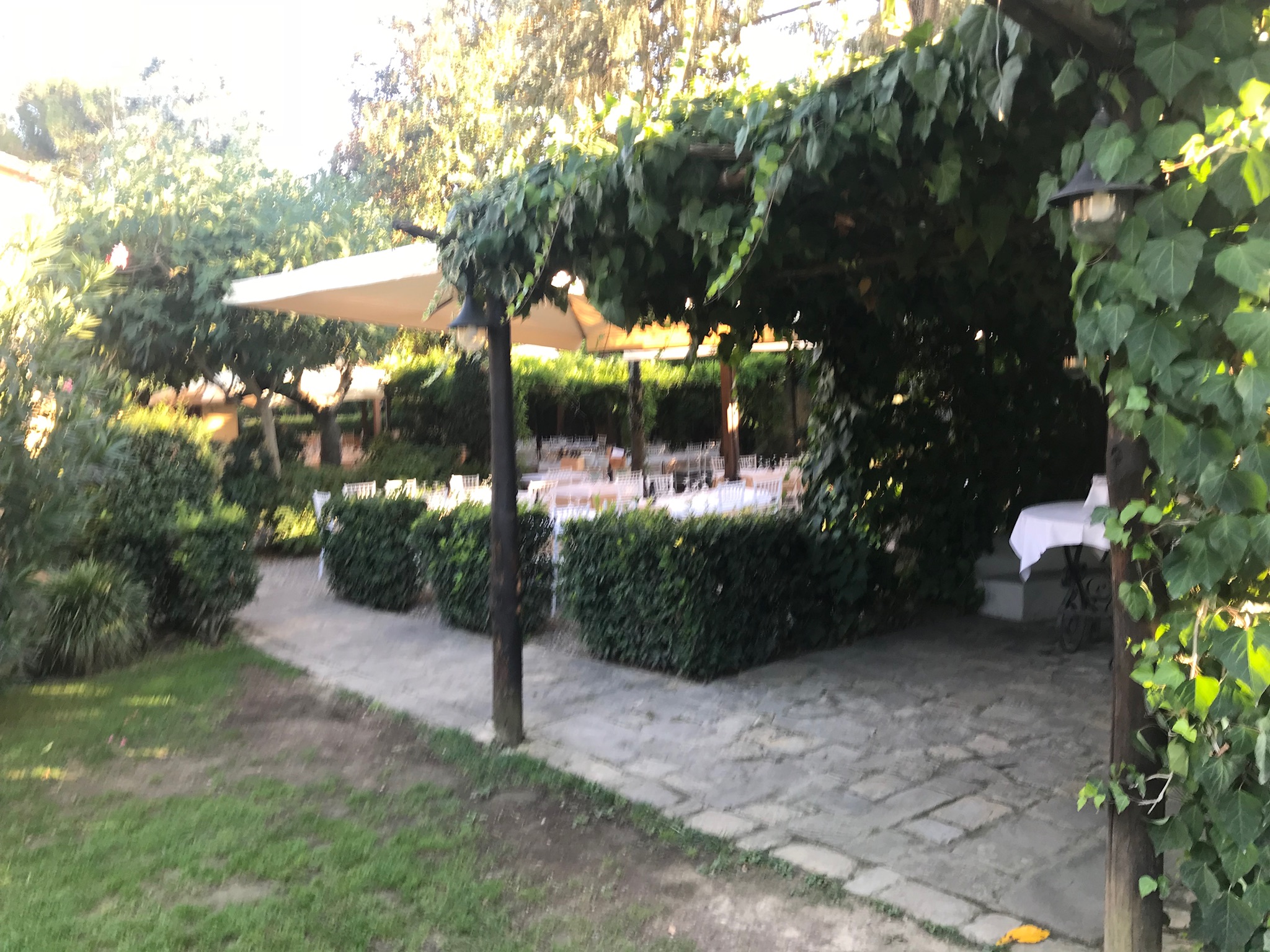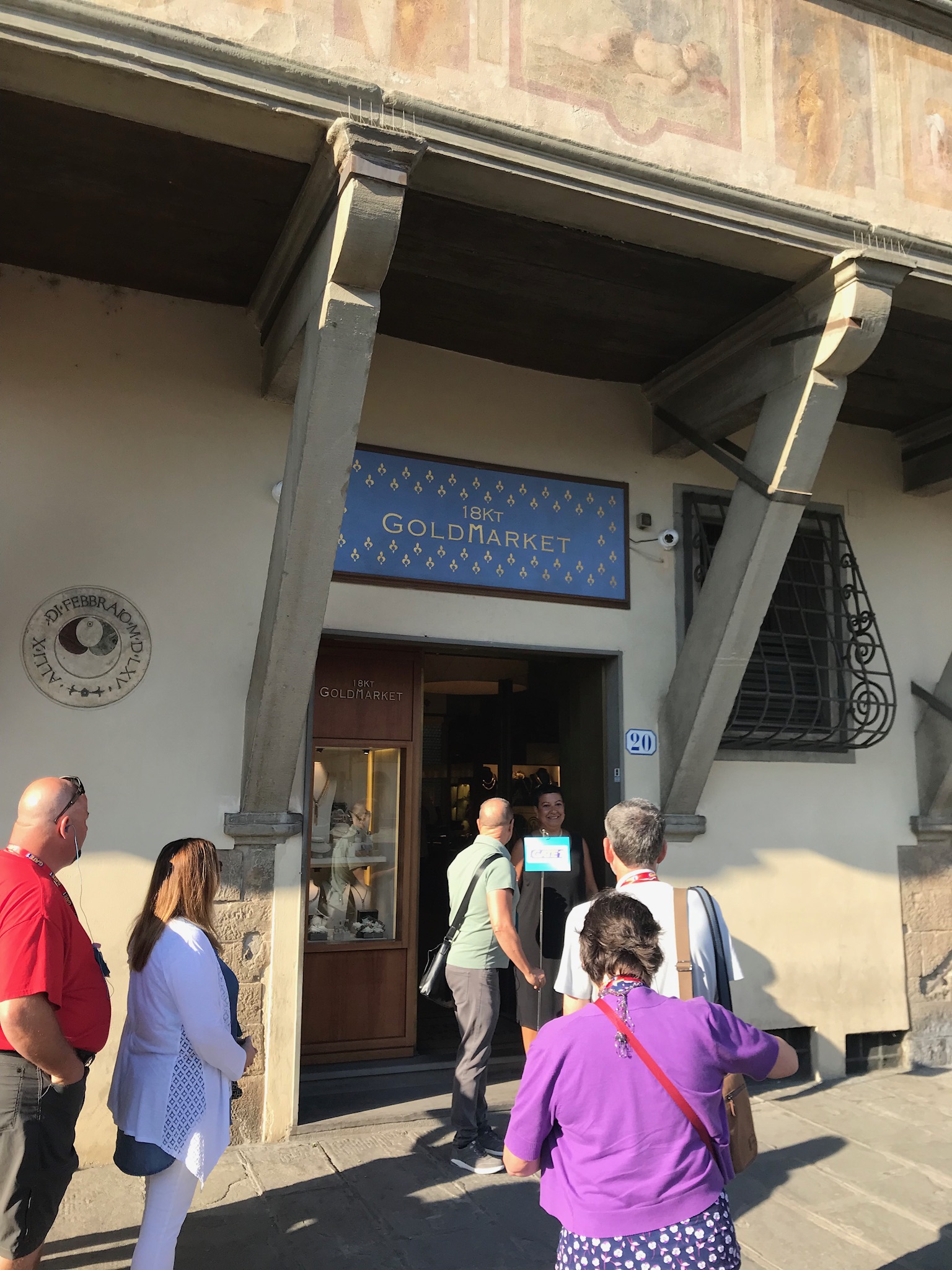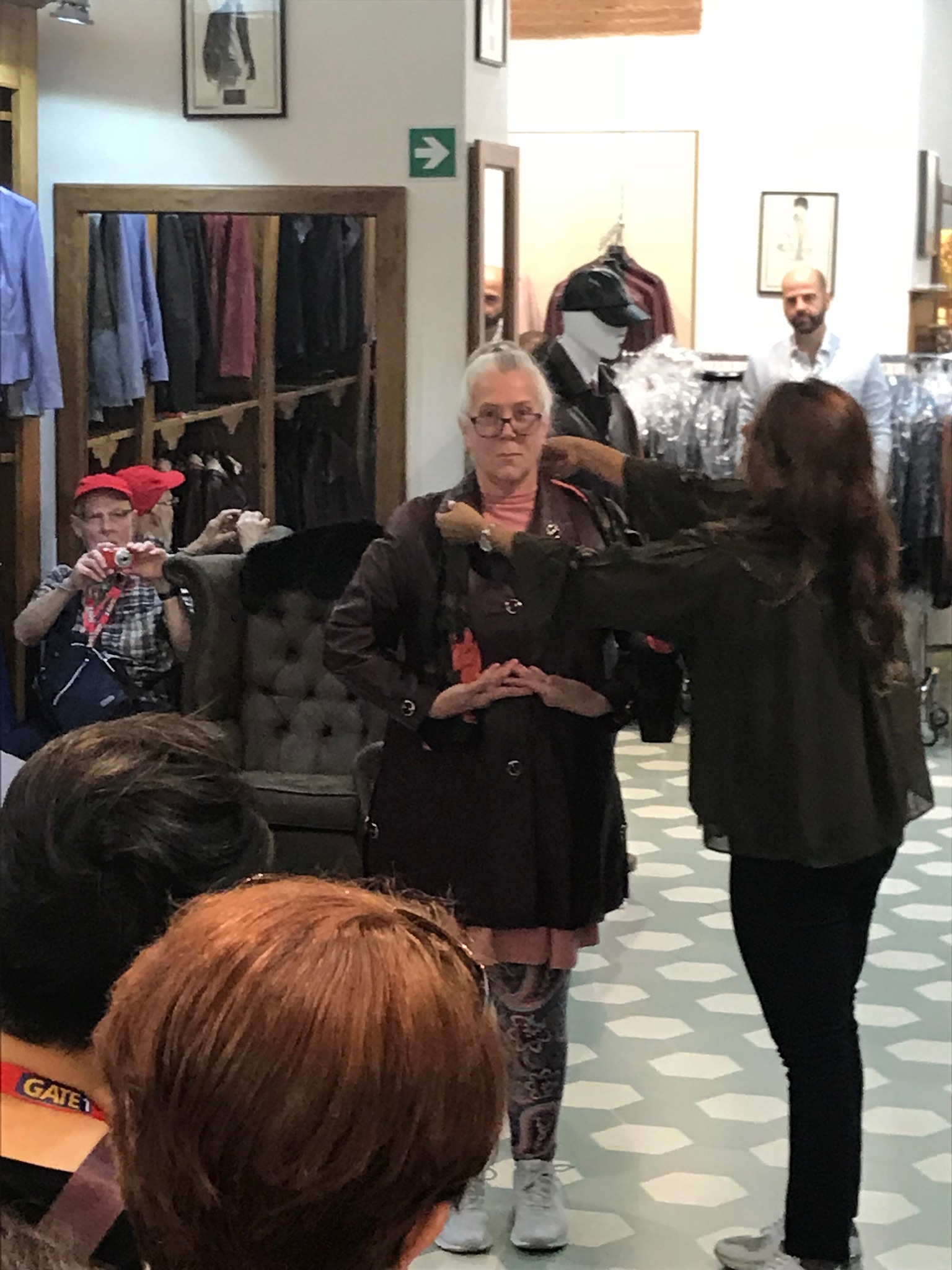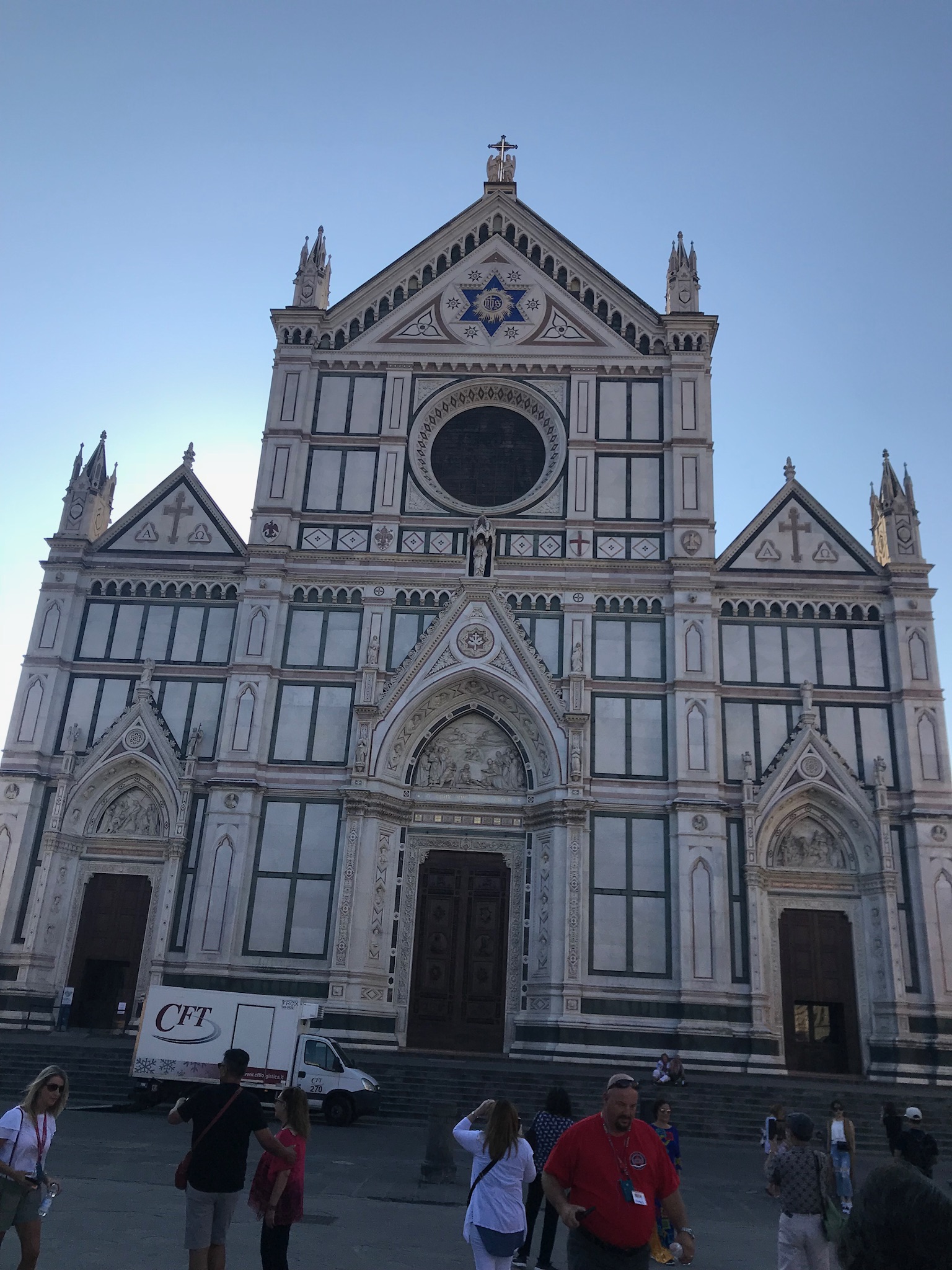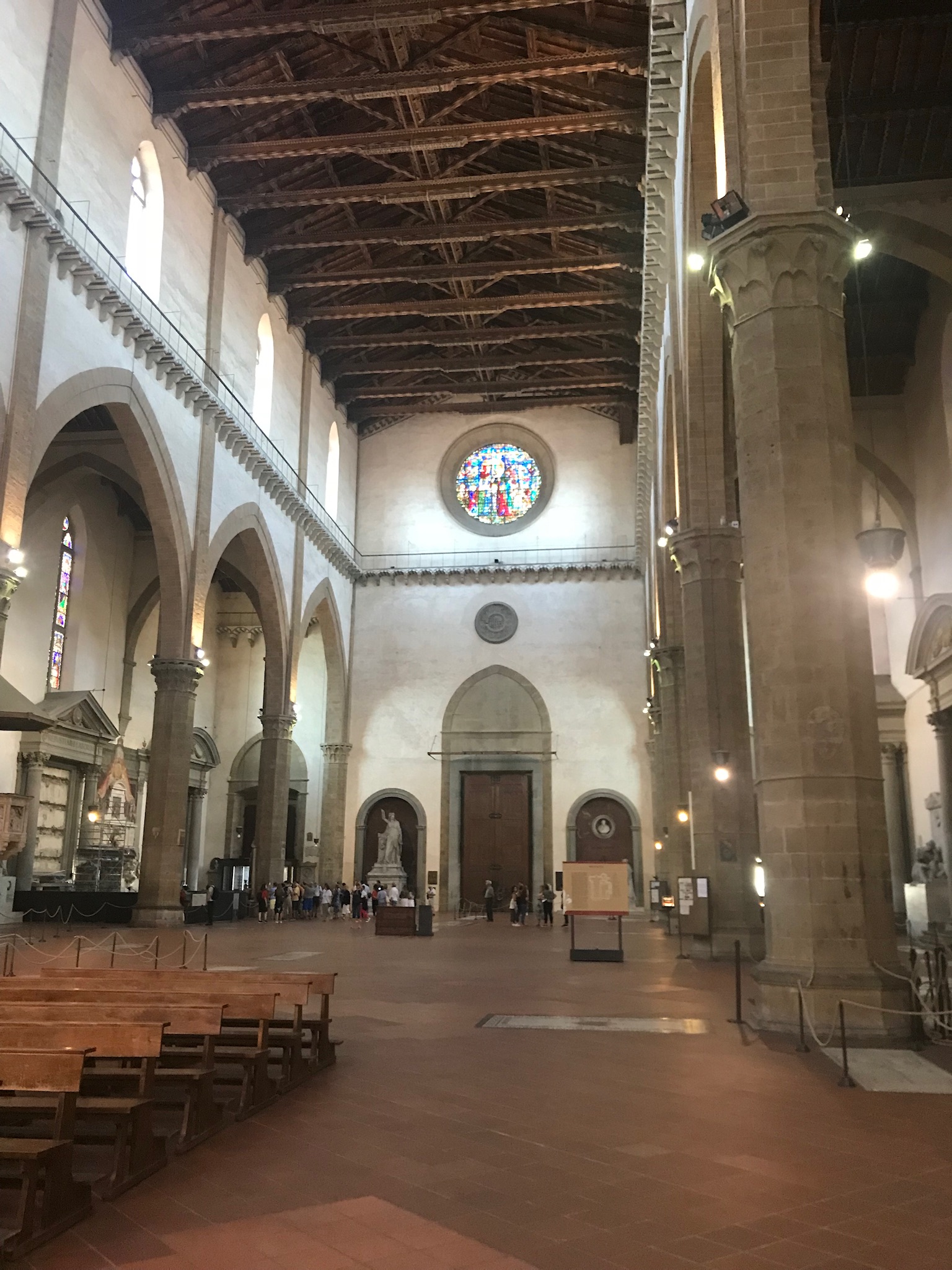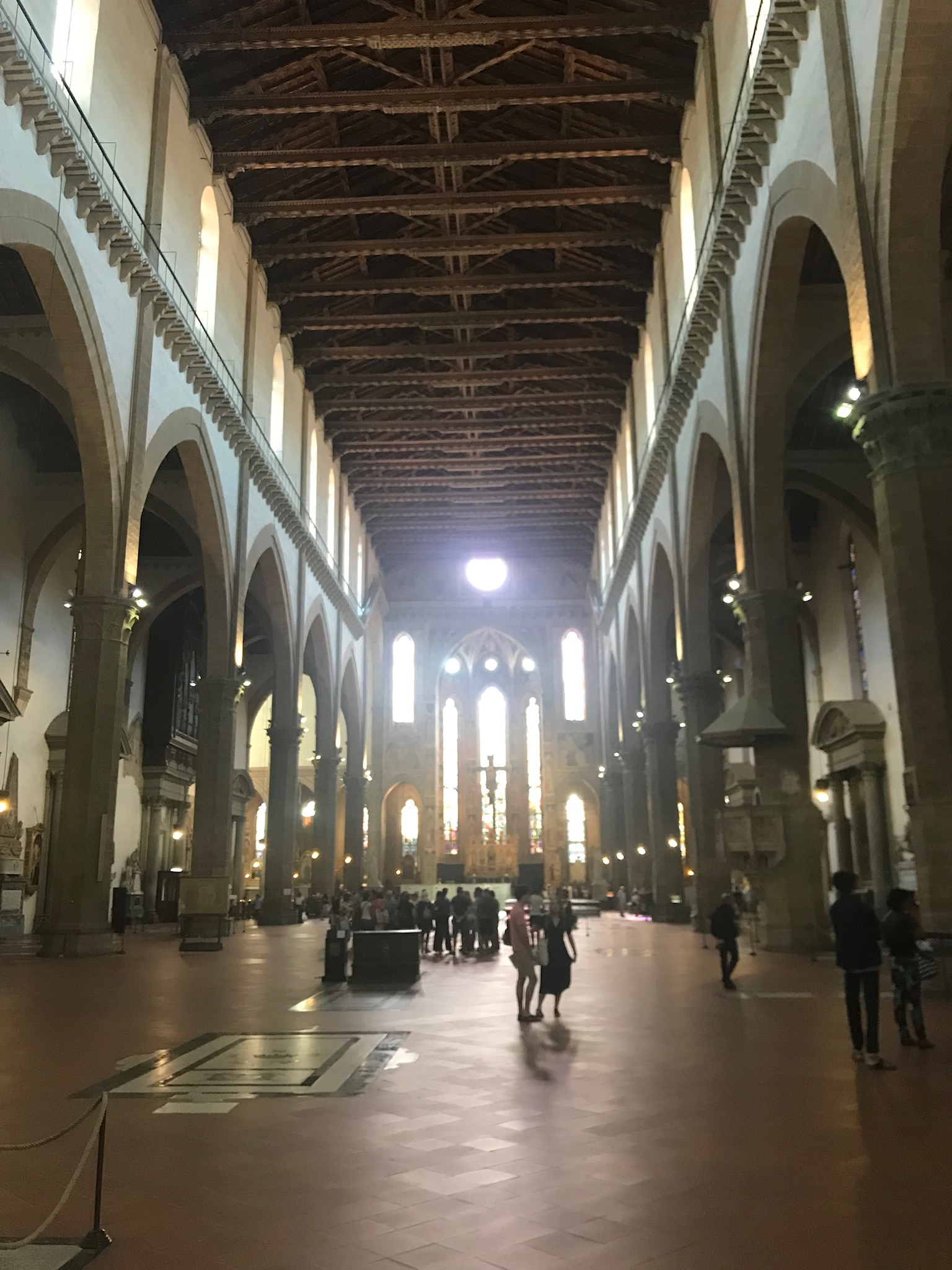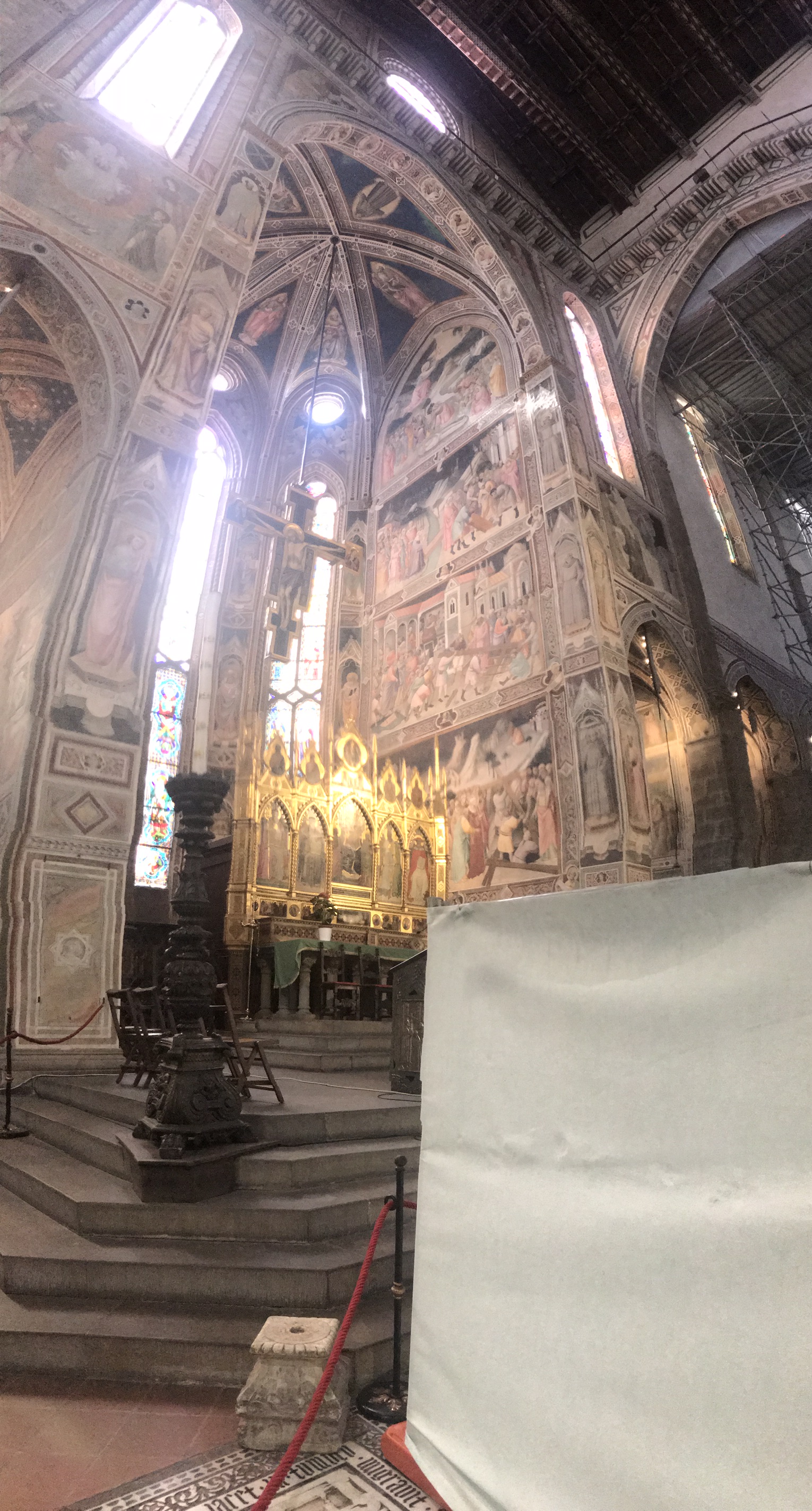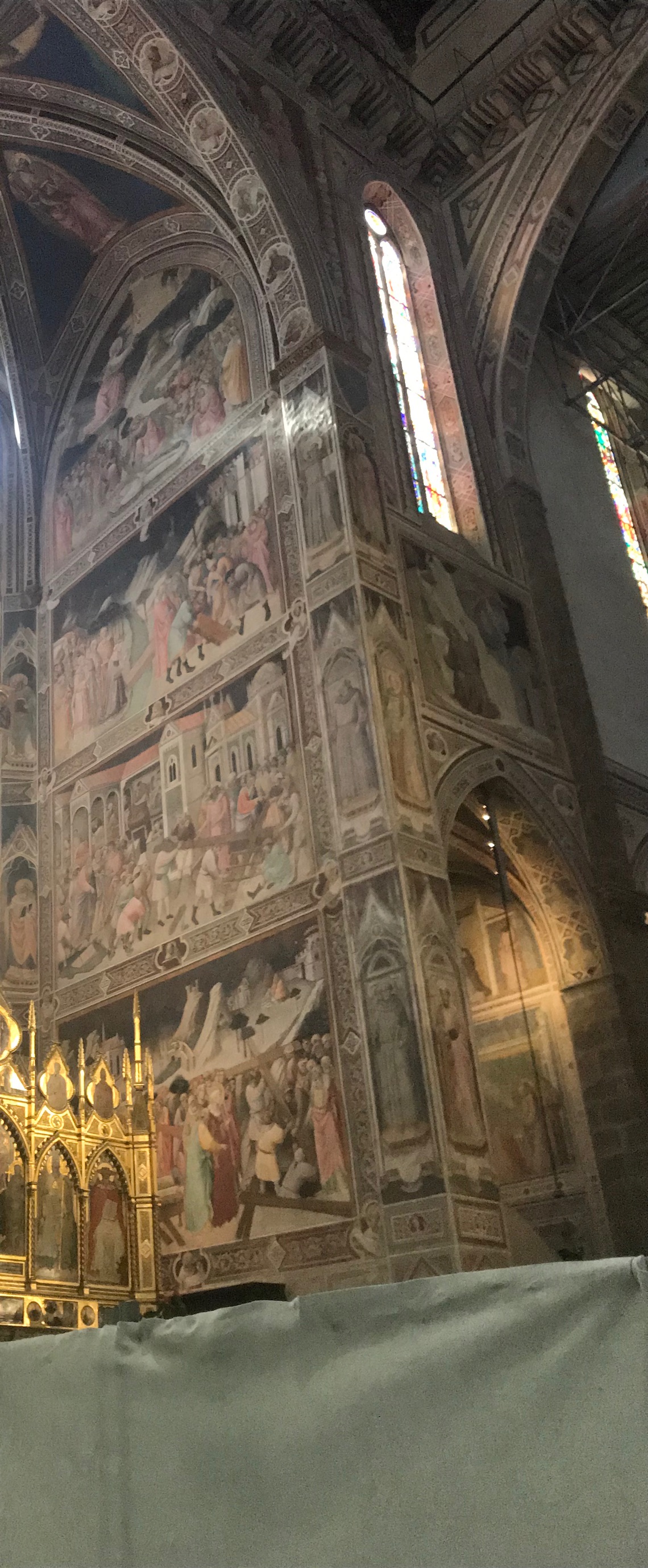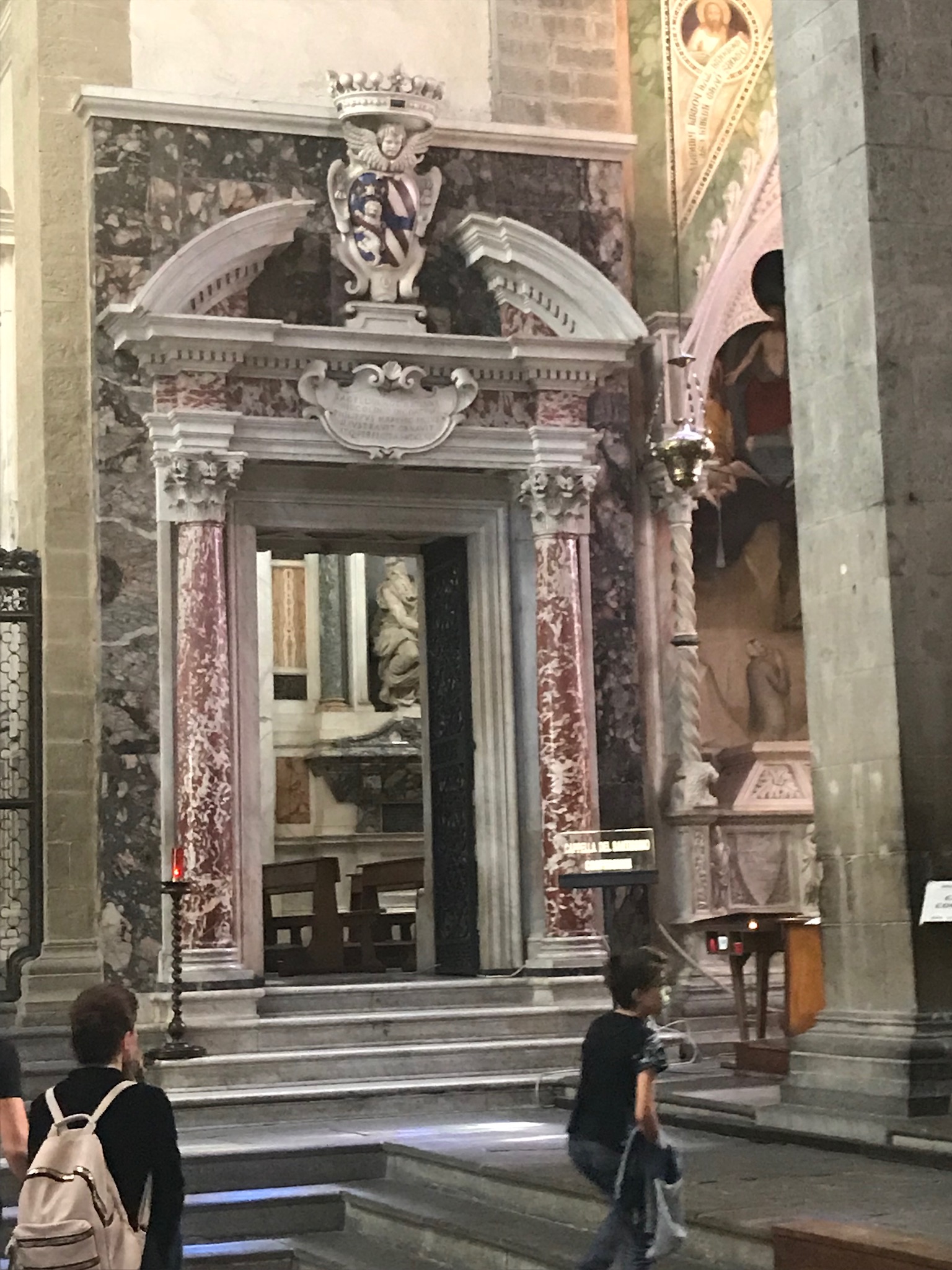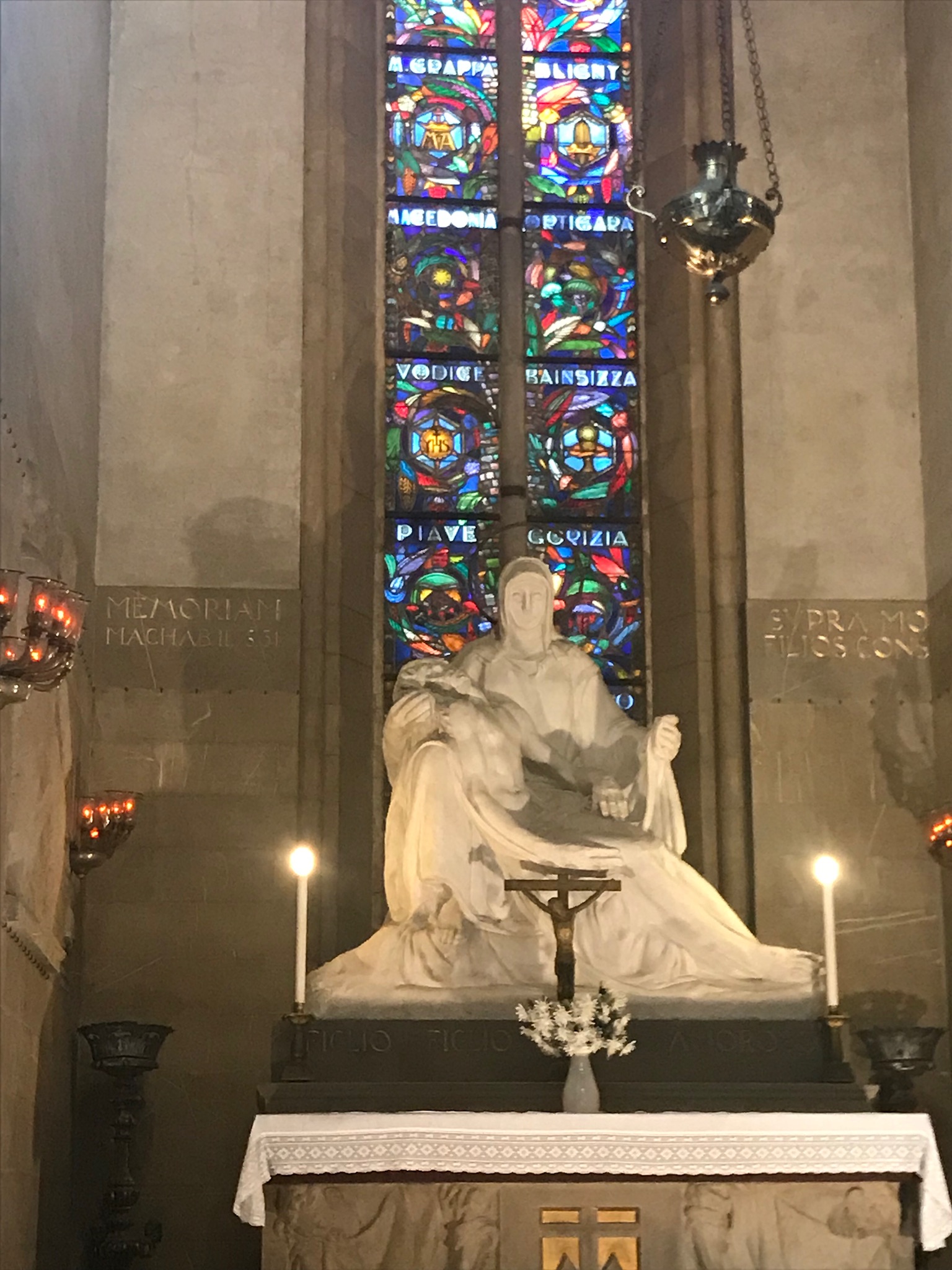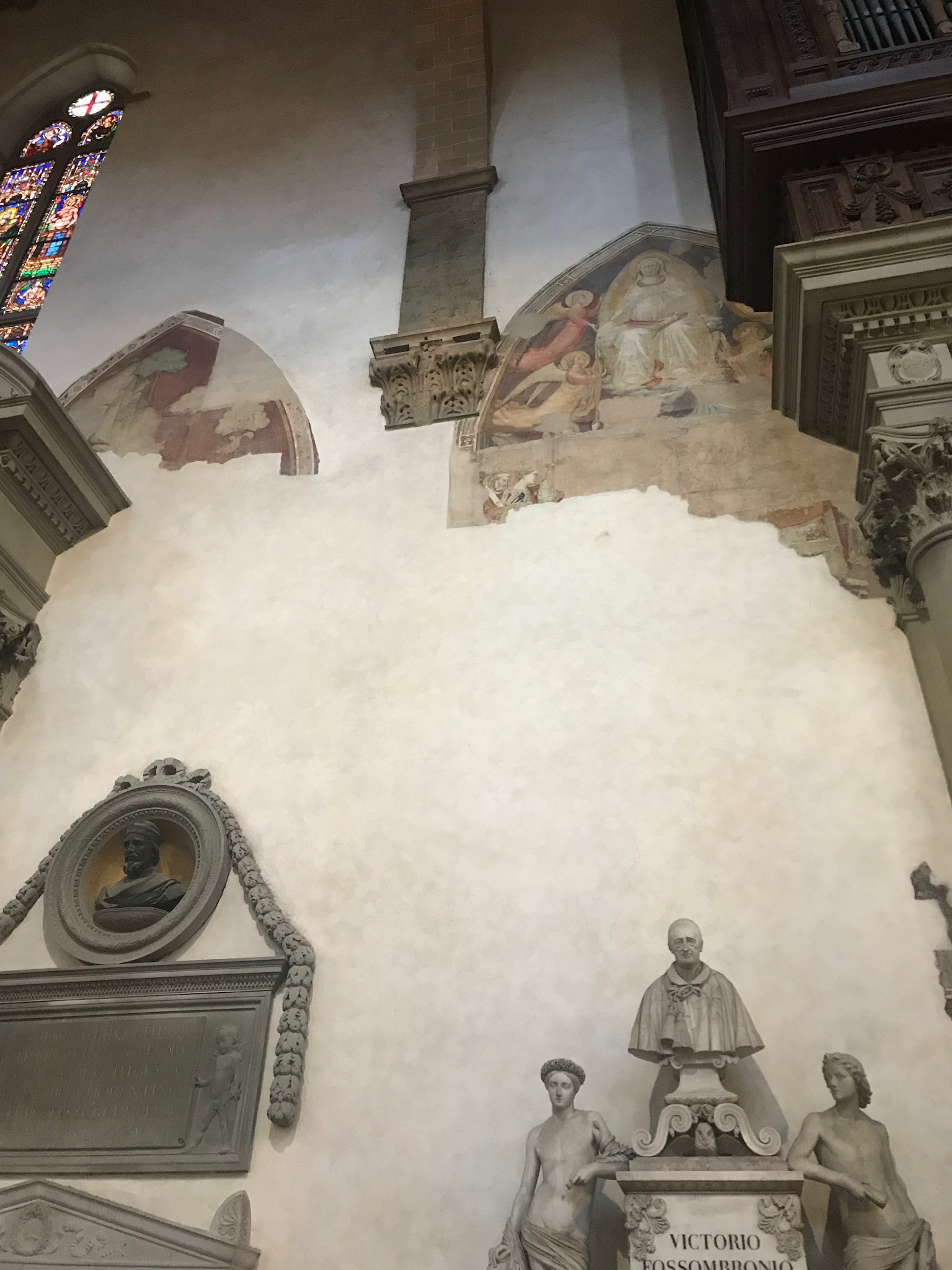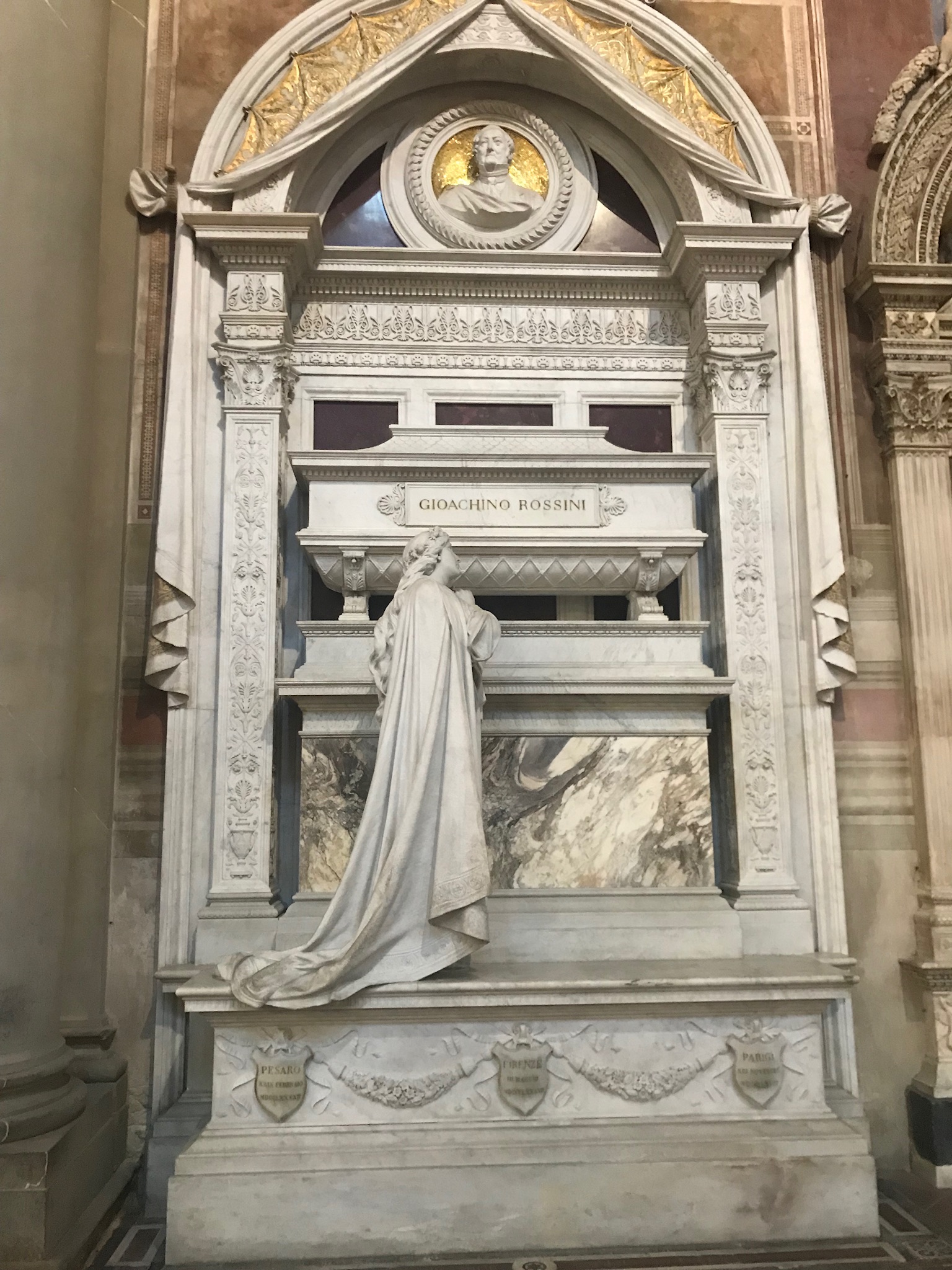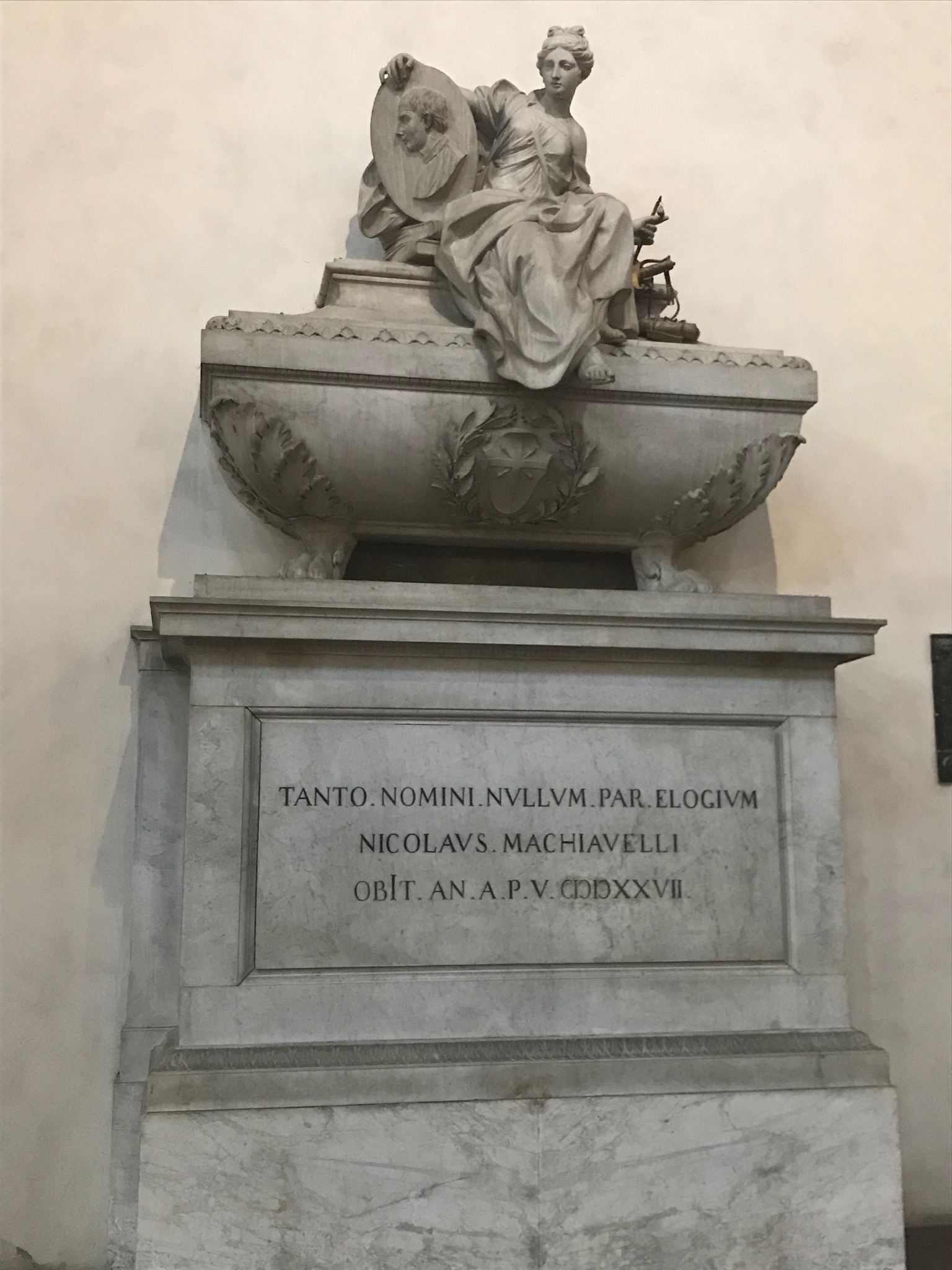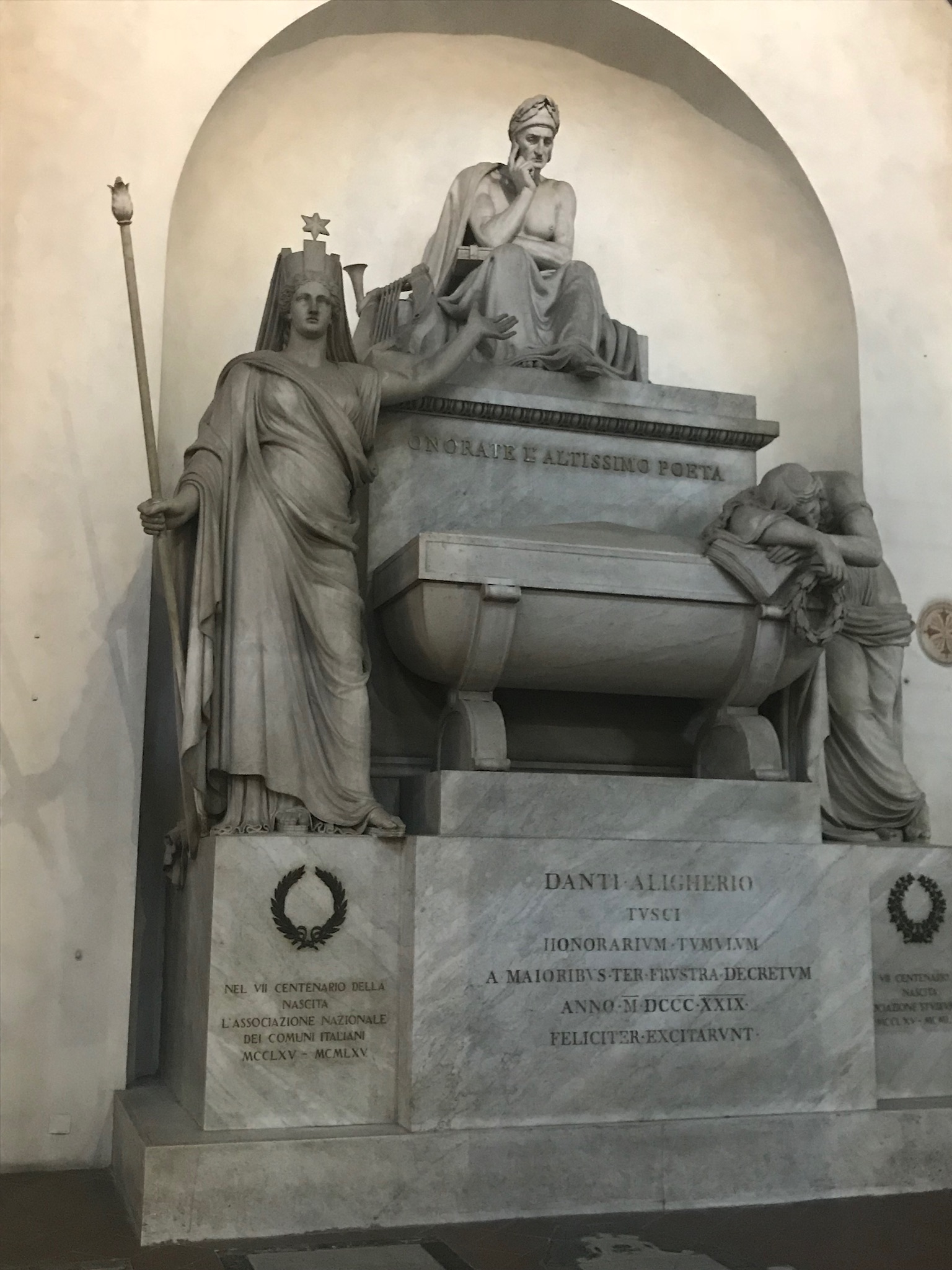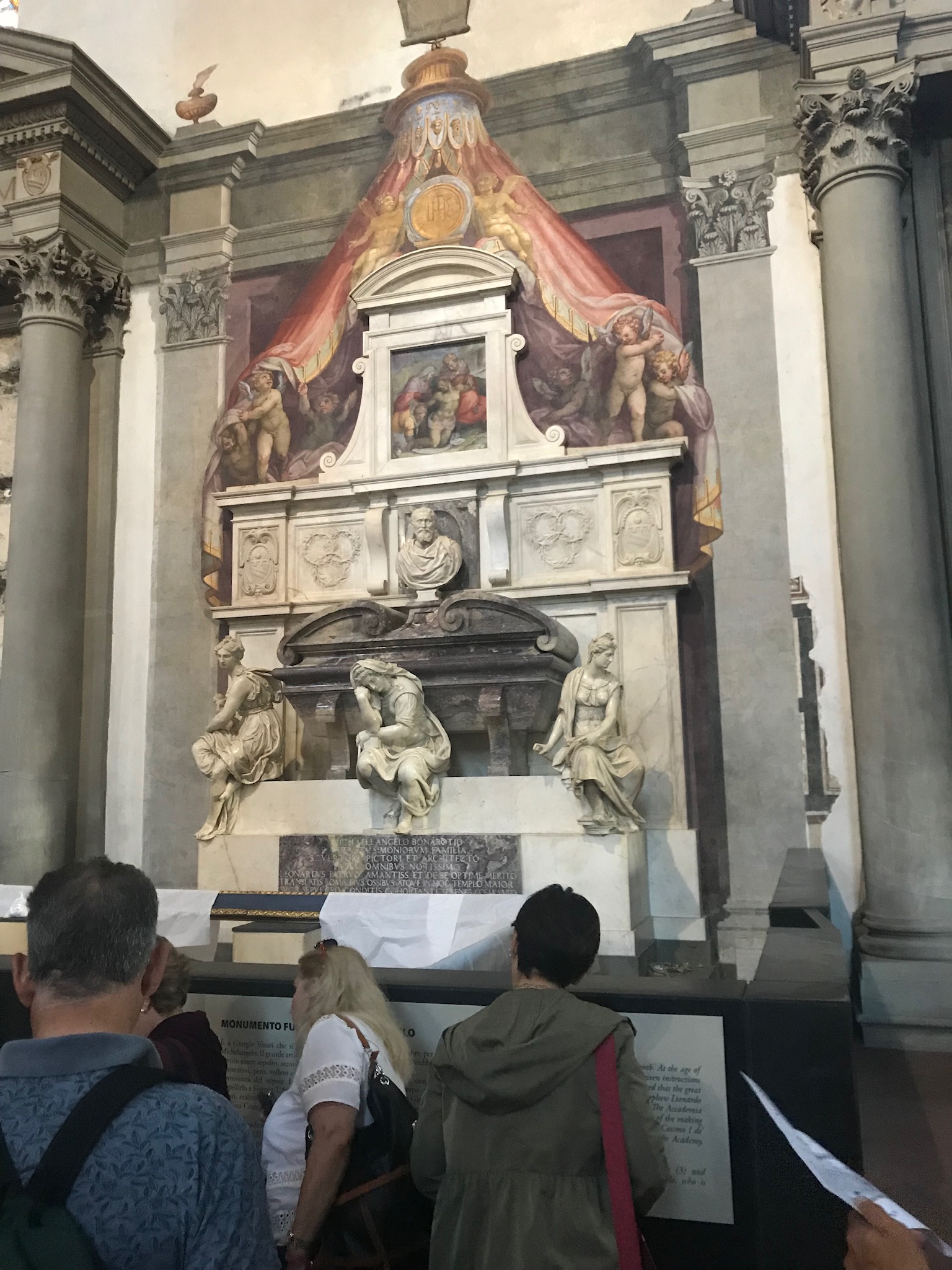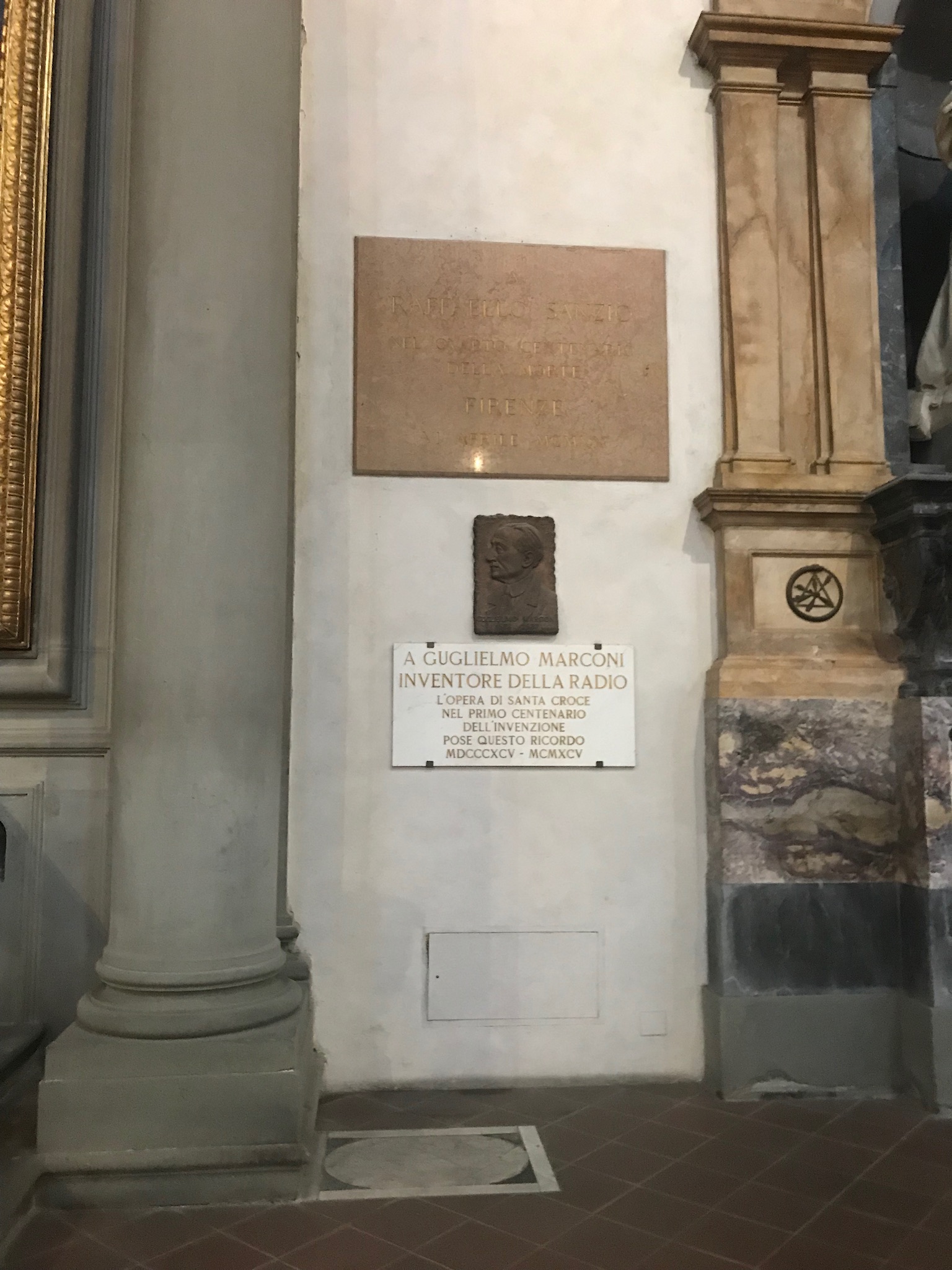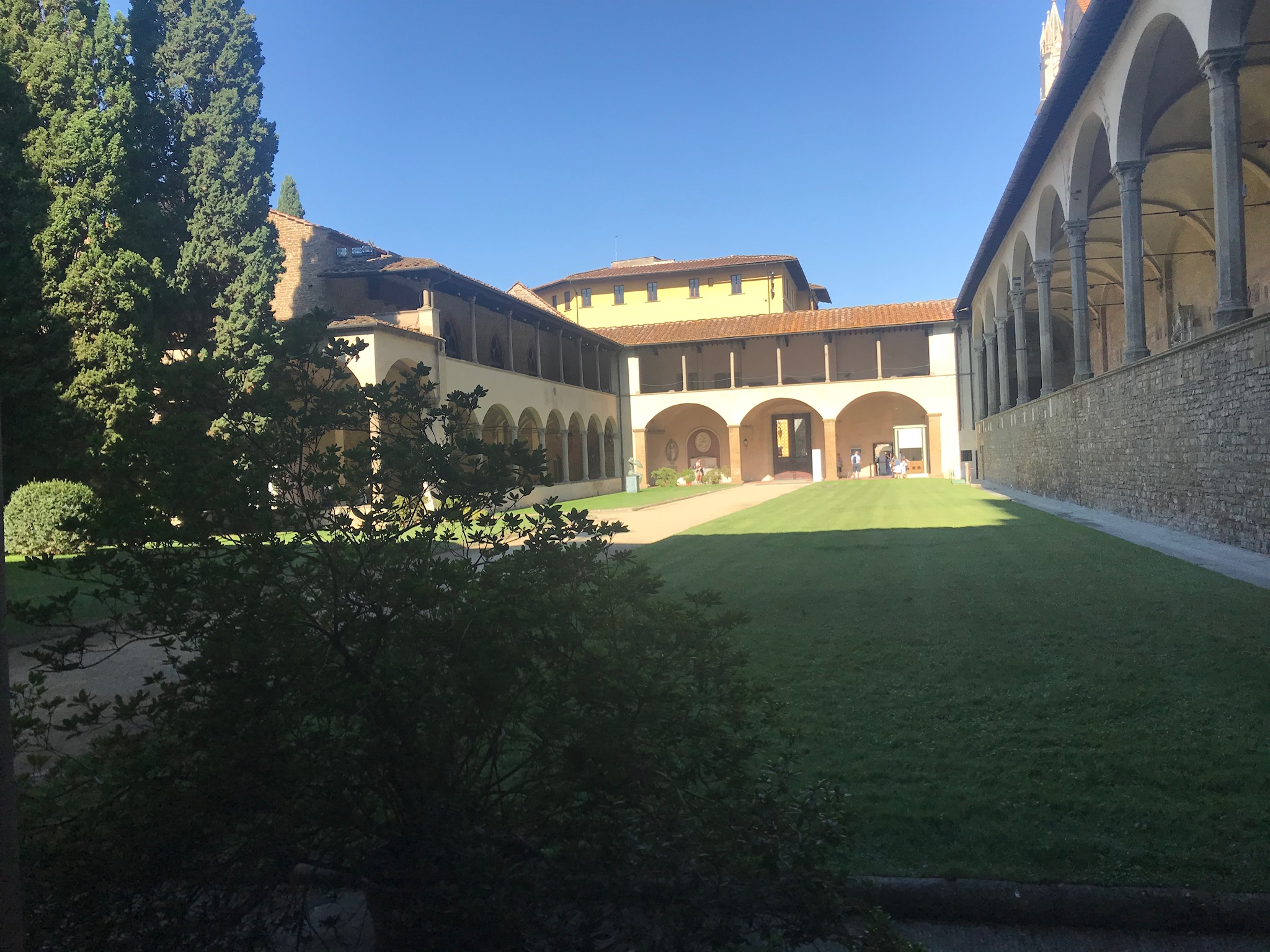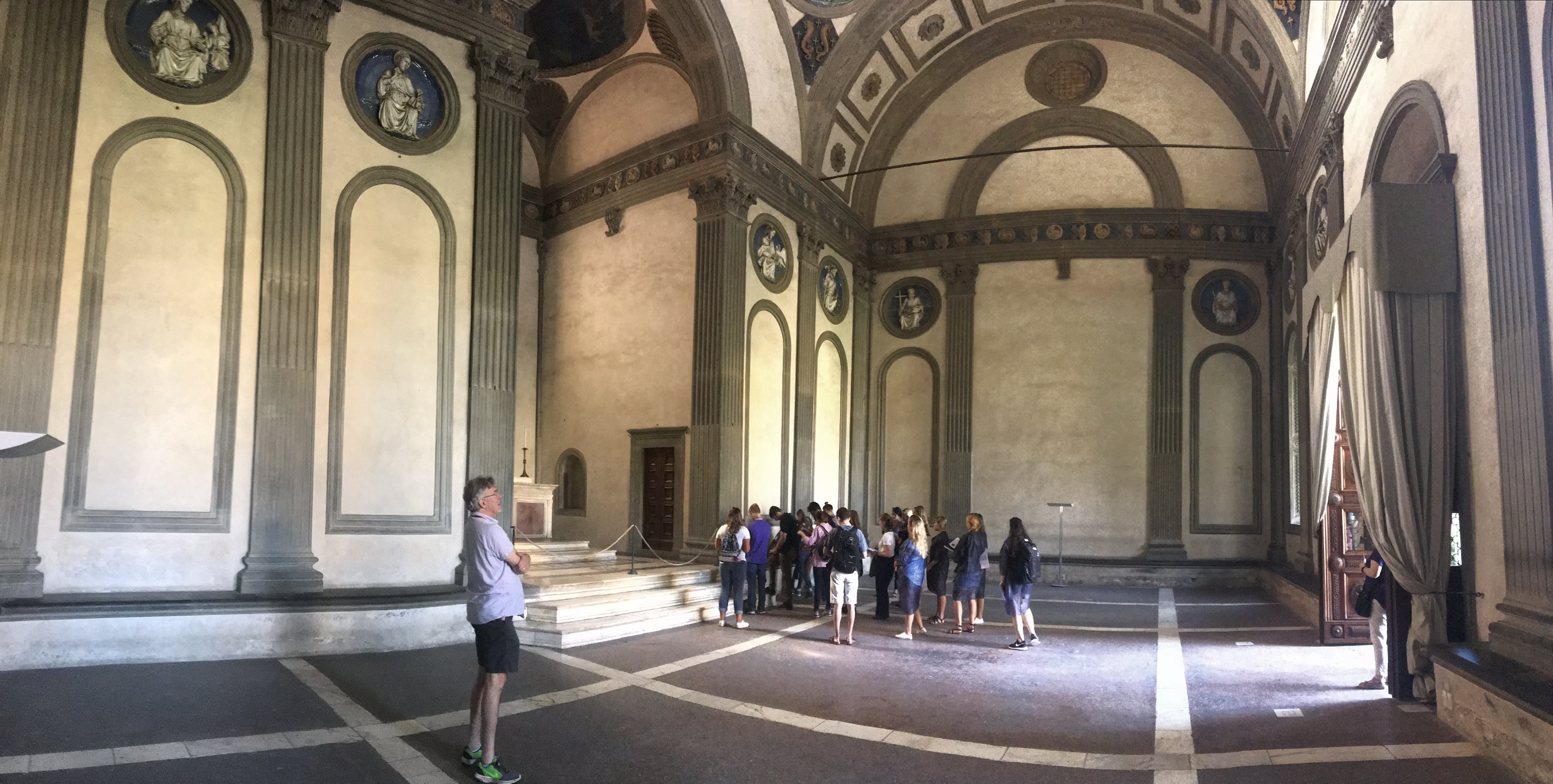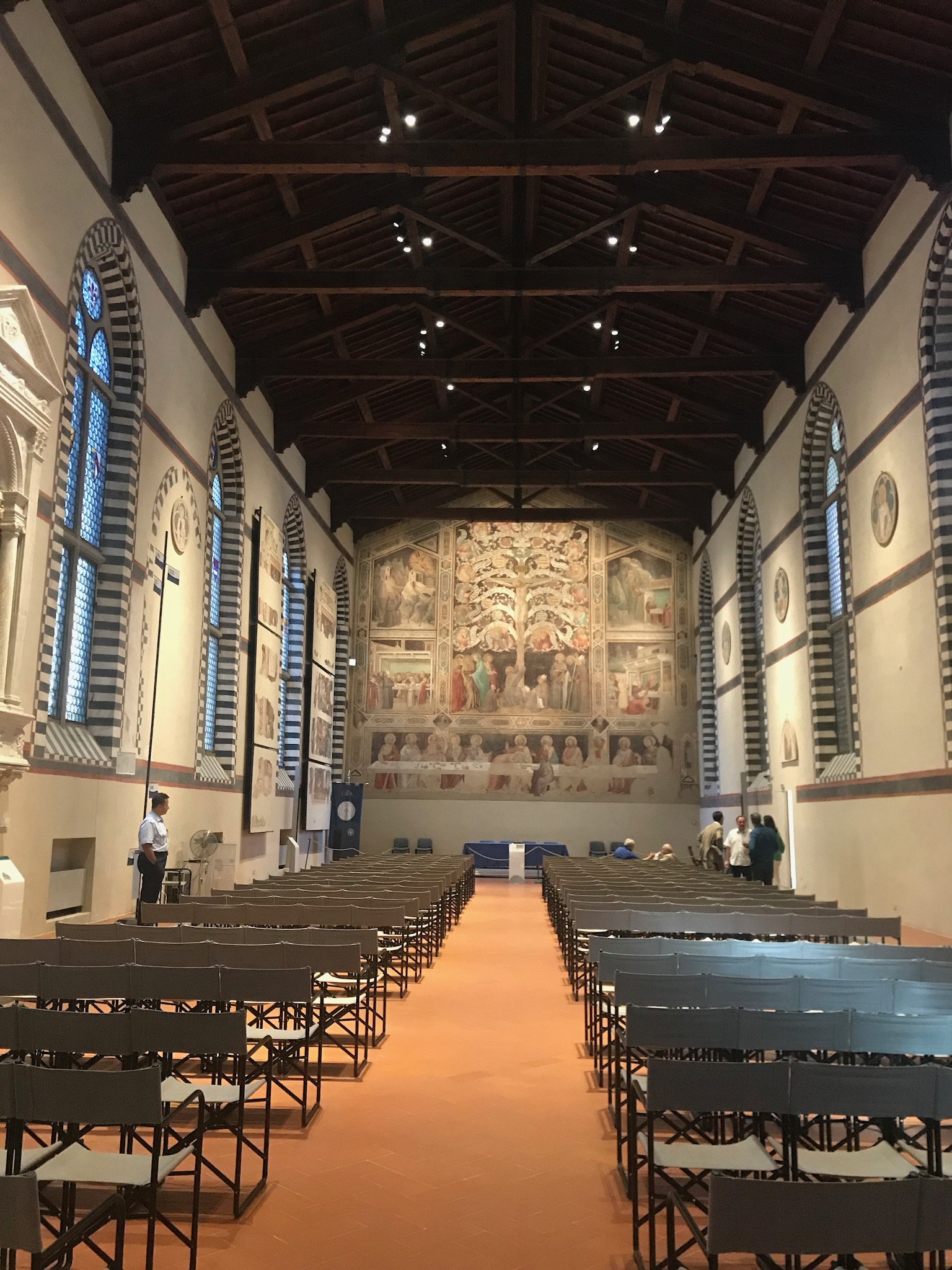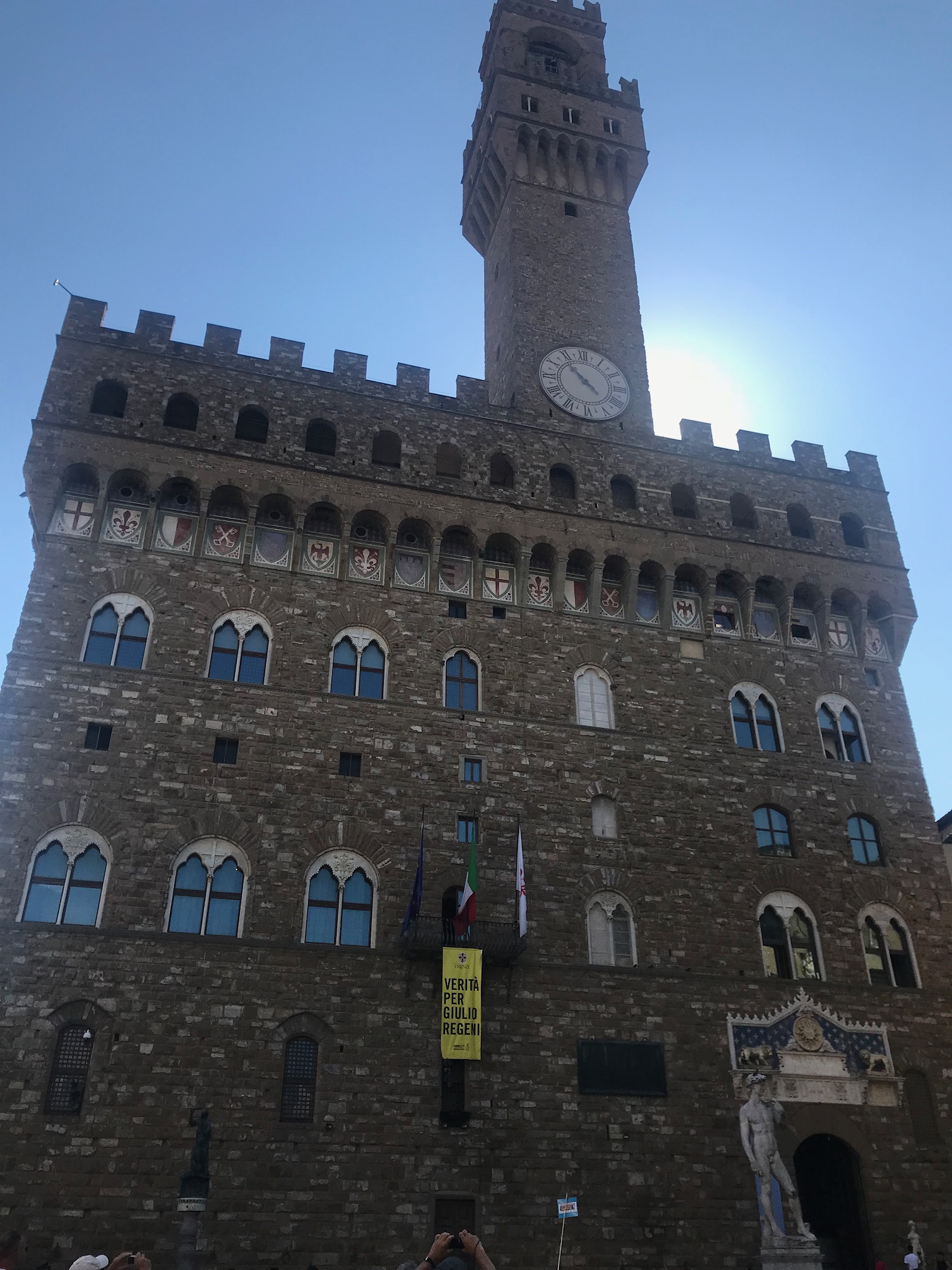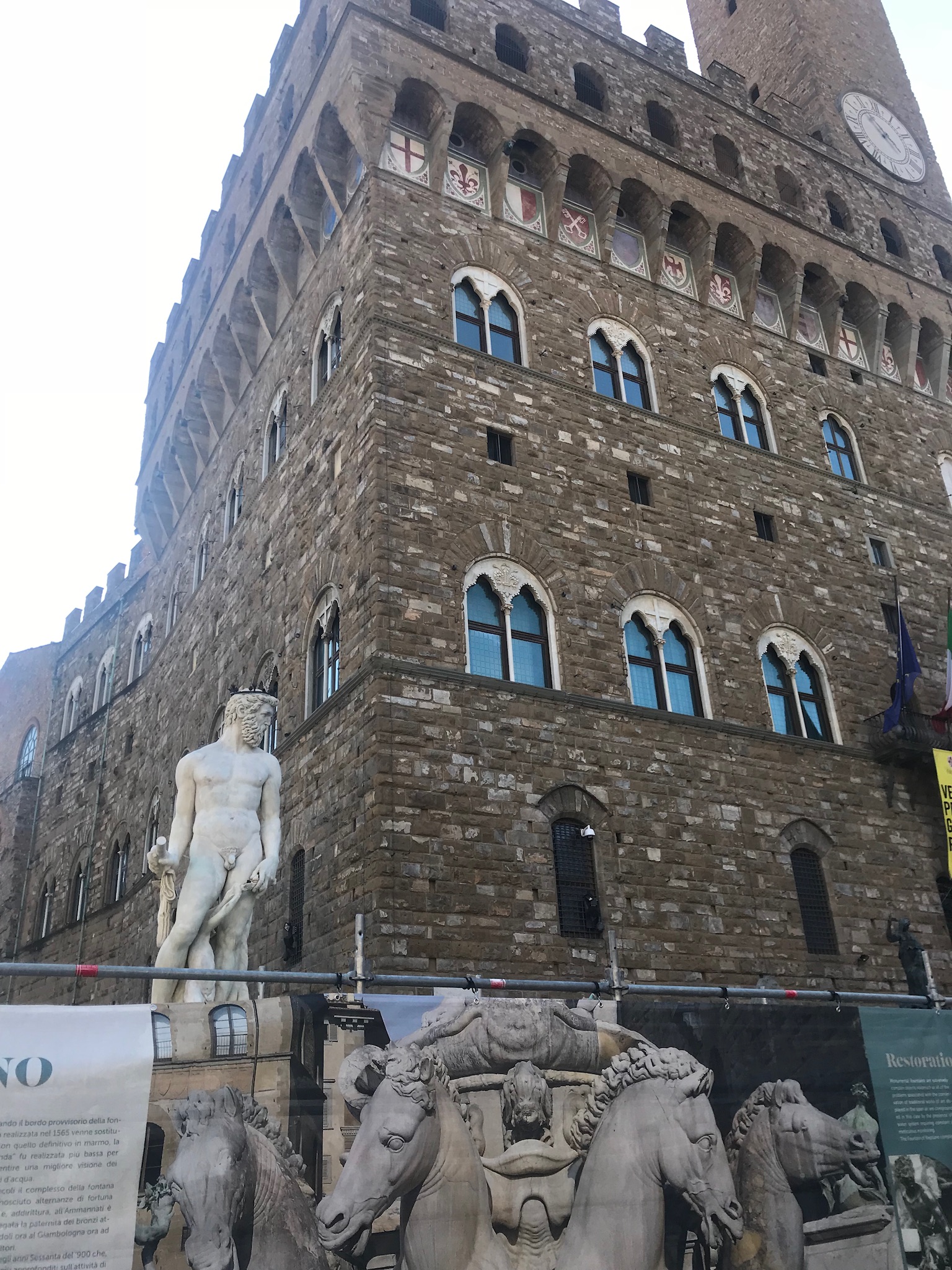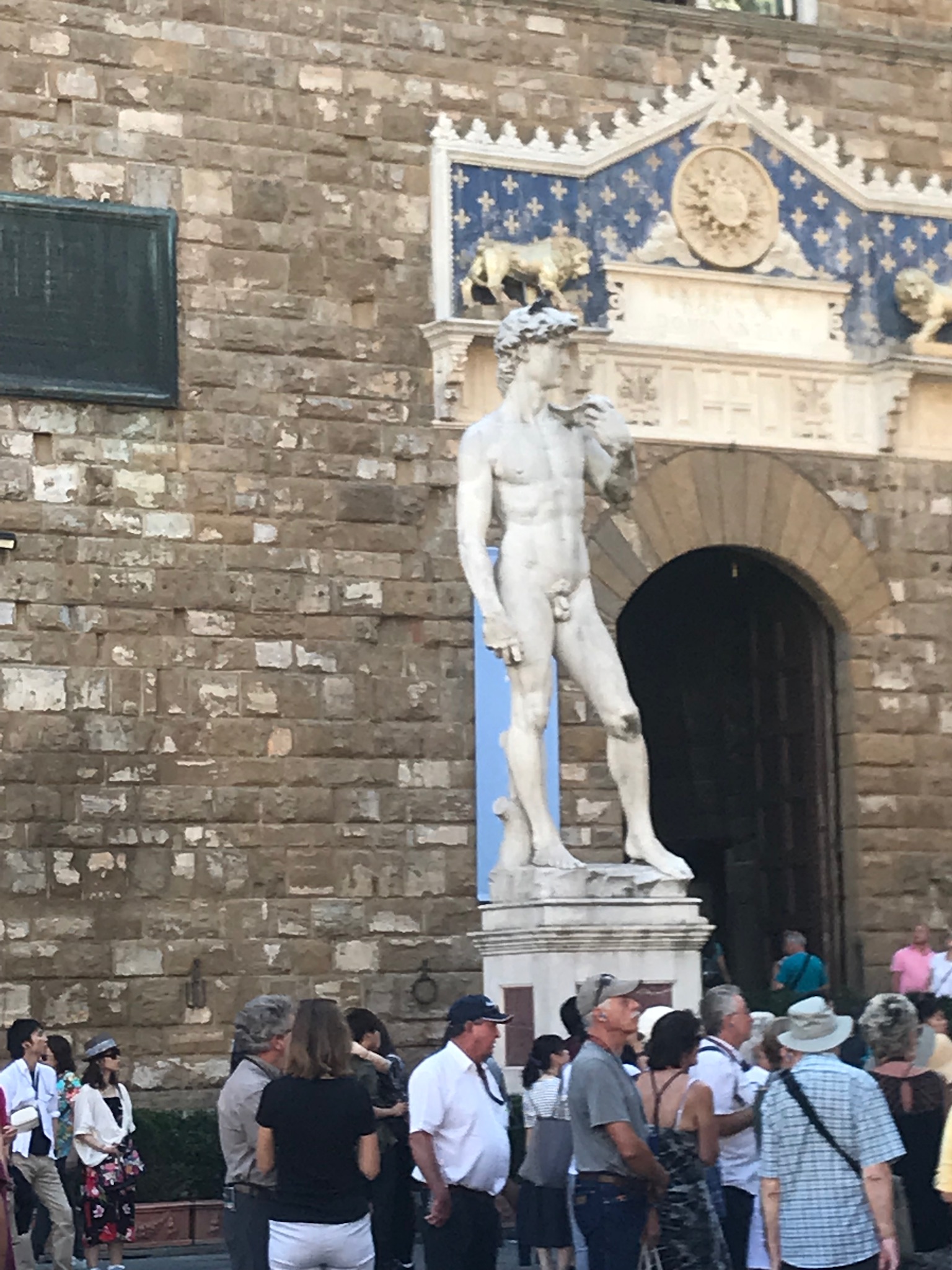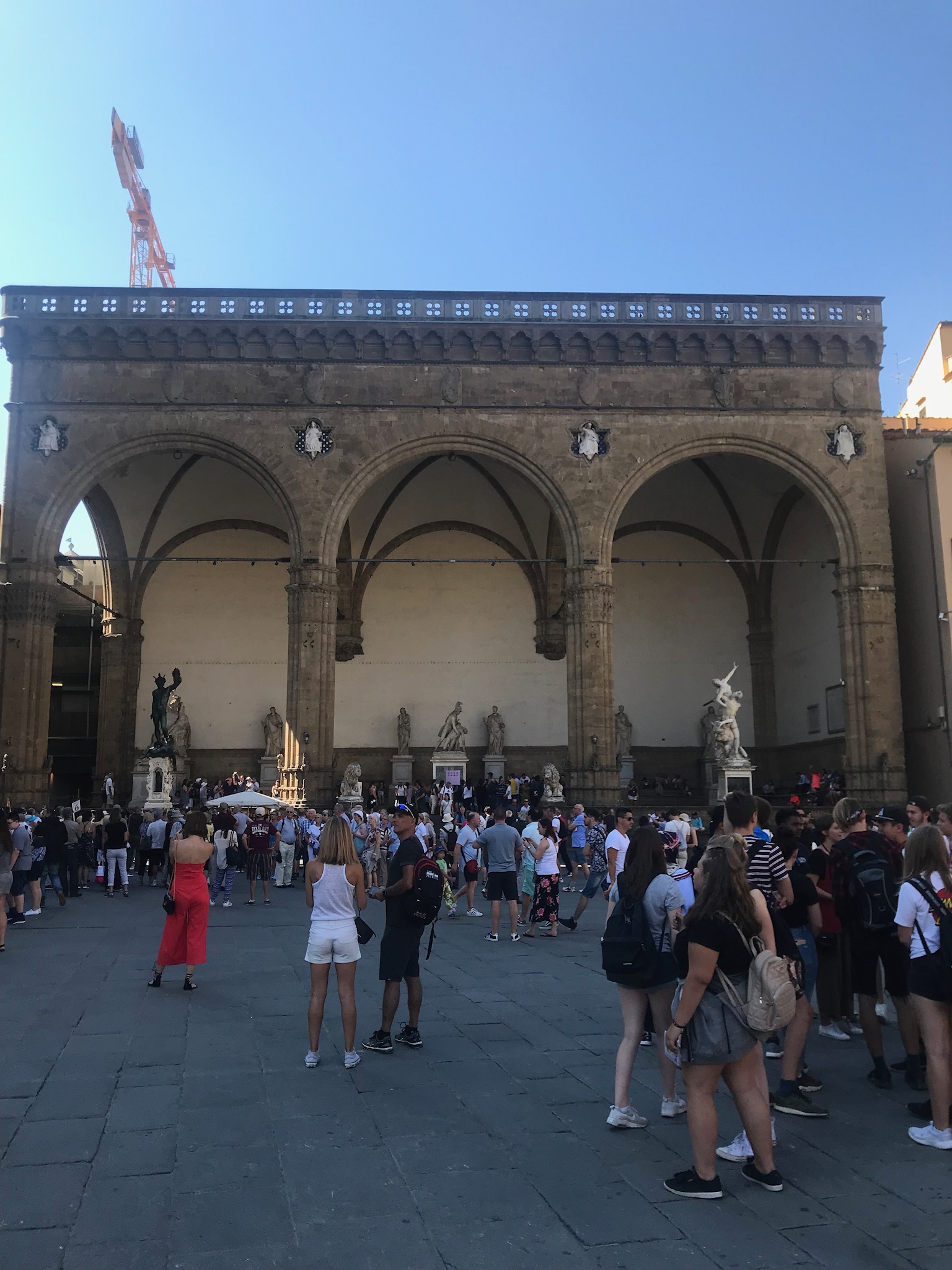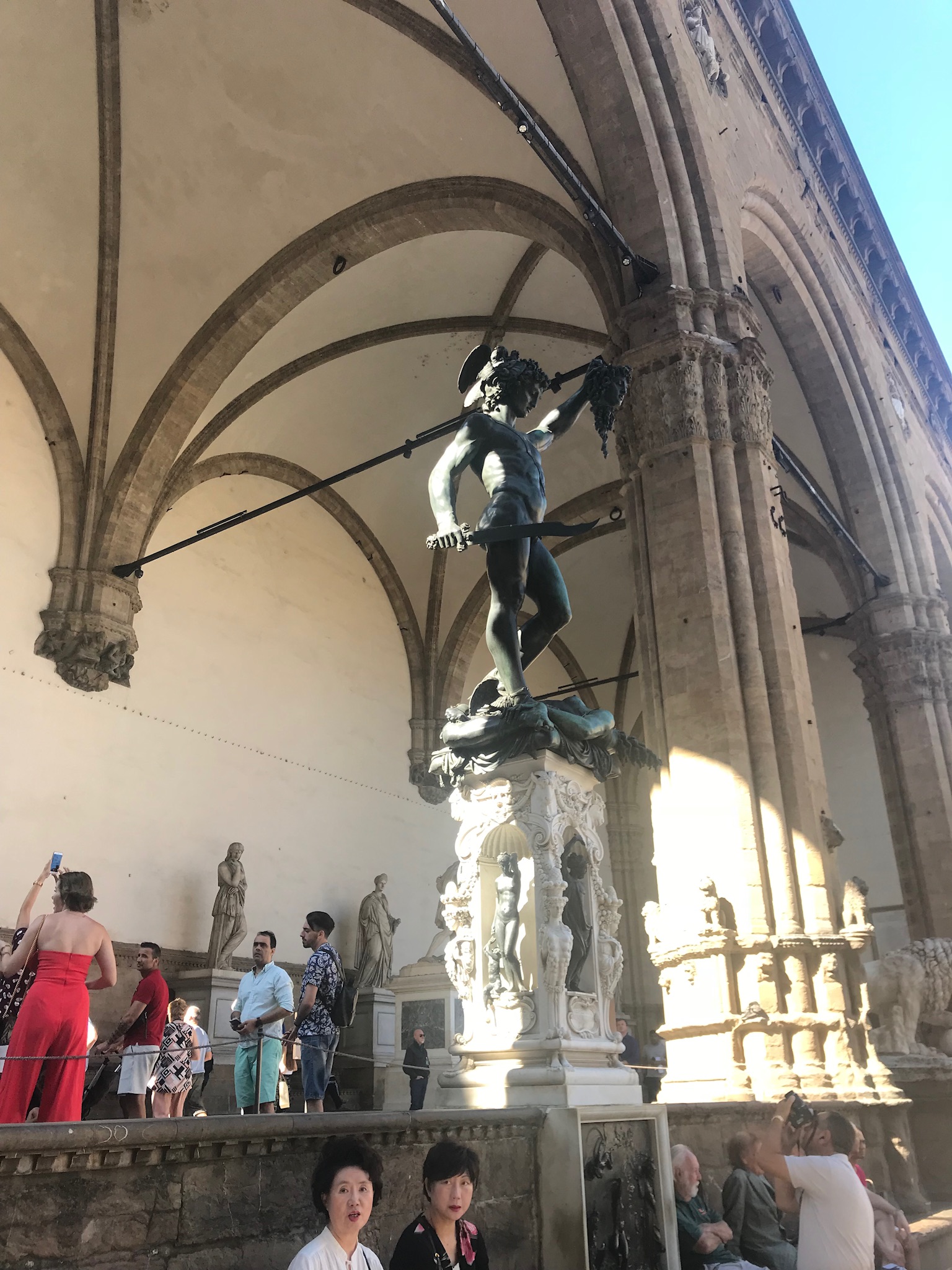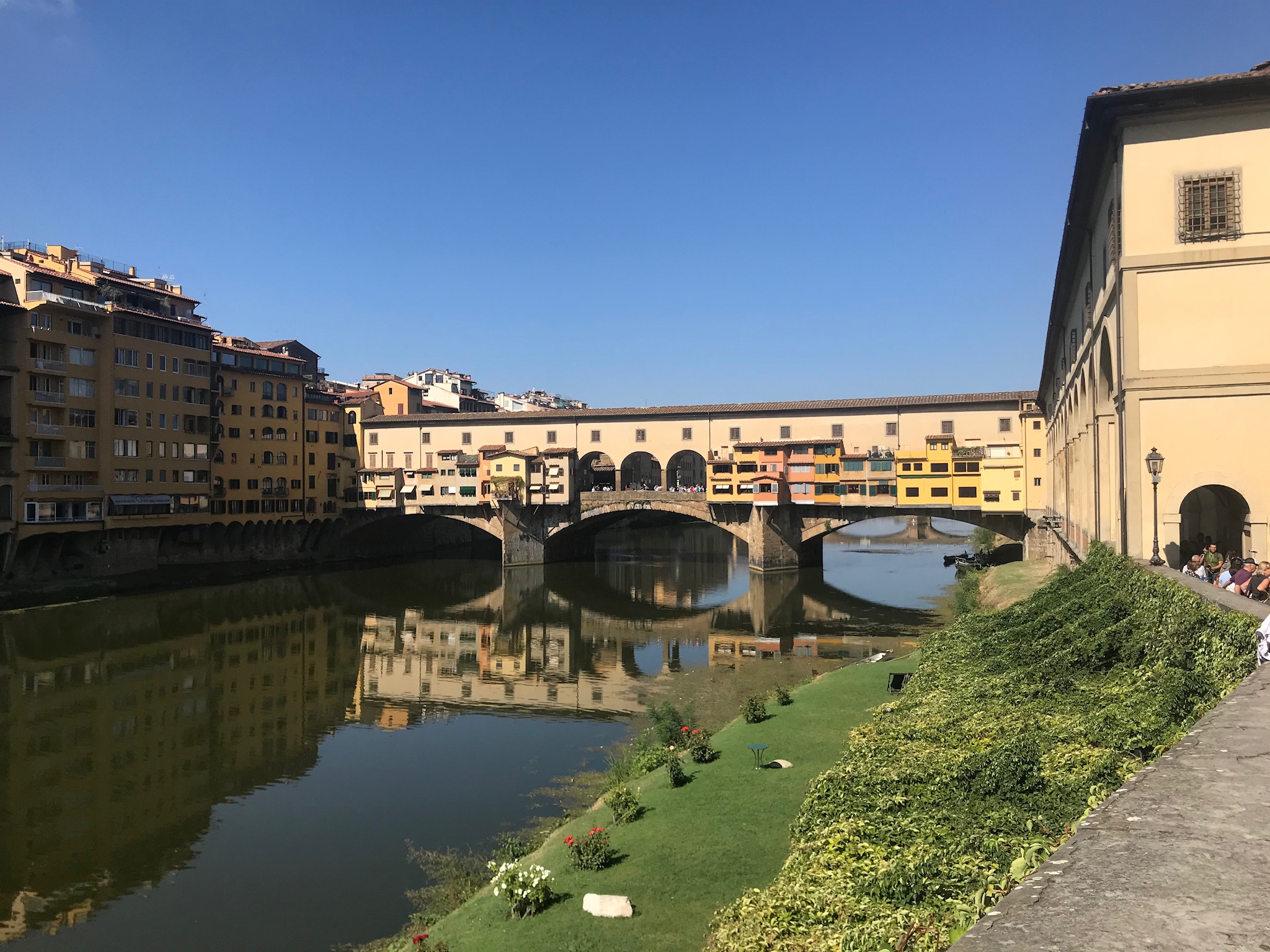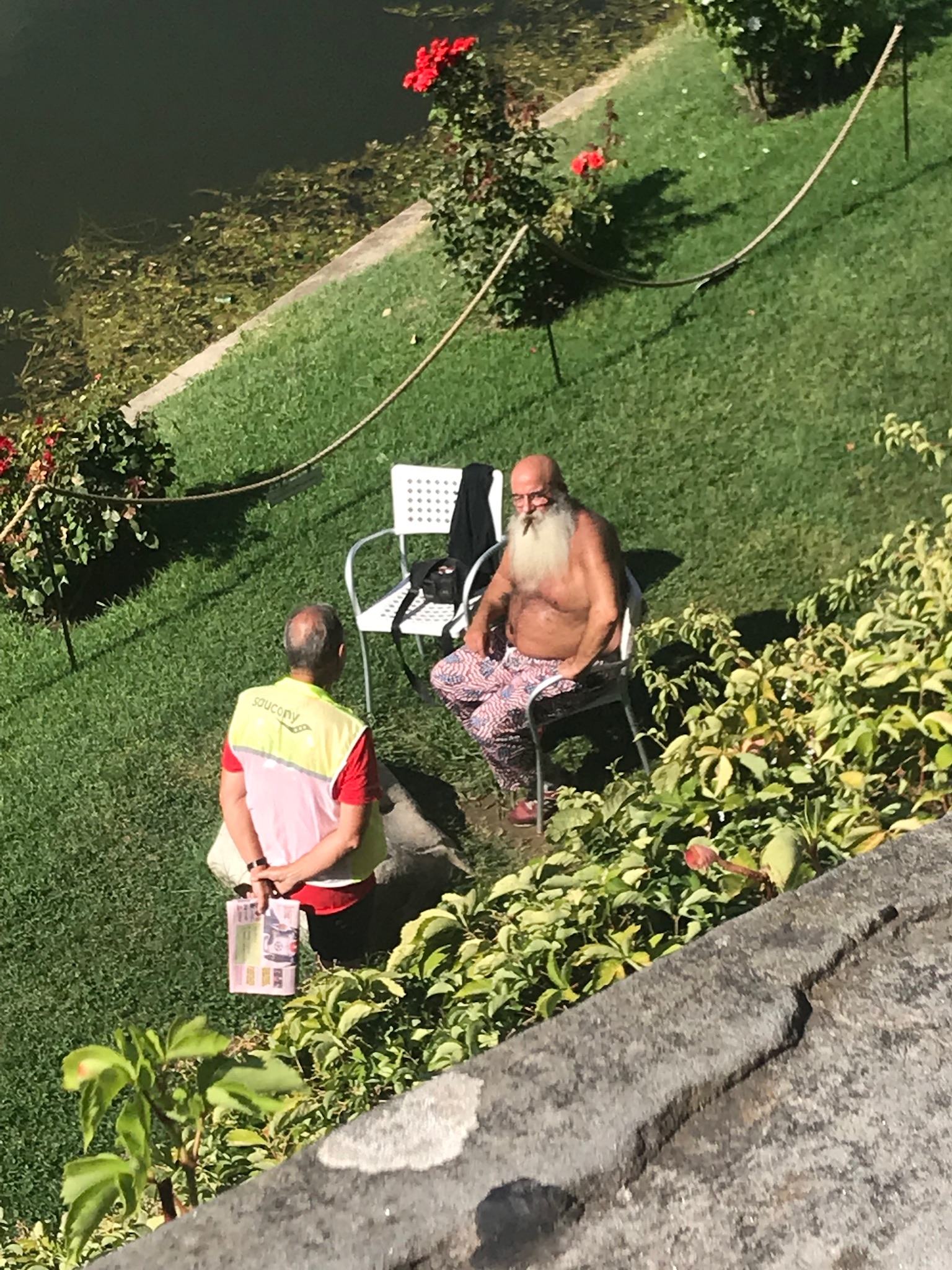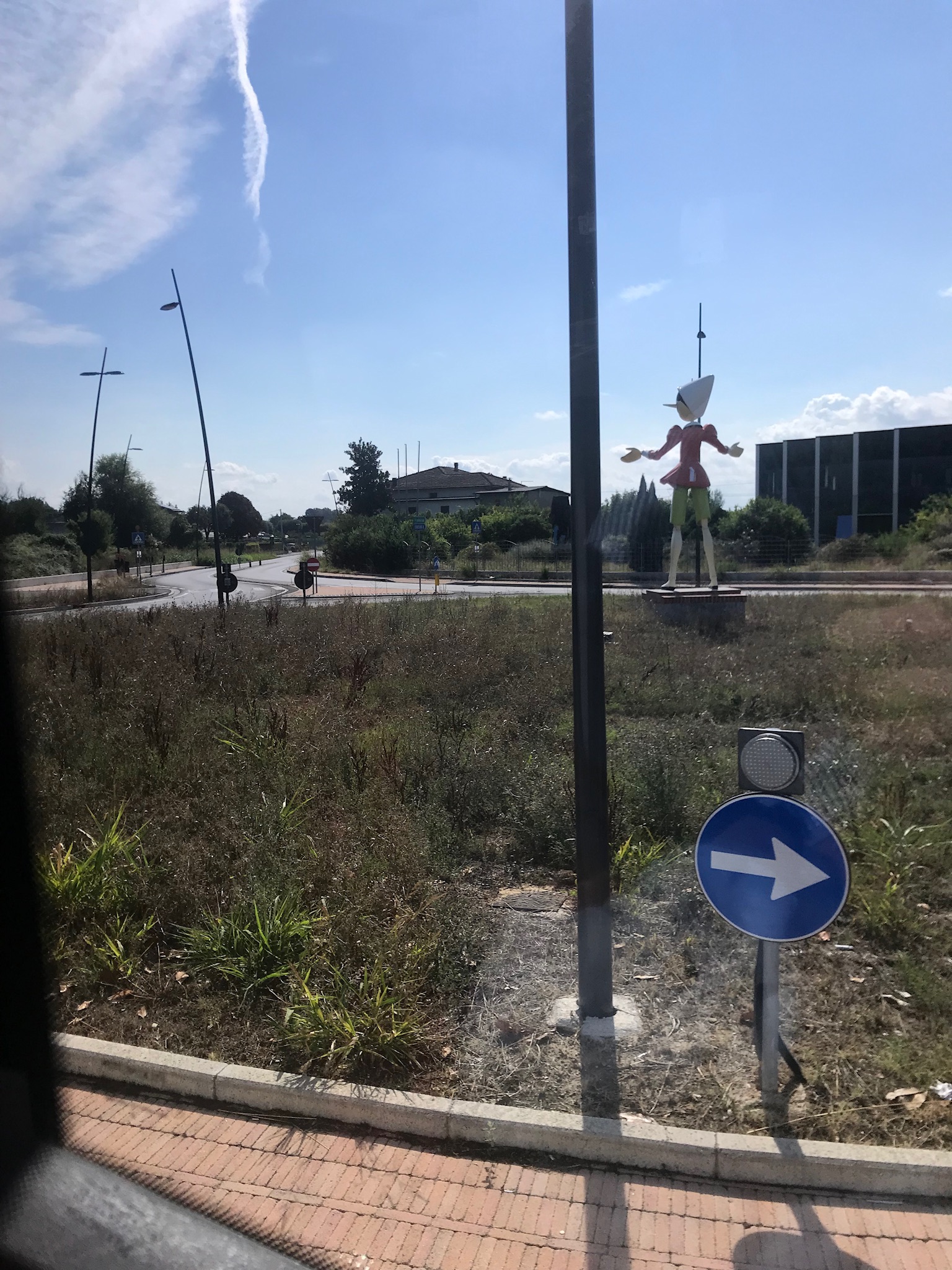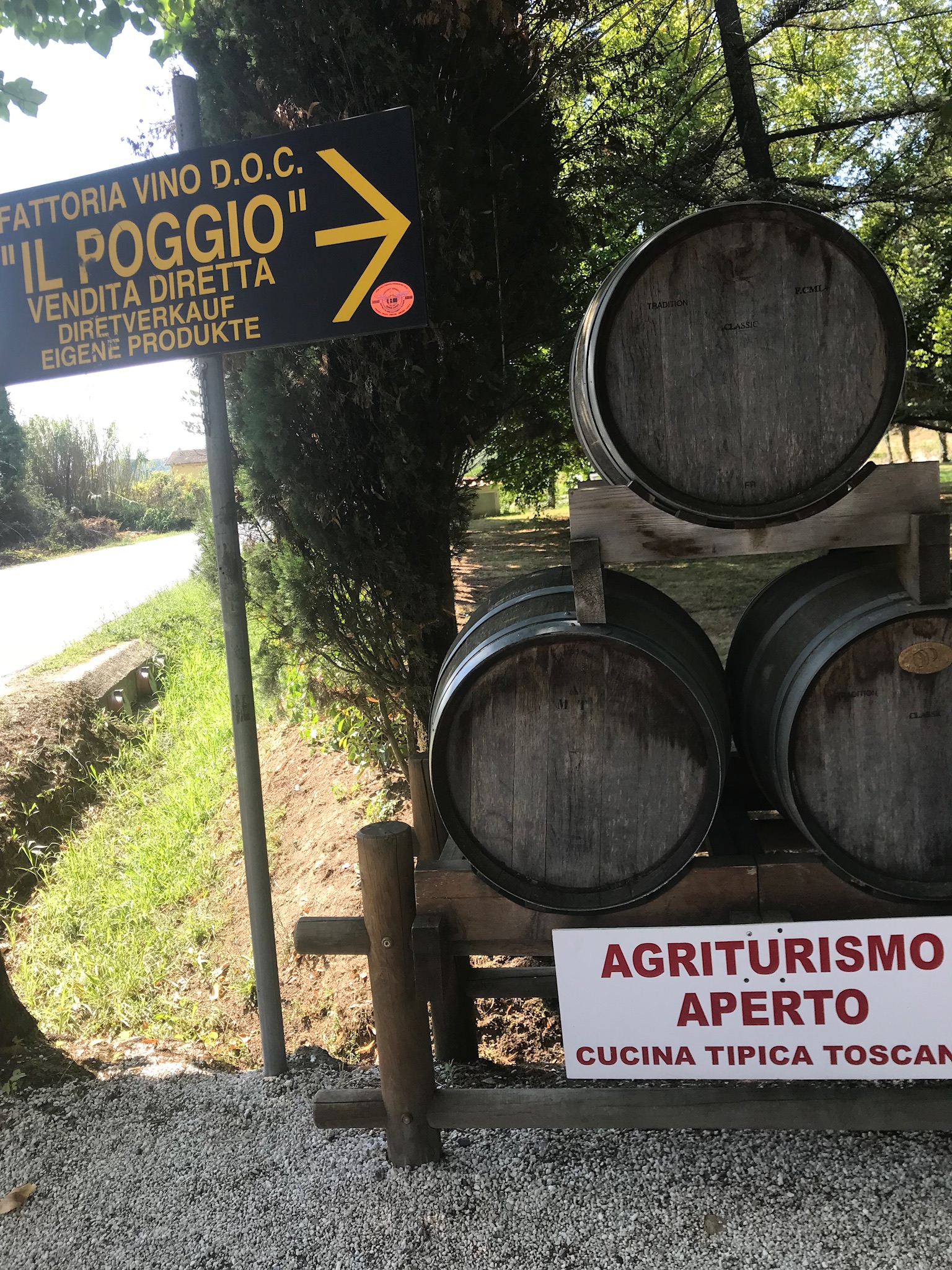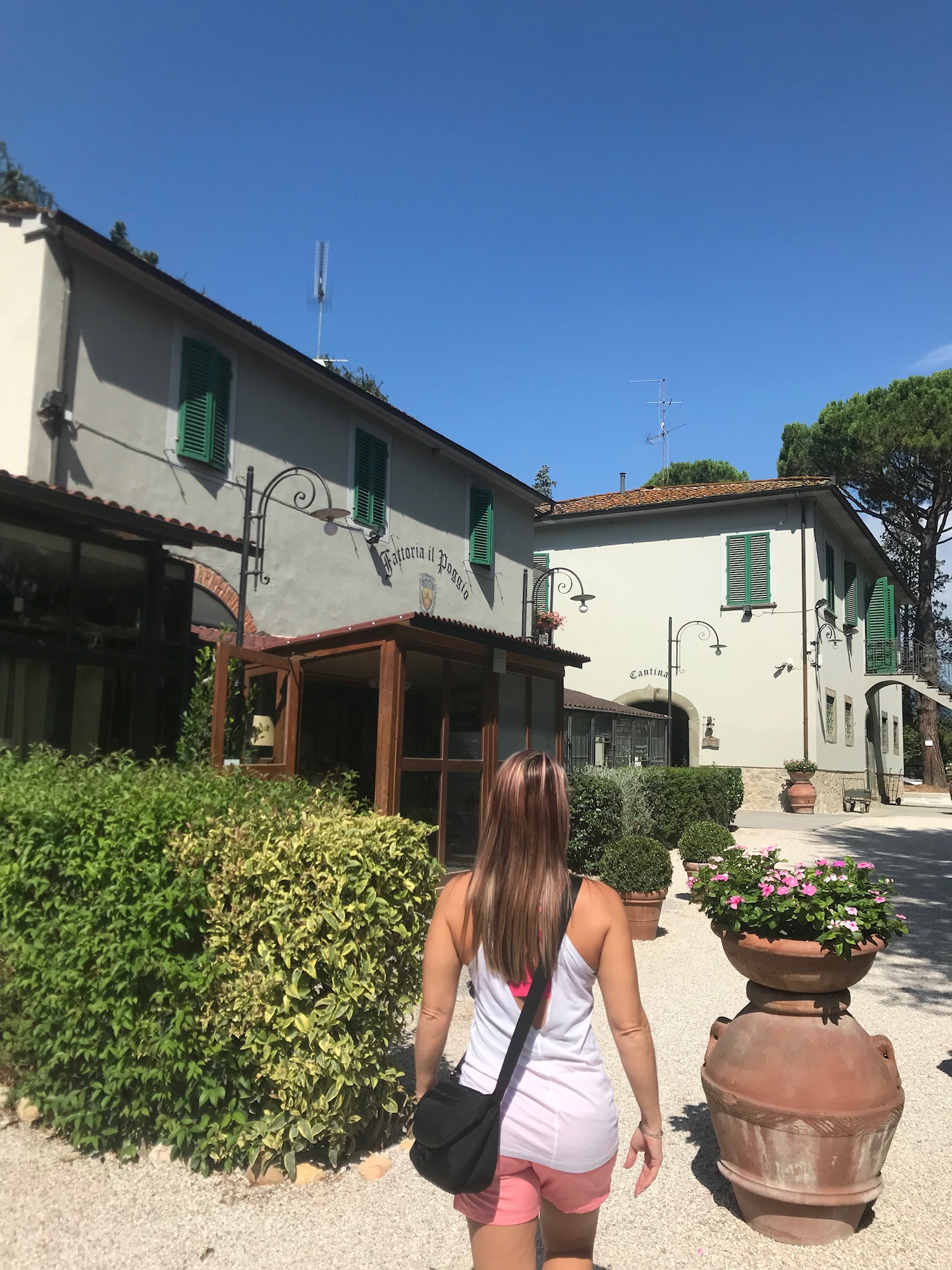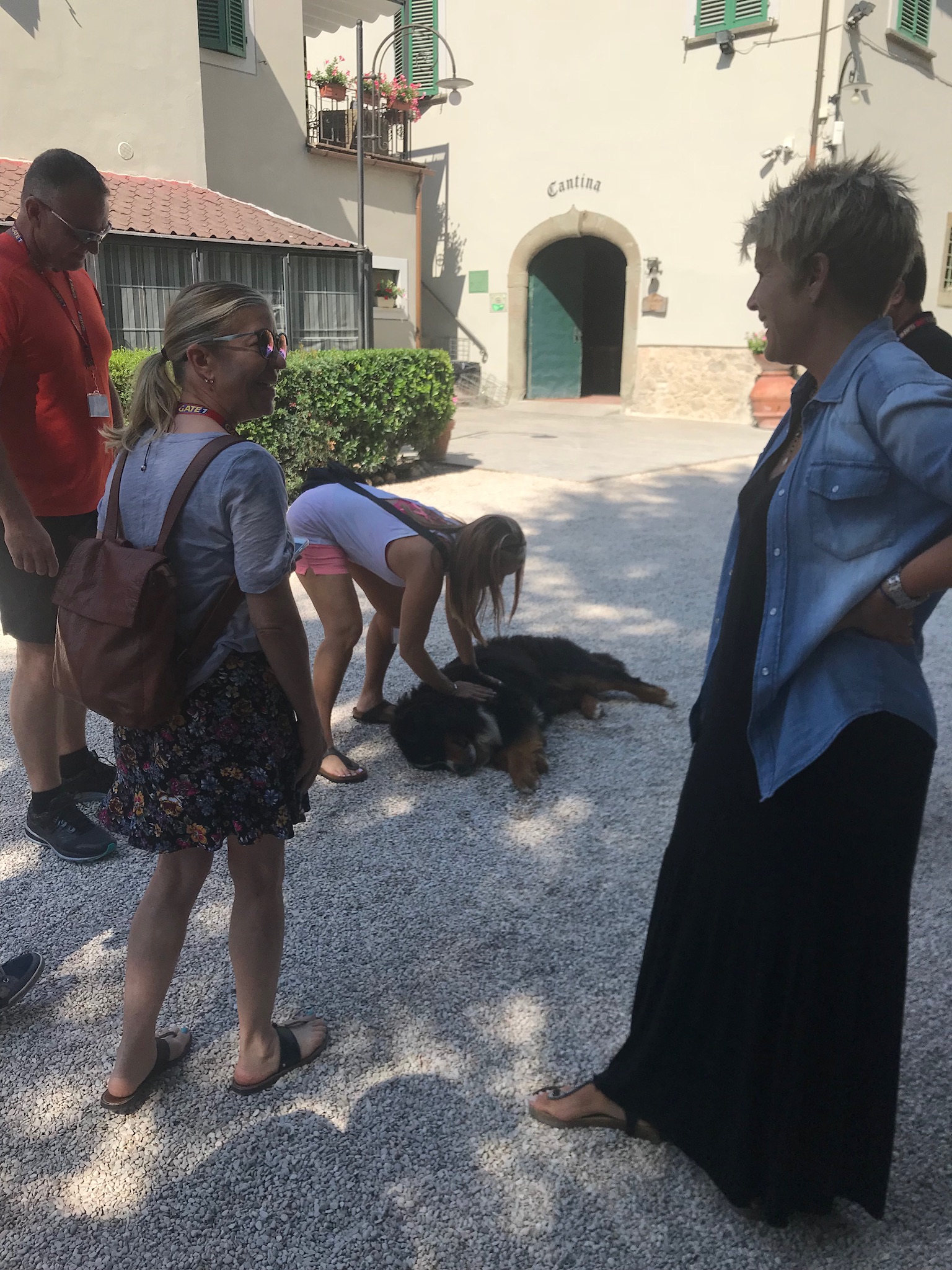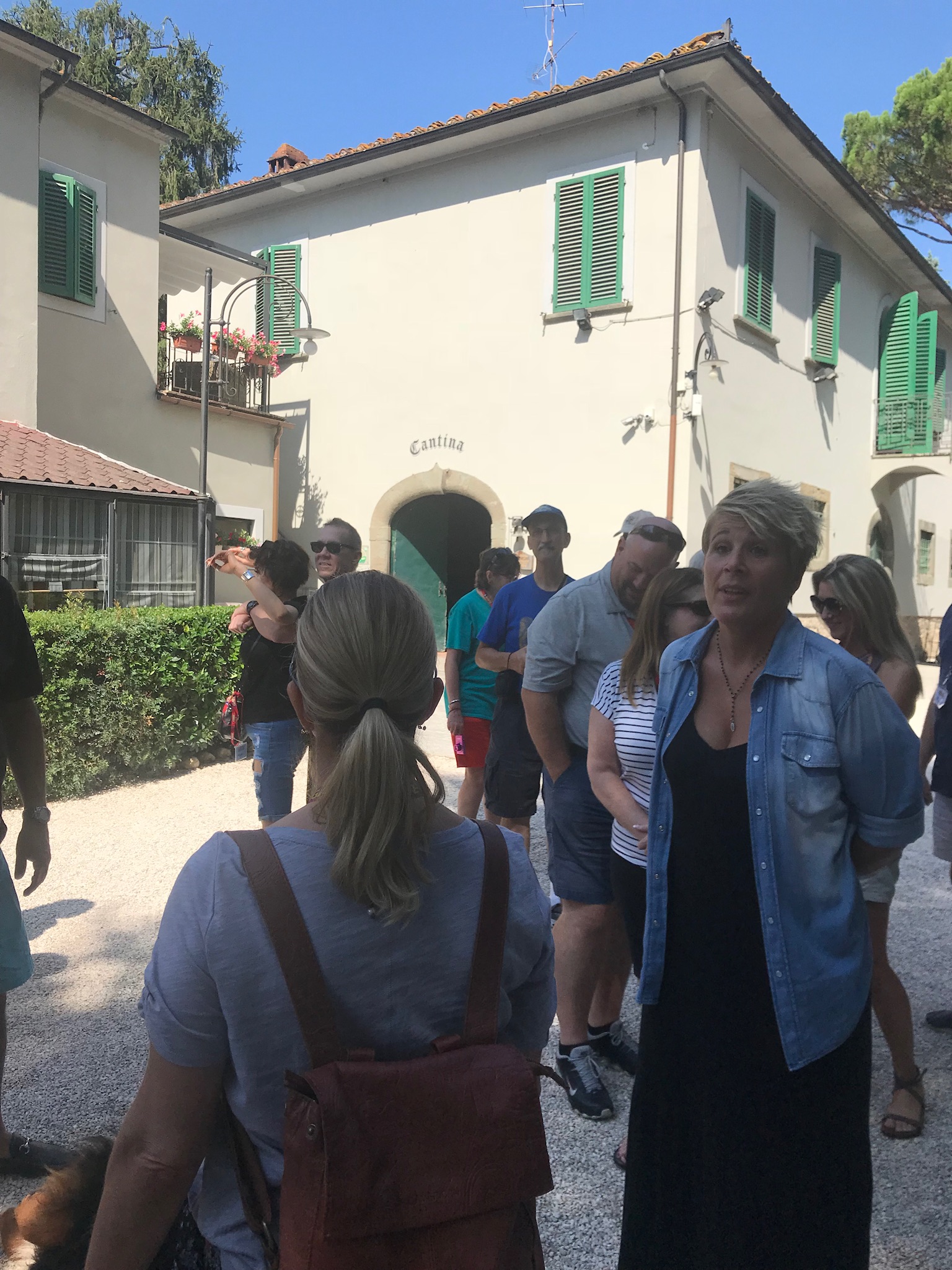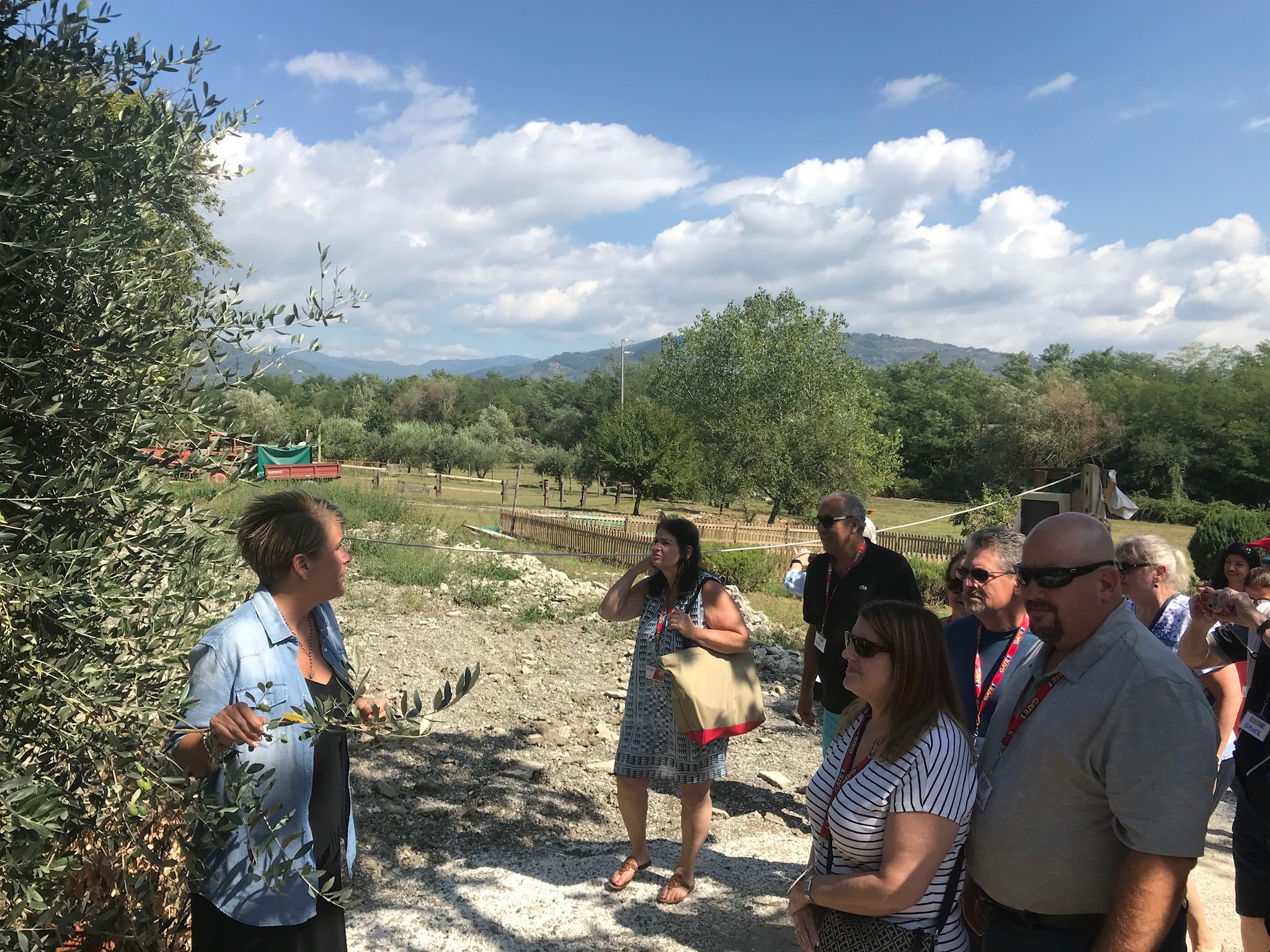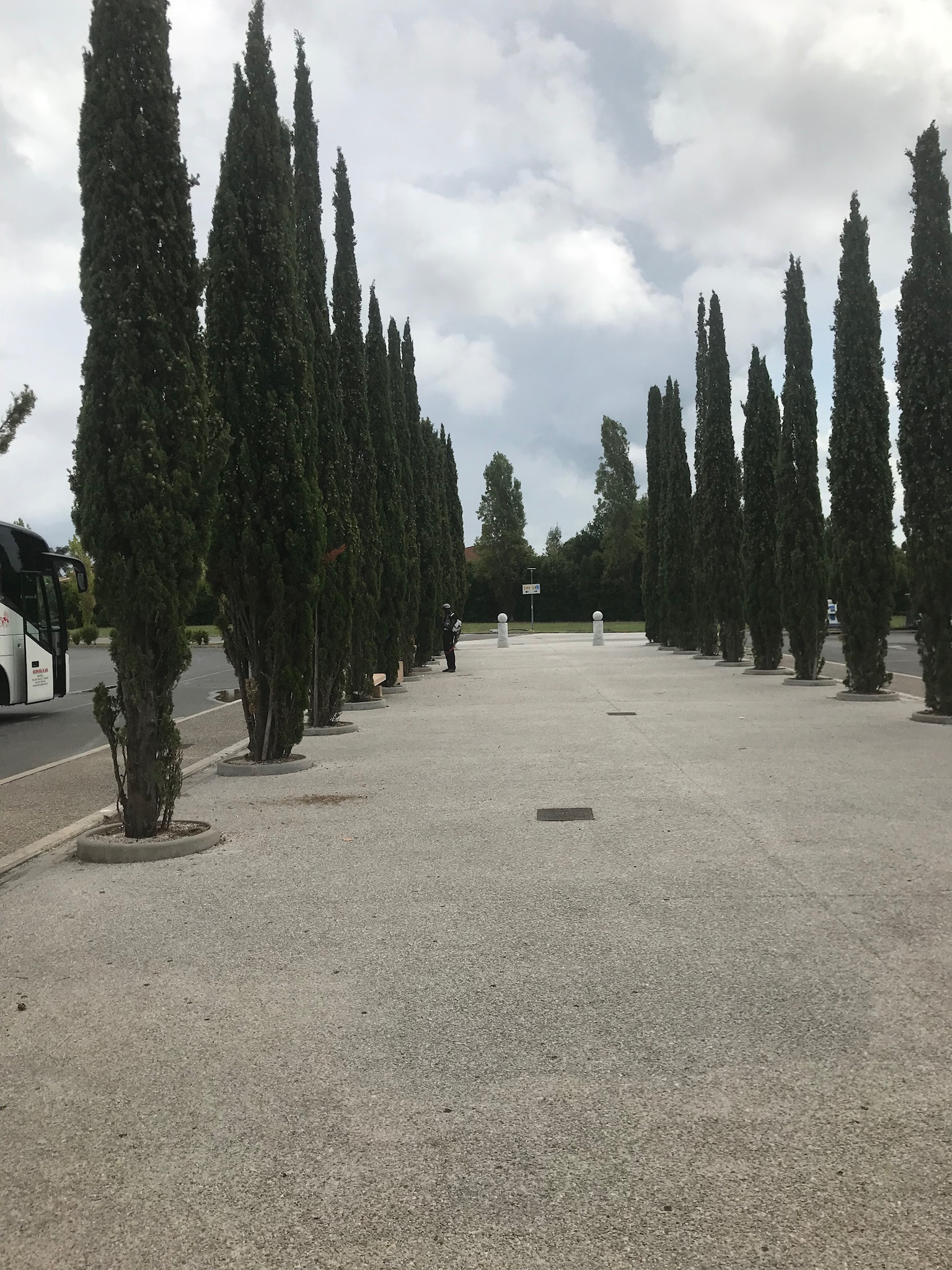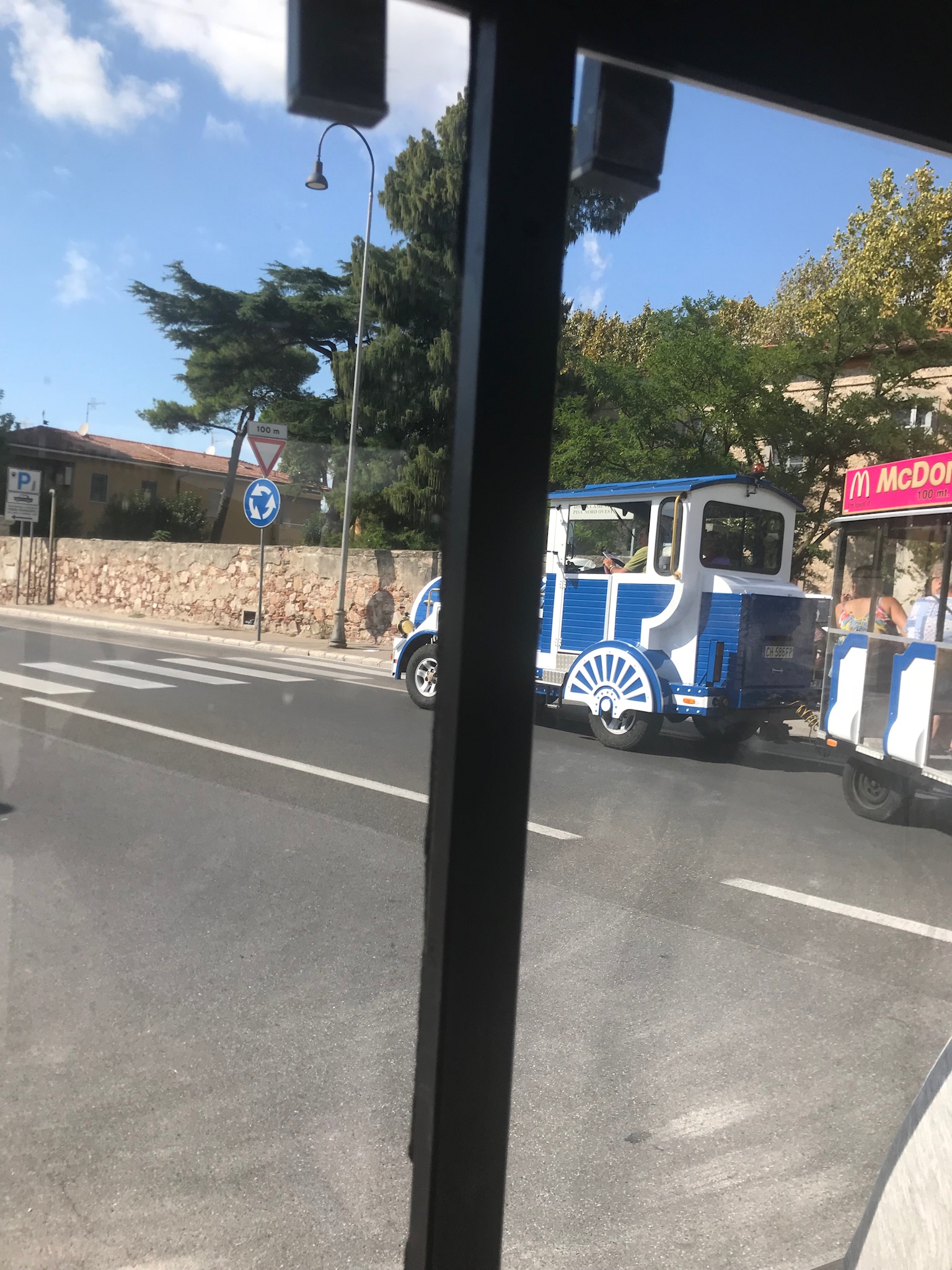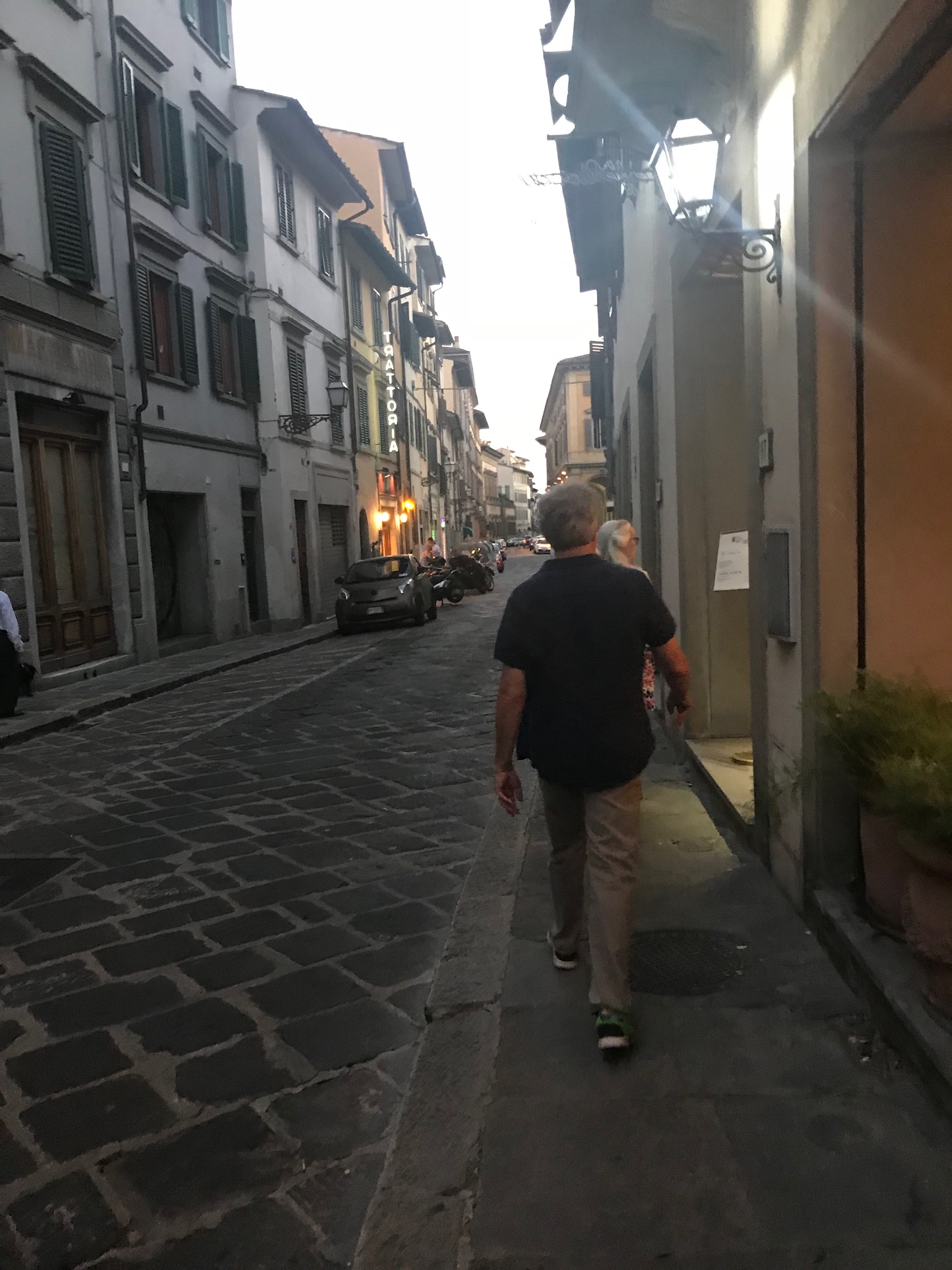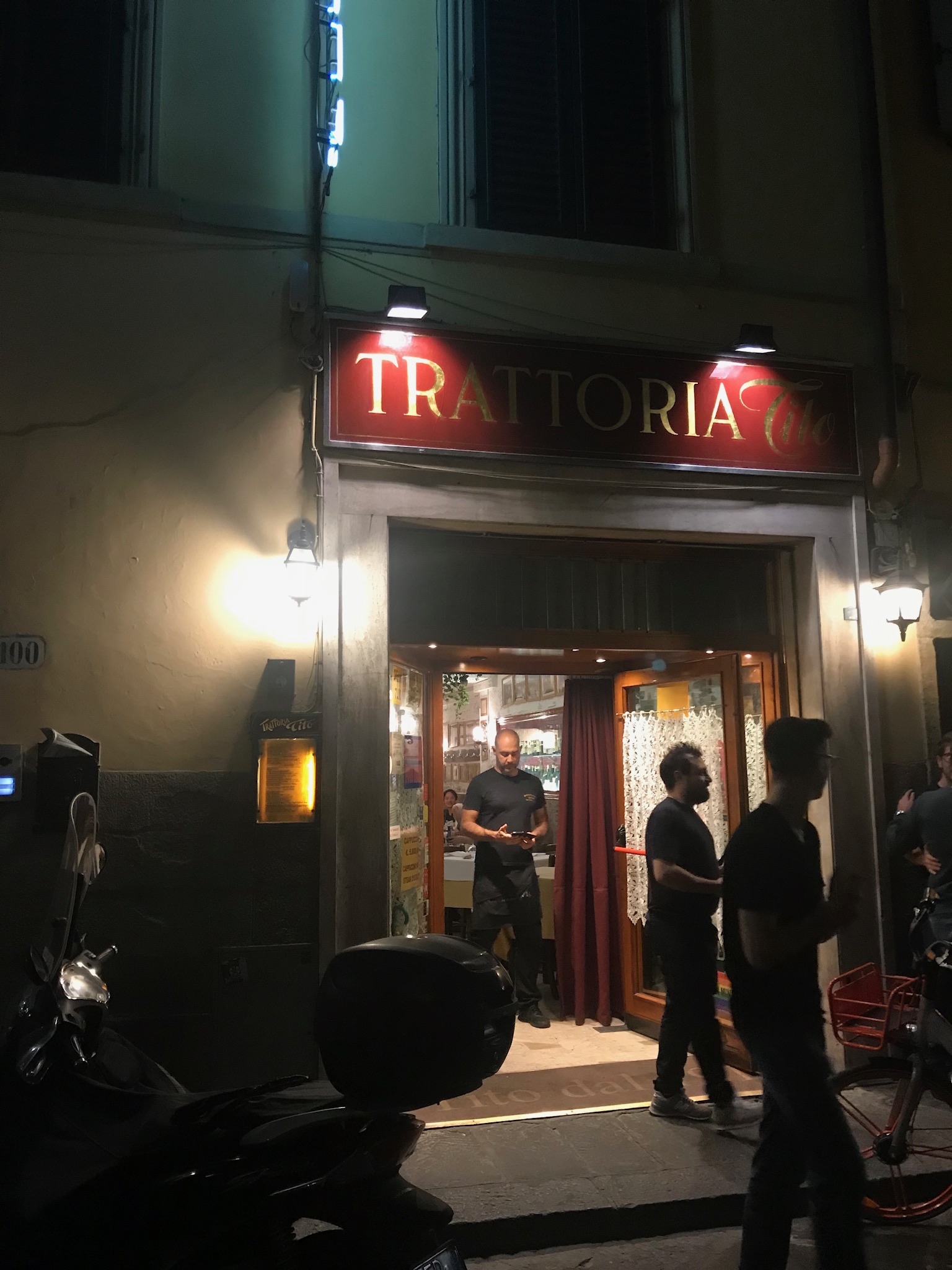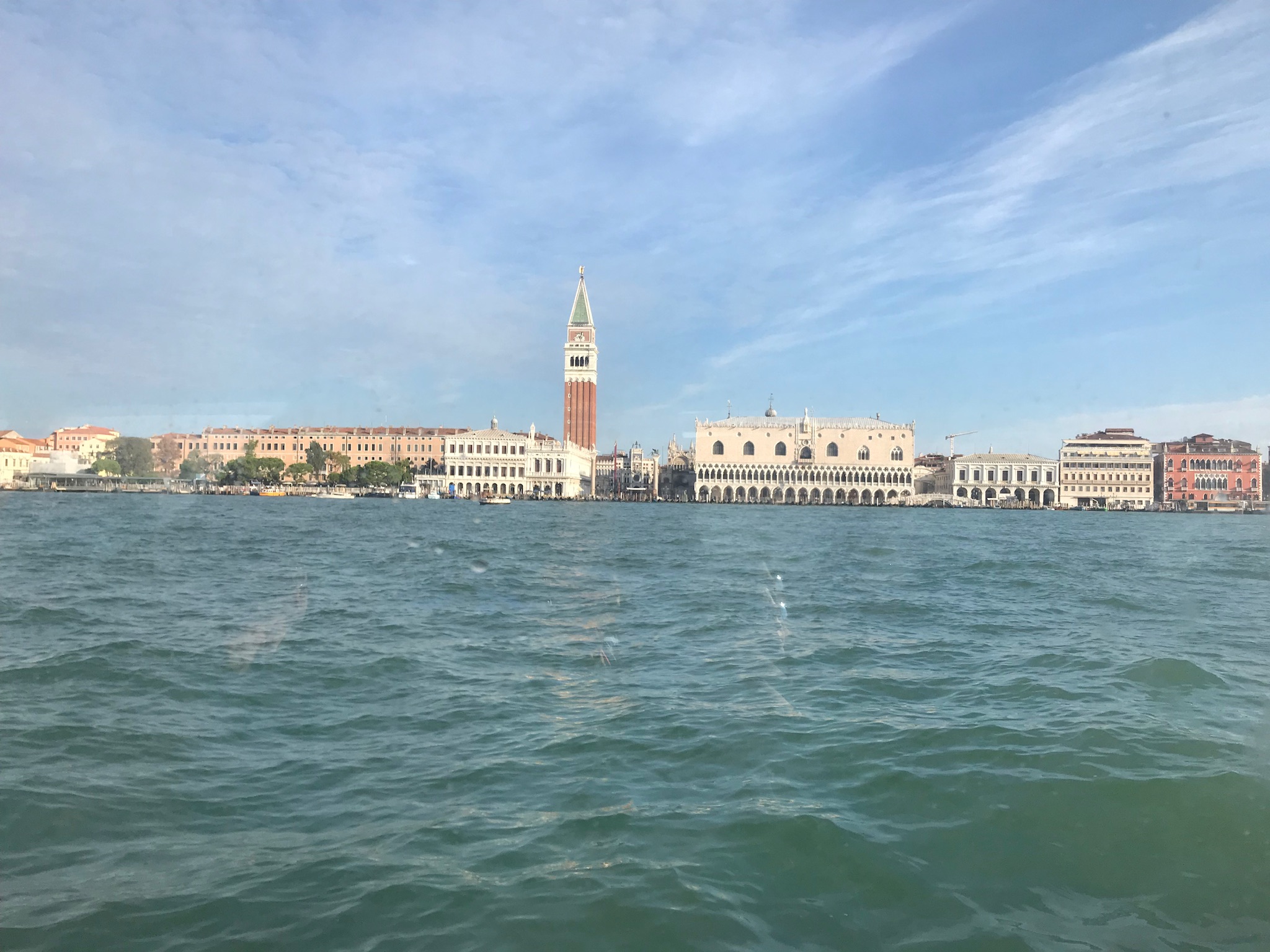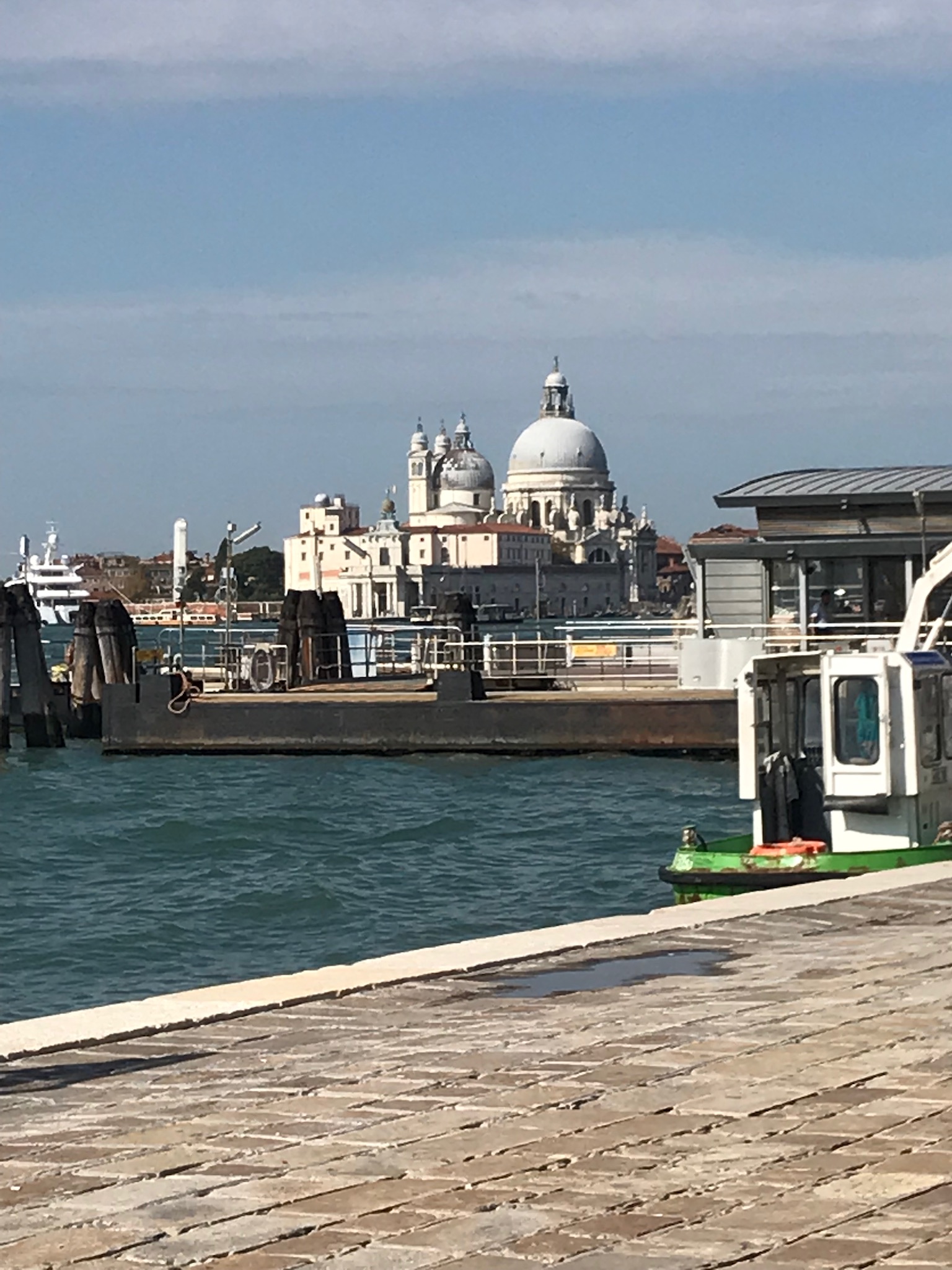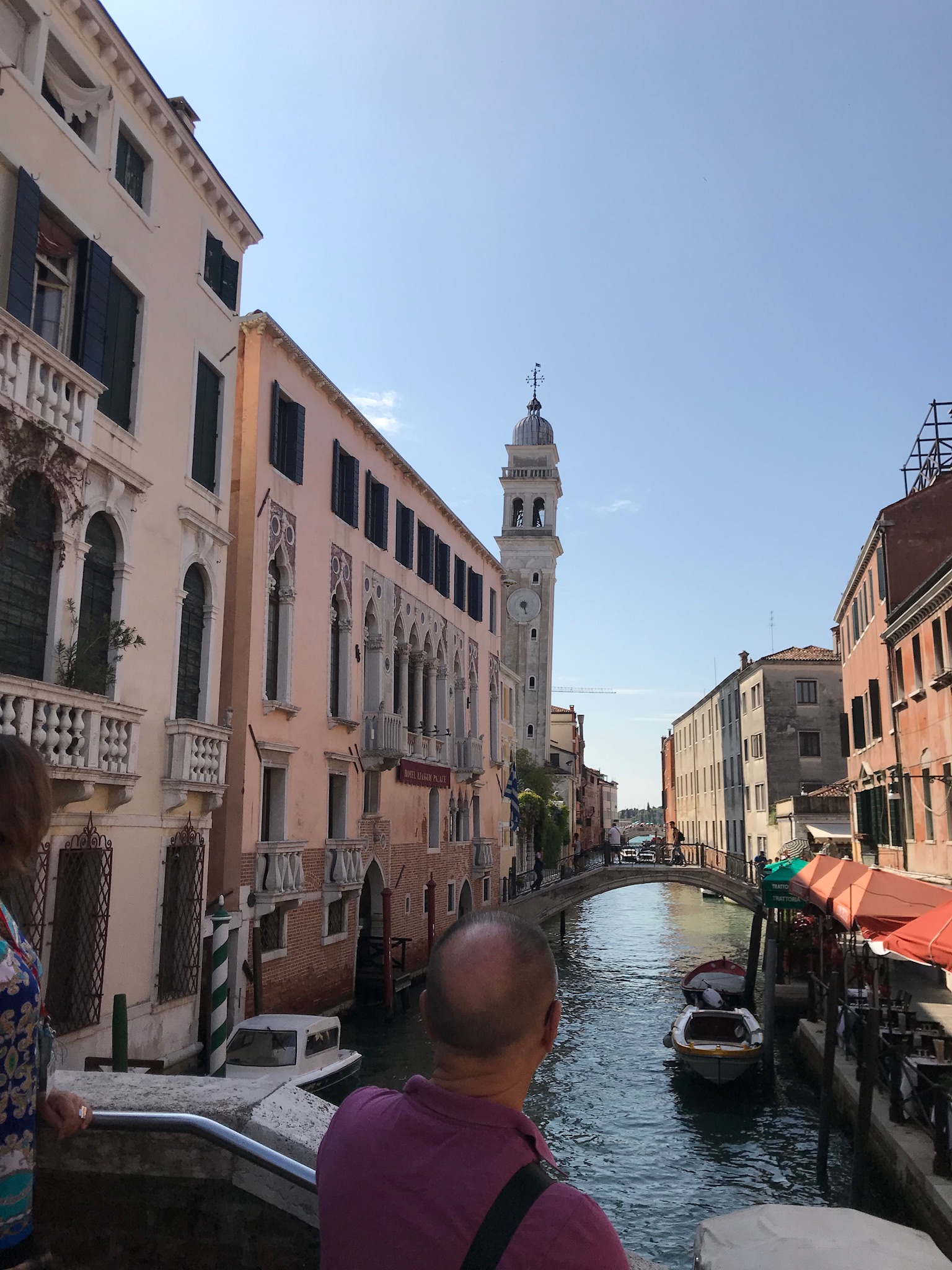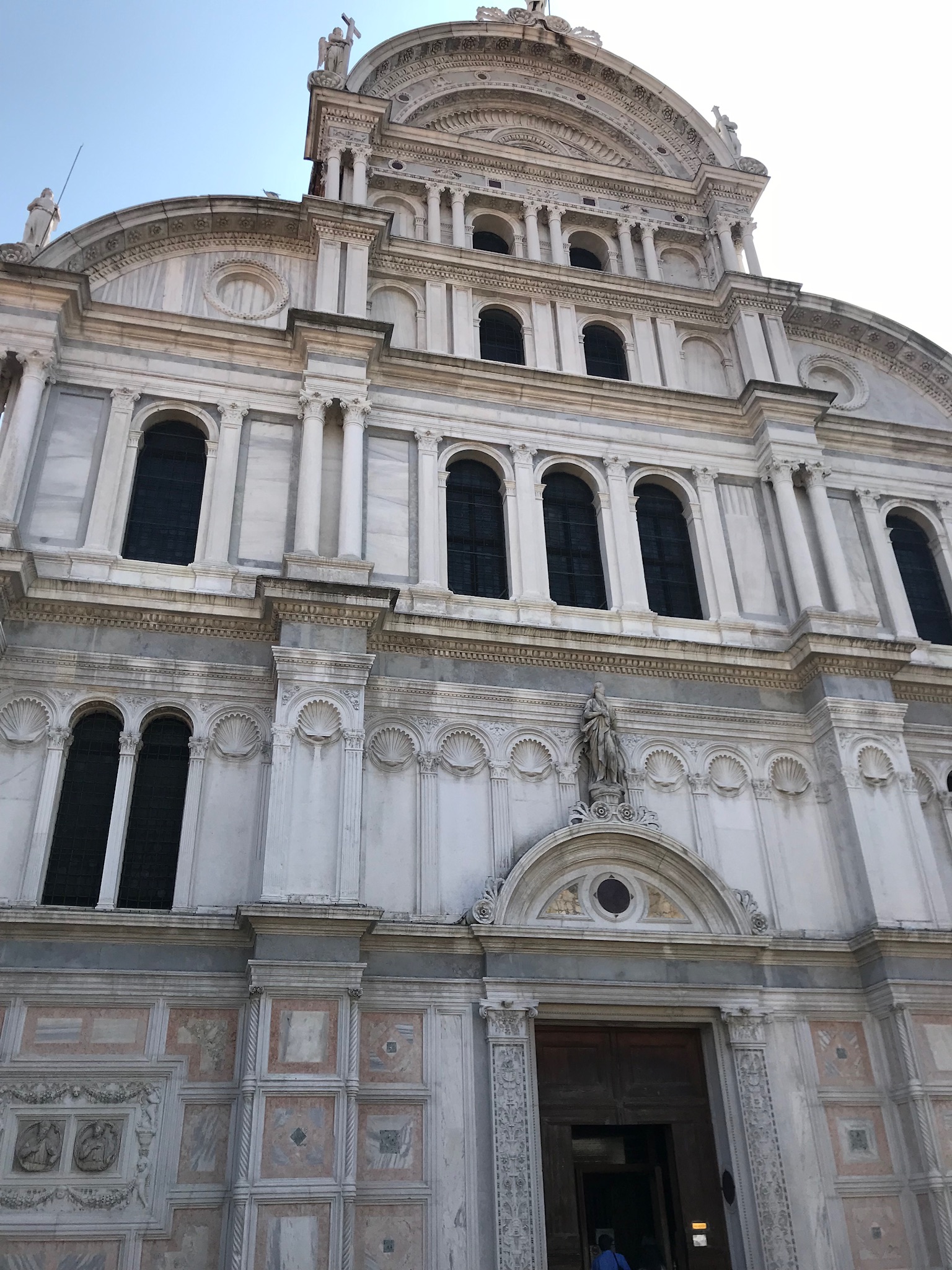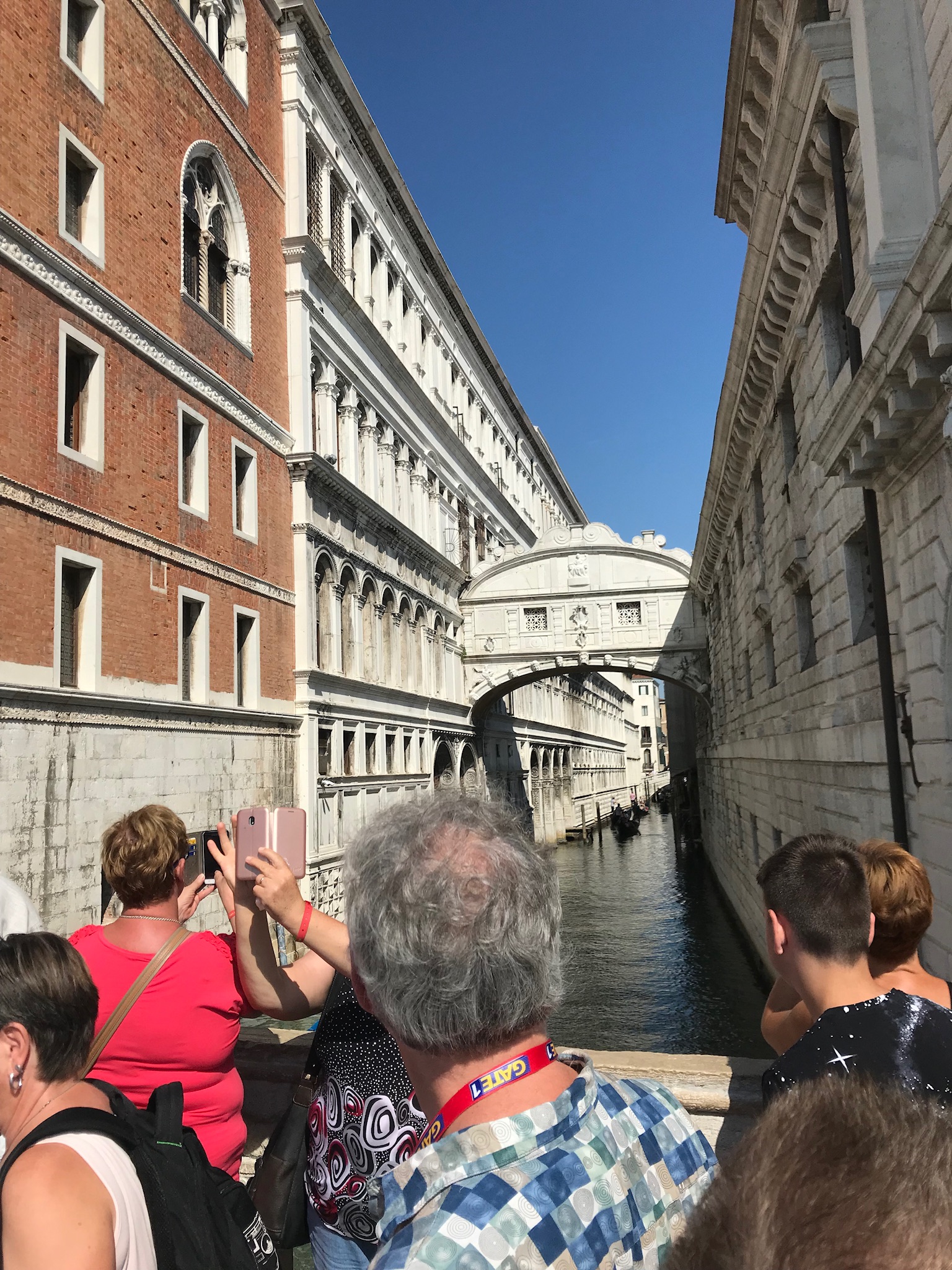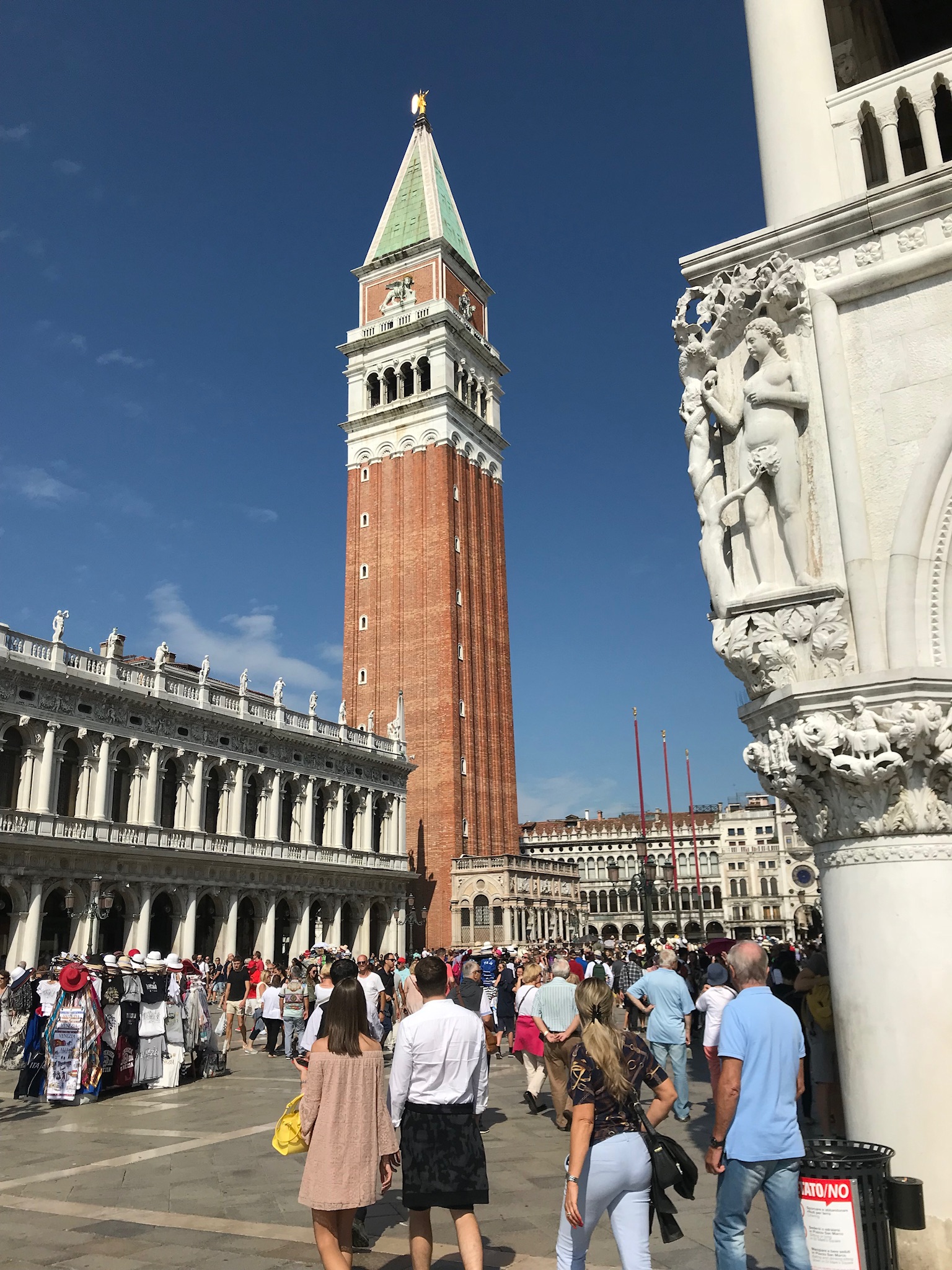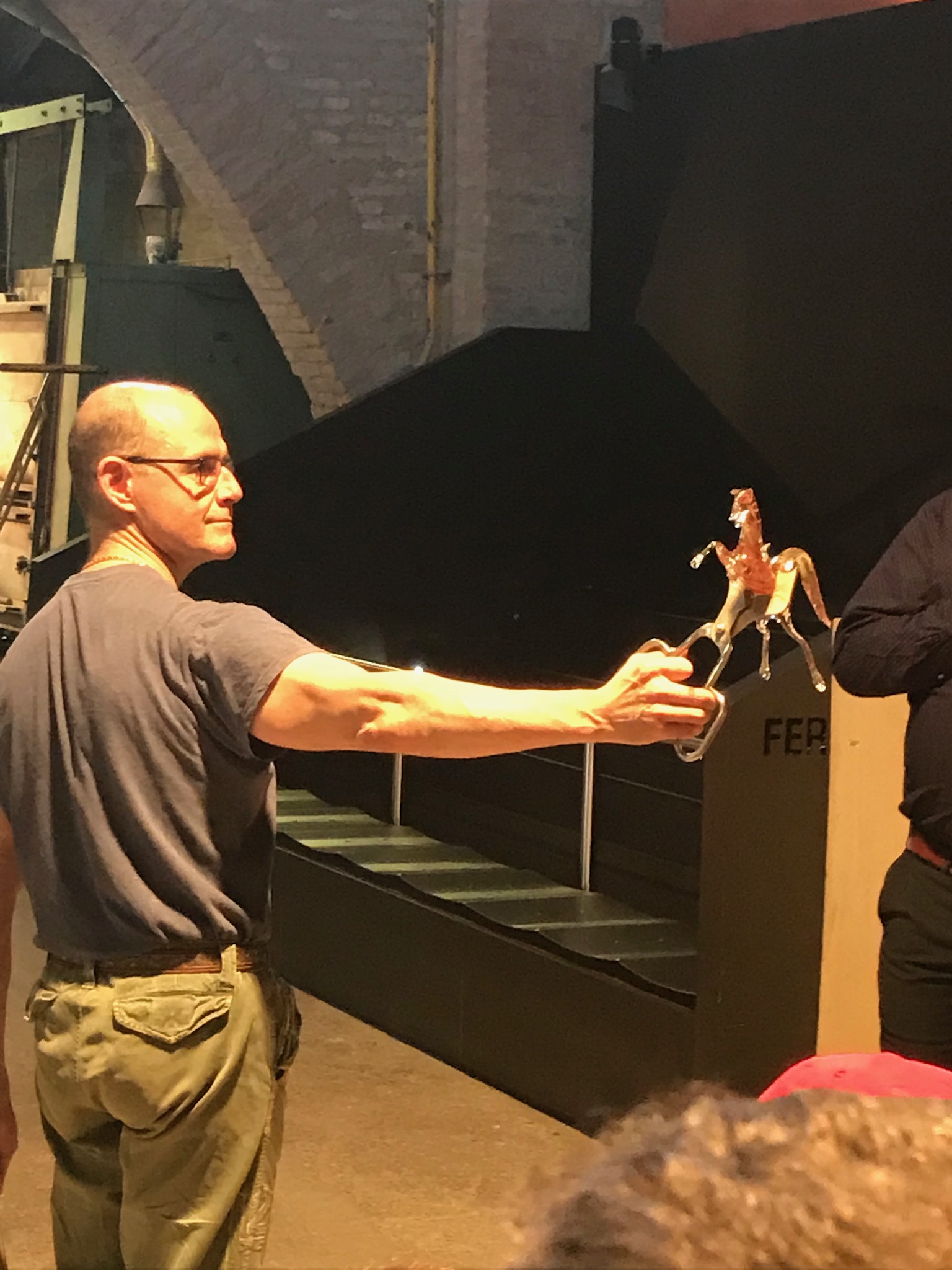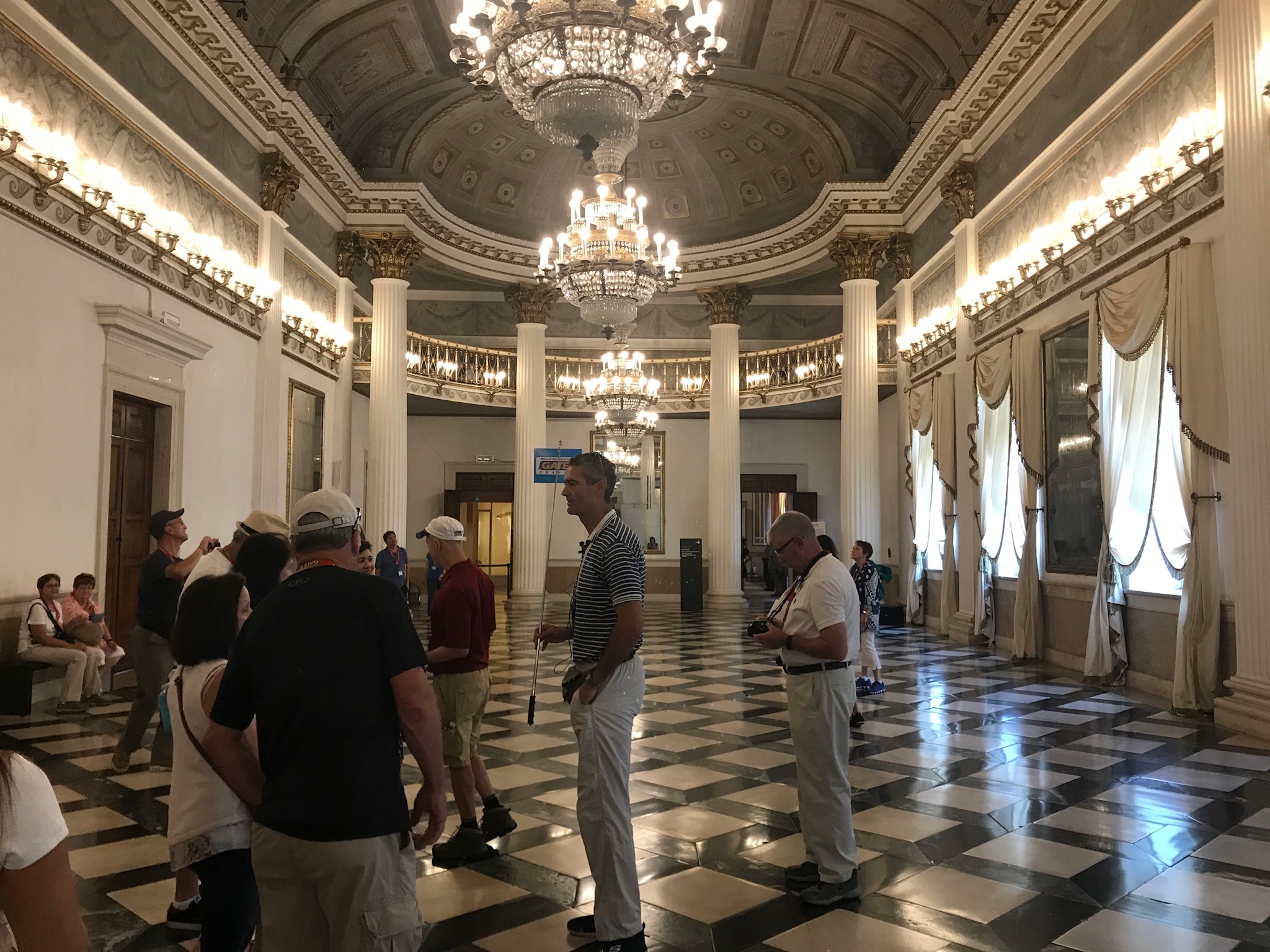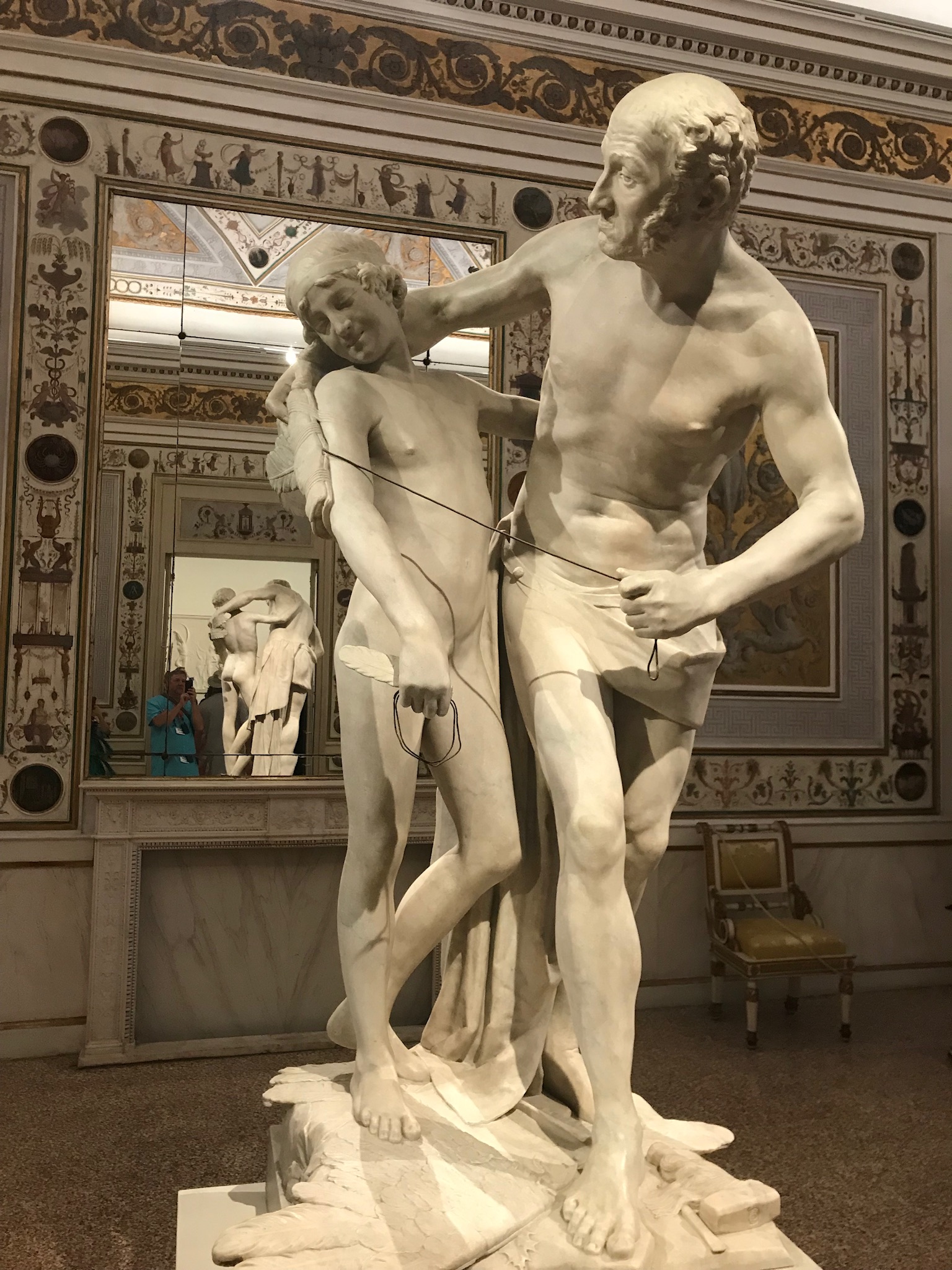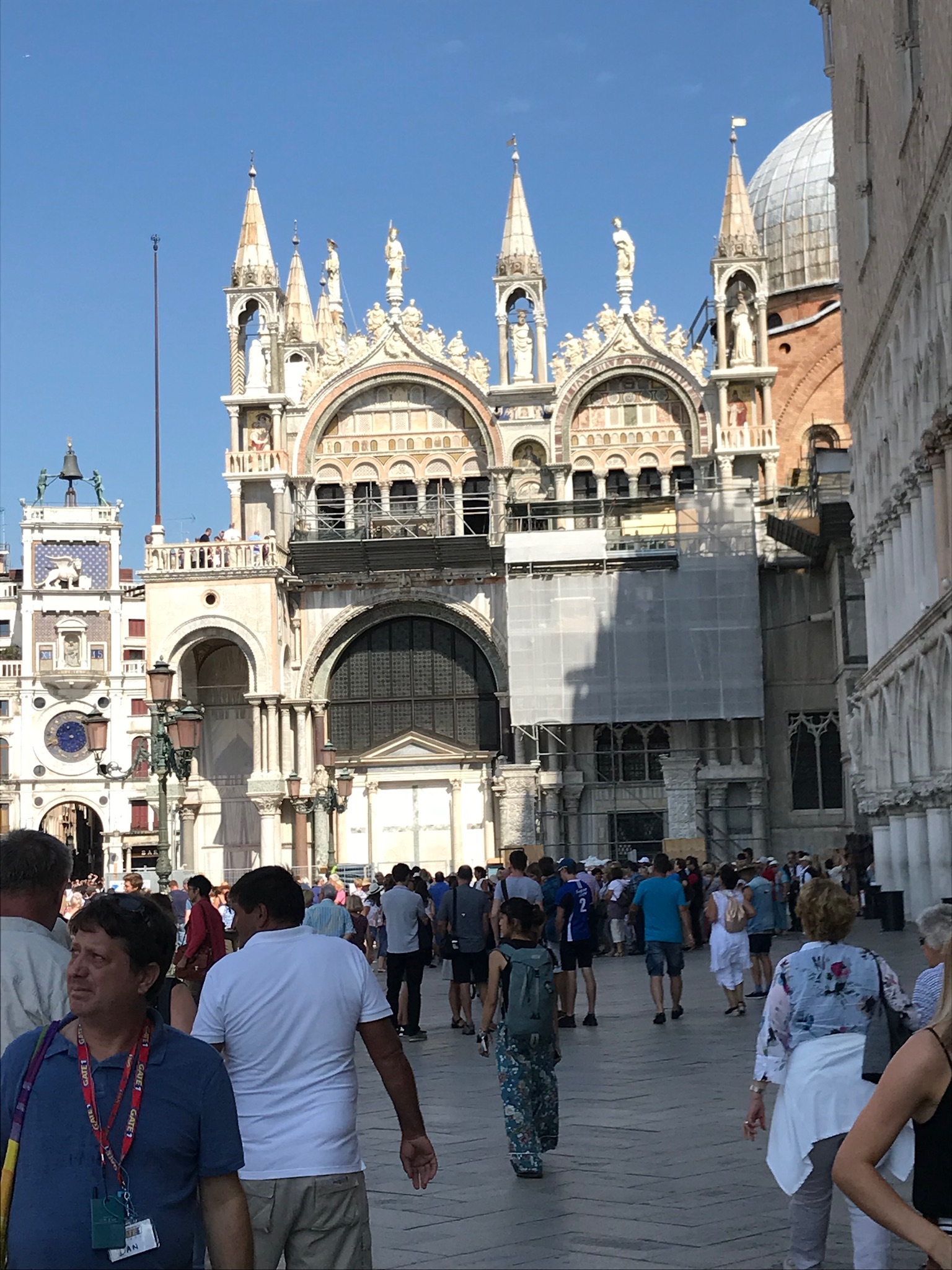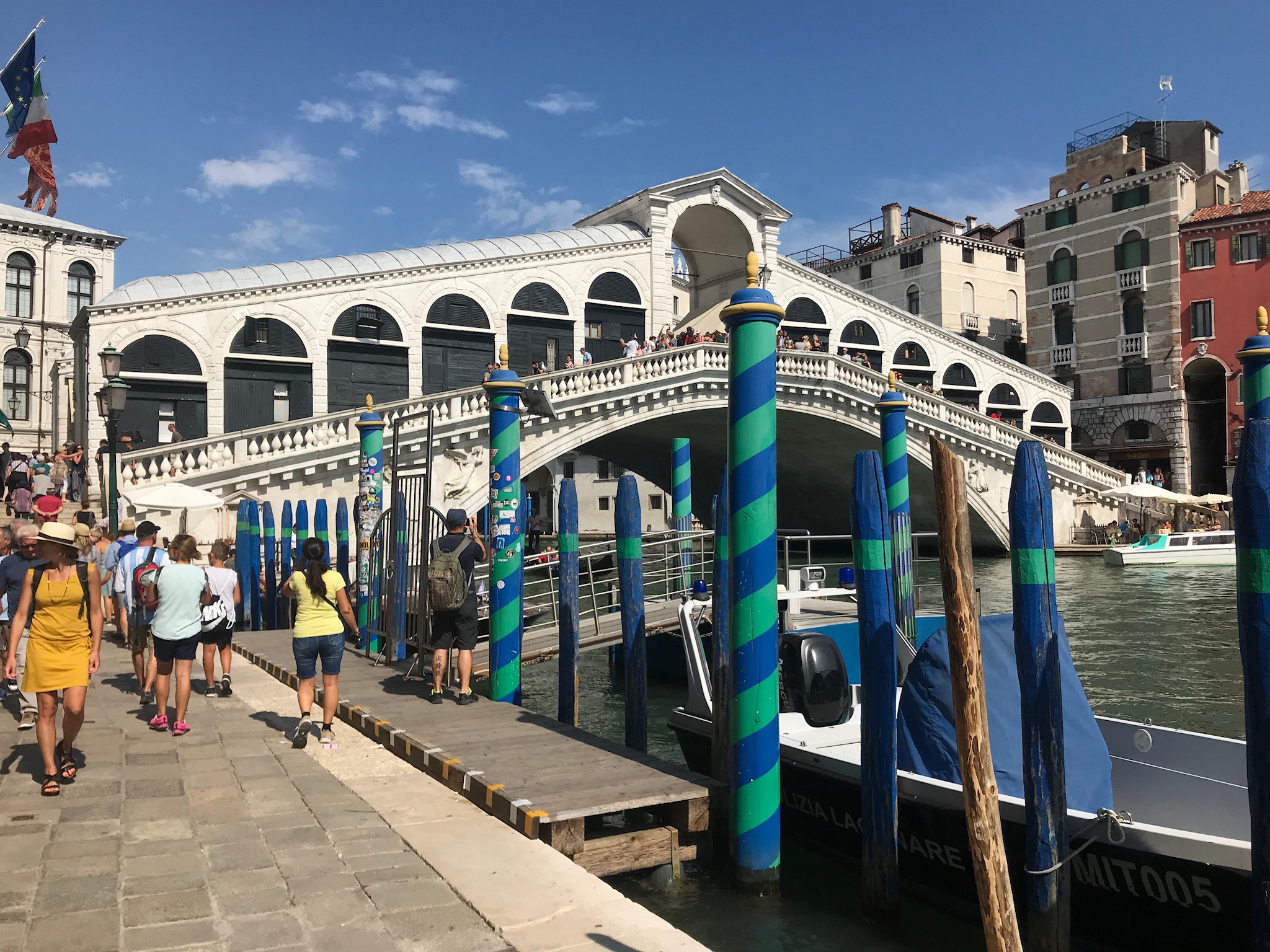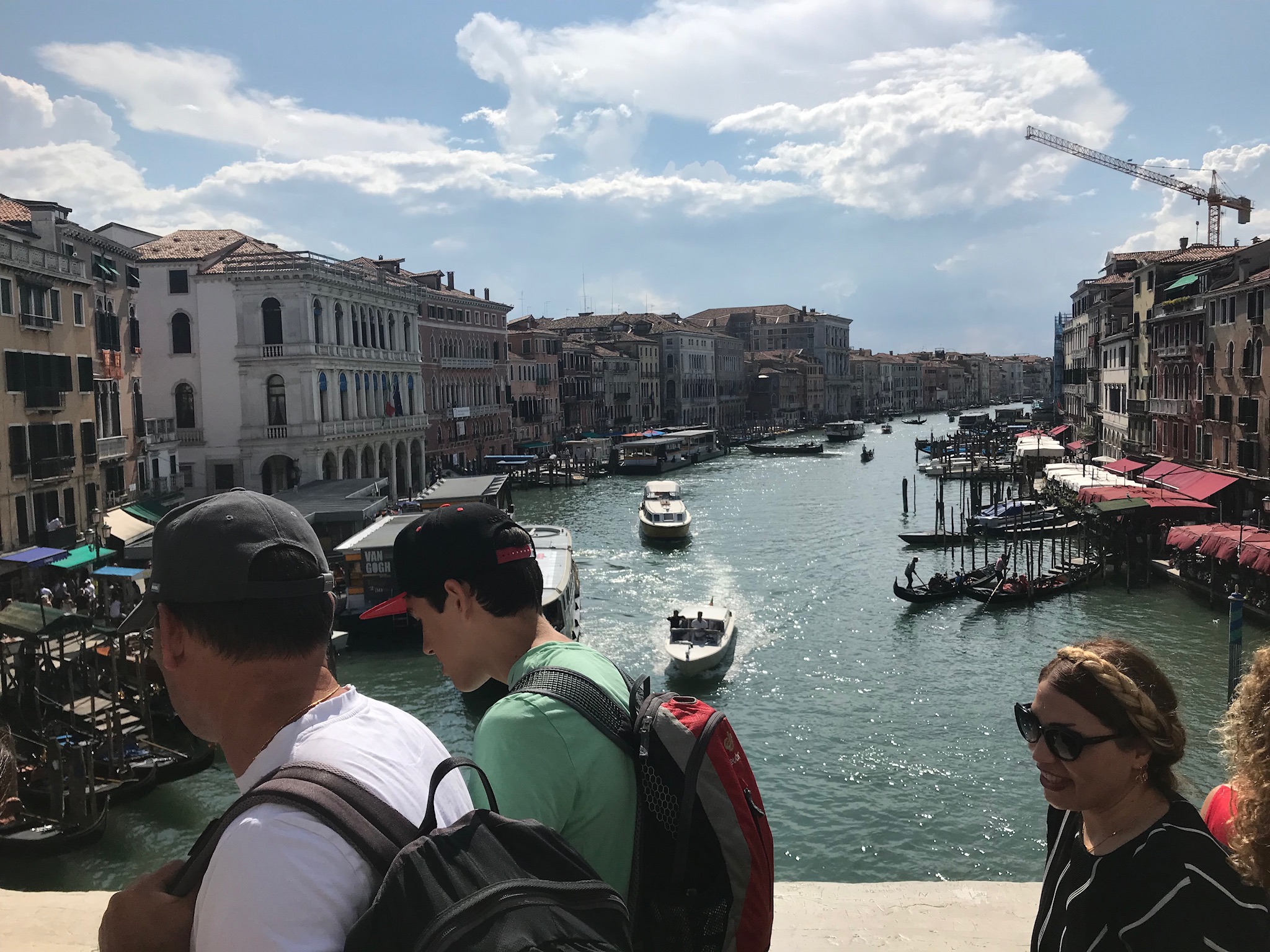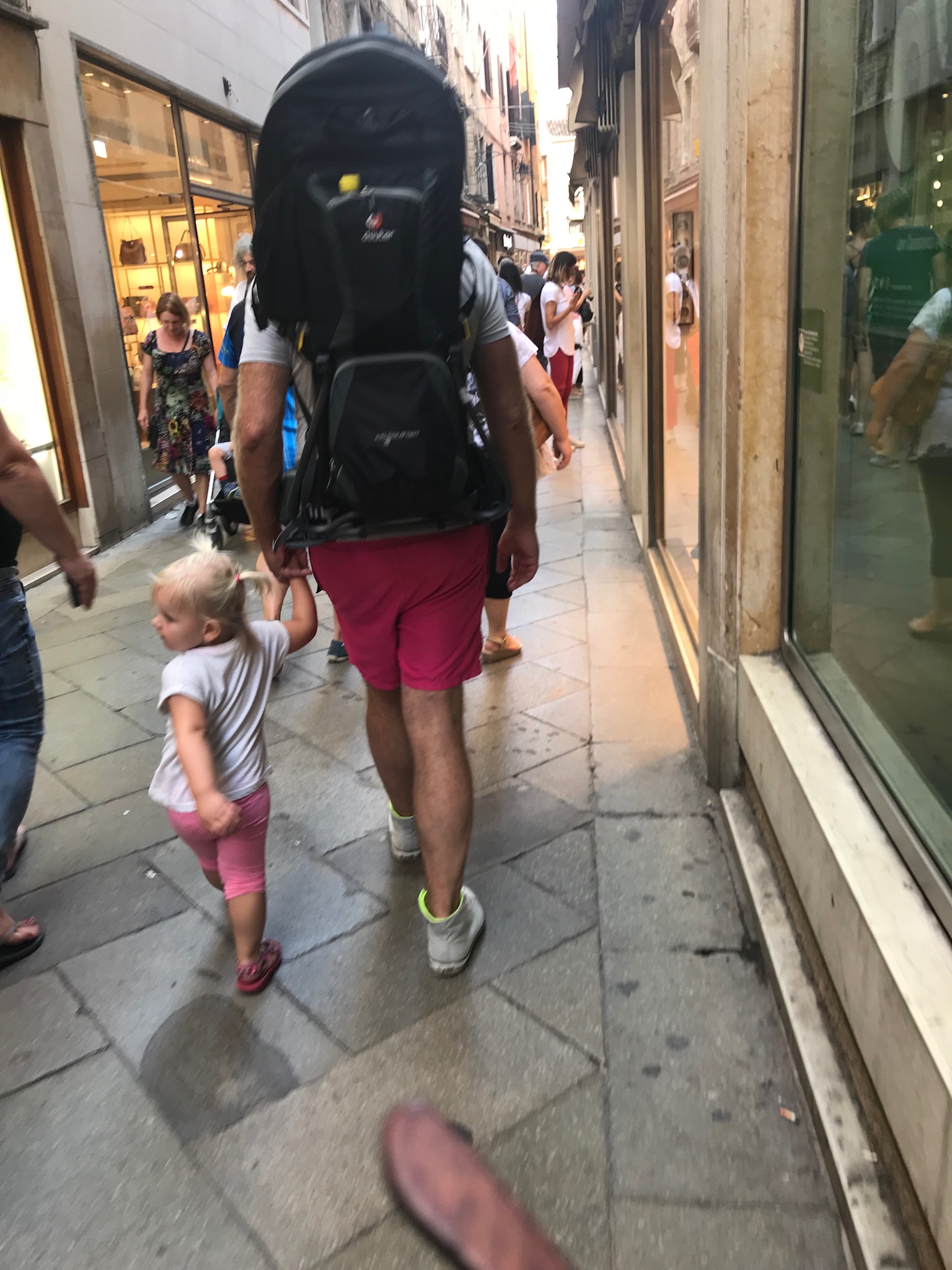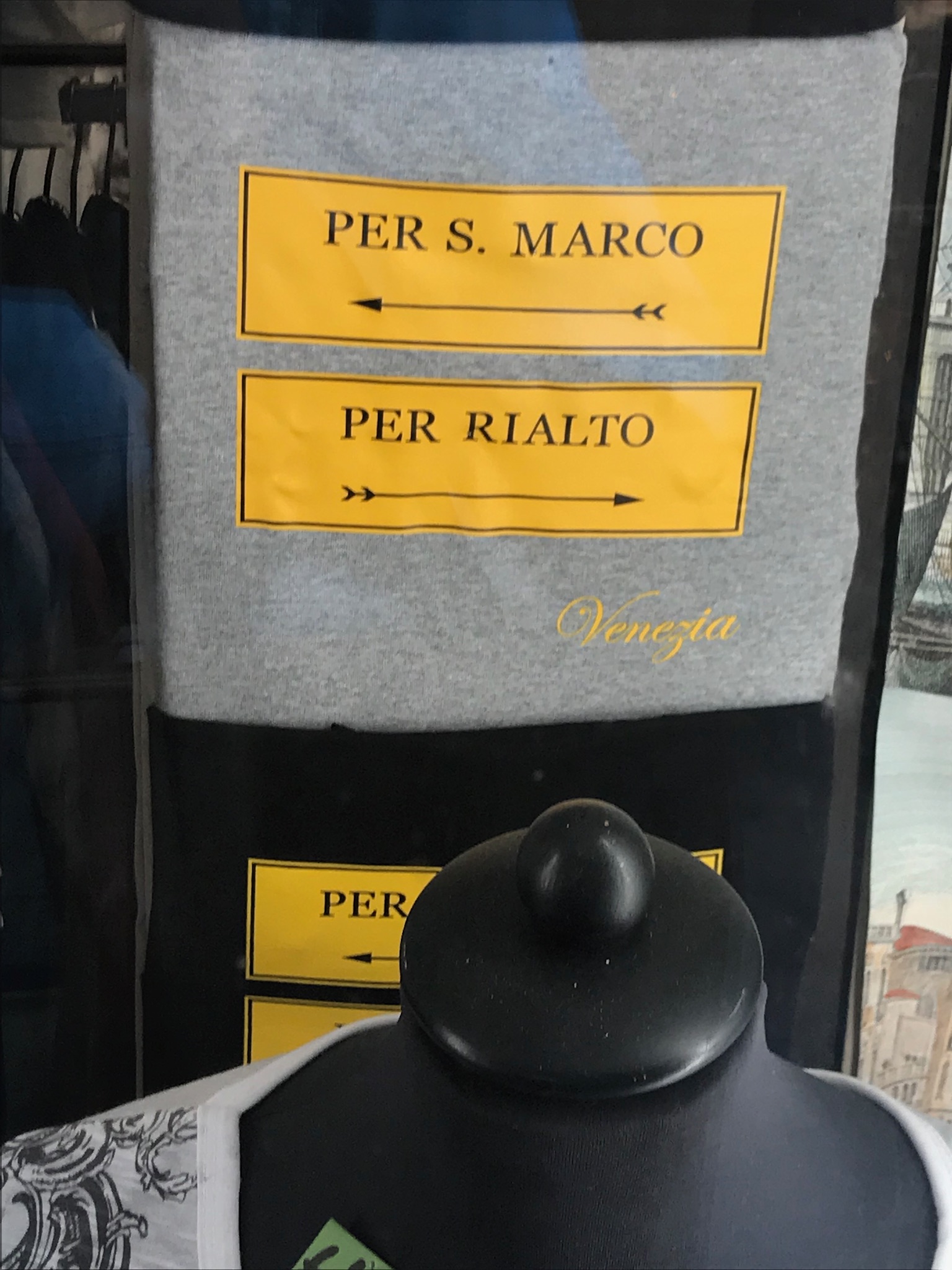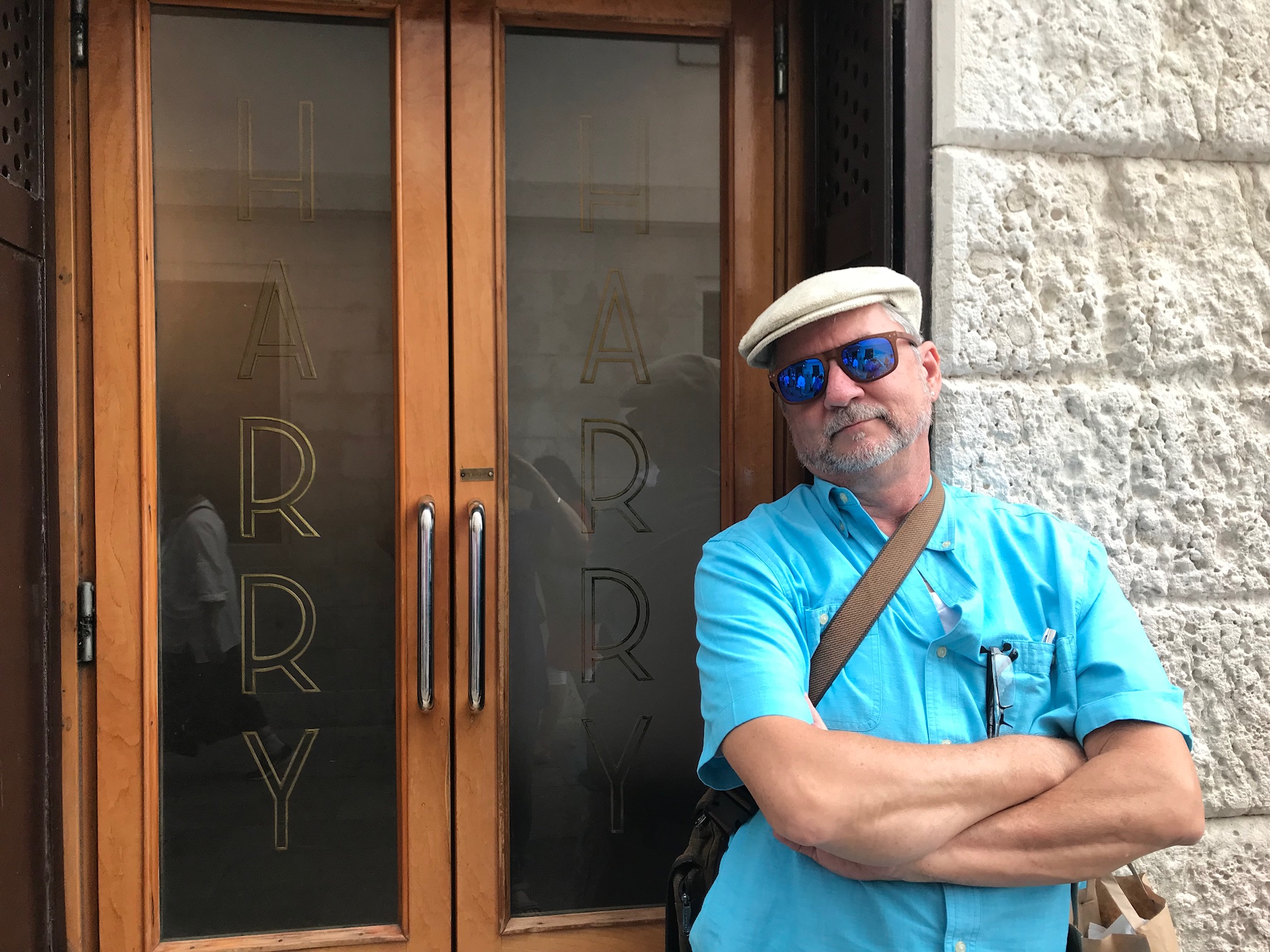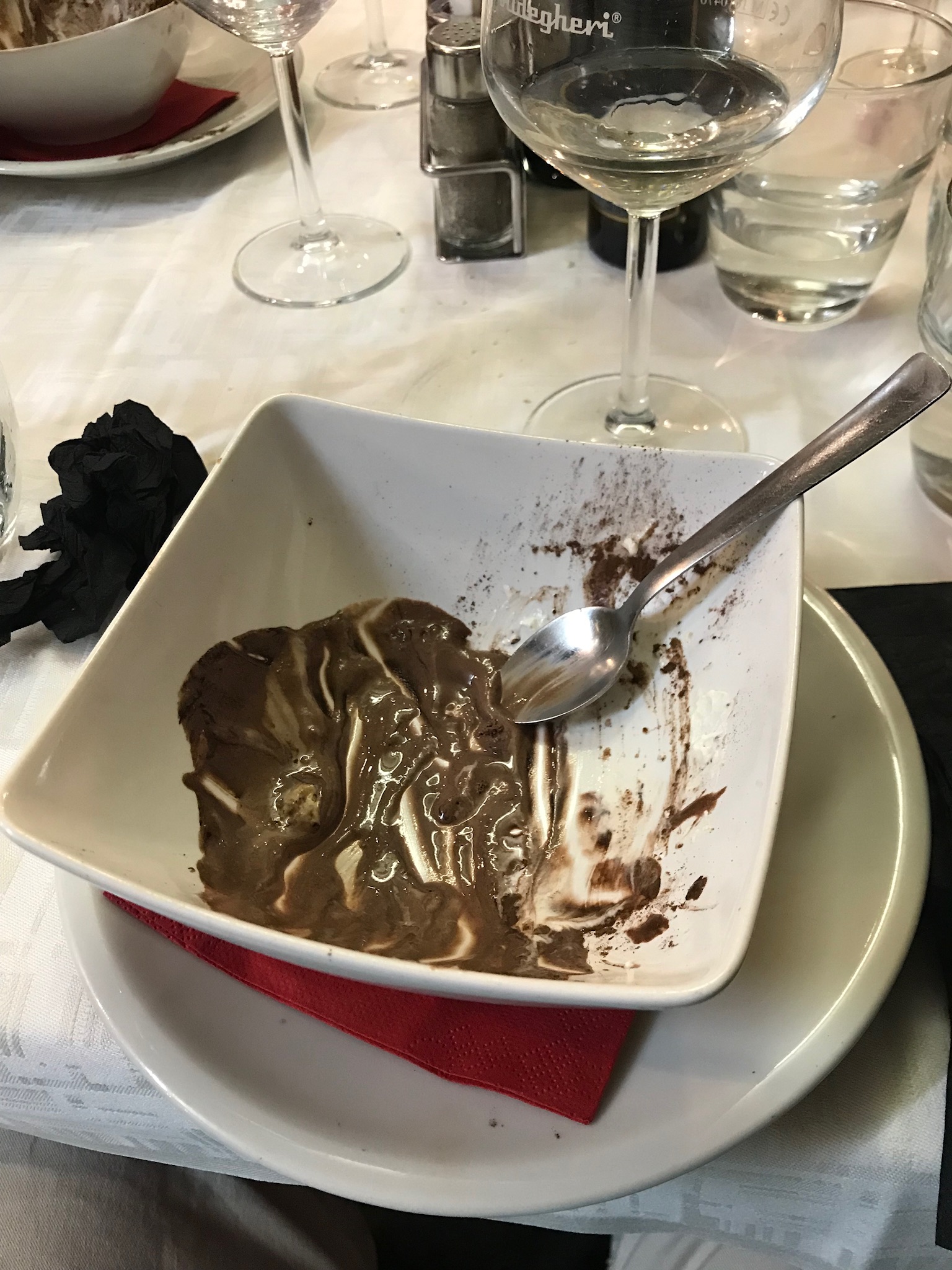Finally, we have my Pro Tips that I learned about traveling in Italy, especially on a guided bus tour.
Attire
You will read that Italians are snappy dressers, very fashion conscious, and this is true. Resist the urge to match them — they are merely strolling to lunch; you are on a forced march. Comfy shoes are a must; you will be on cobblestones most of the trip. Still, do better than most tourists I saw; there’s no point in being a slob.
Short shorts and bare shoulders are frowned upon — and in many cases forbidden — in the churches. Climate change has forced a moderation of that dress code as far as regular shorts go, but ladies should still expect to cover up. Most churches will sell paper shawls for one or two euros. Buy one and keep it for next time.
Meals
There is a structure to Italian meals, and menus are arranged around it:
- Antipasti: literally “before the meal”; appetizers. Do not fill up on them.
- Primi piatti: “first dishes”; pasta. Do not fill up on it, although we realized at some level that this is the point — fill up your tummy with inexpensive pasta so that you don’t have to spend that much on meat to feed your family
- Secondi piatti: meats, all kinds
- Desserts: yum, but if you want my advice, skip it and hit the gelato shop down the street
Do not be afraid to skip one or more courses. Order as you would back home. Also, if you’re on a tour and are being served all the courses, do not be afraid to leave pasta on your plate. It’s not rude, and there’s no point in gorging yourself.
Ask for cacio e pepe, pasta with cheese and black pepper. You won’t regret it.
Order the house wine.
Floor numbering
We have first floor, second floor, etc., and basement — they start with 0 floor, then 1st floor, 2nd floor, etc., and basement is -1.
Write down your hotel room number in your Waste Book. That way you will avoid swiping your card over and over and wondering why the door isn’t opening when in fact you are on the wrong floor — 2nd floor was in Venice; Florence is 1st floor.
Italian
Learn the basics. Almost every person you run into speaks English very well, which will make you feel stupid, but you can at least learn to say “Good morning,” “Good evening,” and “Thank you.”
You will hear your tour guide say the word “allor” a lot; it’s a filler word, meaning variously “well then,” “so, OK,” “moving on,” that kind of thing.
Museum tickets
Ask about timed tickets for museums you are interested in. You get to go to the happy line and to avoid the sad line.
Money
Italians will not make change. They have an irrational aversion to it. If all you have to pay for a €6 item is a five and a fifty, they will take the five rather than break a €50 bill.
Also, the concept of taking your €50 bill and trading you smaller bills for it is utterly alien to them. They will not do it, not at the hotel, not at a shop, probably not even at a bank, although we didn’t get the chance to test that one.
They are also skittish about tipping. They will never ask for it and will even refuse it. One reason is that they are paid a living wage; another is that a small service charge is usually built into the bill at restaurants. You can round up the bill and that’s fine, but otherwise they are really uncomfortable with the practice. I gave a €5 bill as a tip to a taxi driver (I was so tired I wasn’t thinking straight) and he just held it and stared at me incredulously until I took it back, apologized, and left him a €2 coin instead, which he accepted with a shake of his head. A waiter in Vico Equense ran all the way from the restaurant to the place where we were meeting the hotel shuttle to return an item one of us had left behind and point blank refused a tip for doing so.
Keep a list of your purchases in your Waste Book. That way you can fill out the customs form upon reentering the U.S. without being afraid of being caught out trying to sneak in items you completely forgot you had purchased. (Both last year and this year, Customs at Hartsfield-Jackson were willing to take our word for it that we were not bringing more than $800 worth of stuff, but it’s better if you’re prepared to be honest if necessary.)
The Sun
If you’re lucky enough to have good weather, you will need something to keep the sun out of your eyes. I bought an umbrella in Venice because it looked like rain, but I used it the rest of the trip as a parasol.
I purposely didn’t take a straw hat because I didn’t want to deal with it on the plane or to crush it in packing. However, hats are for sale everywhere — consider buying one.
Sunscreen is important: you will be out in the sun much of most days.
Random
Google “how to use a bidet in Italy.” The rest is on you.


